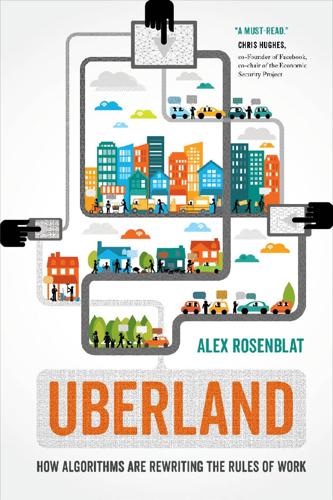
Uberland: How Algorithms Are Rewriting the Rules of Work
by
Alex Rosenblat
Published 22 Oct 2018
It’s no wonder that any number of Uber stakeholders might feel uneasy in their alliances with the company. After Uber and Lyft left Austin in 2016, I flew there to find out how drivers felt about being left behind. As I reported for Motherboard while conducting some of my fieldwork in spring 2016,33 Karl, a former Uber and Lyft driver, said, “They claim that it was because the background checks . . . would take too long and so on, but there is a time frame from now to February 2017 for that, so they had a lot of time to do all the background checks.” He signed up to work for GetMe, a local ridehail start-up, so he could keep working. “They [Uber and Lyft] didn’t need to shut down and leave the city like they did.”
…
Researchers found that users were active for 56 percent of the time on labor-intensive online platforms like Uber (as opposed to asset-intensive platforms, like Airbnb), and their reliance on it as a secondary source of income did not change over time.22 This could be because independent workers use their income to cover short-term expenses or to transition to other careers, as Hall and Krueger have argued regarding the high turnover of Uber drivers.23 One insight from my research may offer another explanation: some drivers hesitate to commit full time because they consider it a risky proposition, even if they earn more as drivers than they do working at their other jobs.24 And for some, gig work is a way to smooth over income volatility and unexpected expenses or gaps between jobs. Uber and Lyft send jobs to drivers who log in to work, and drivers are paid on time—weekly or occasionally through instant pay—which is no small thing. As a side gig, it can be used as an additive to, rather than a substitute for, other employment.25 Drivers Who Value Flexibility One of the promises of the gig economy is that workers have more flexibility to work when and as much as they want. That’s why many people start driving to earn extra income outside of their day jobs.26 Drivers for Uber and Lyft cite the flexibility—the freedom to take breaks when they want, pause to run errands, or go home and take a nap in the middle of the day—as one of the most important benefits of this job.
…
For Jin Deng, who formerly worked as a food delivery driver for a restaurant in New Jersey, driving for Uber and Lyft in New York City is a step up, although he’s quick to note that he drives because he didn’t go to school here and doesn’t have enough education to get a better job. Jin Deng was robbed twice in his last job, once with pepper spray that stung his eyes. As we talk, he reaches for the pocket on his cargo shorts, indicating that the thieves missed his wallet when they grabbed his bag of food and the cash he carried to make change for food deliveries. Now he’s driving a large Suburban for Uber and Lyft in New York City, and he finds that the cashless exchange of payments facilitated by the apps gives a huge boost to his perceived sense of safety on the job.

WTF?: What's the Future and Why It's Up to Us
by
Tim O'Reilly
Published 9 Oct 2017
In the long run, Uber and Lyft are not competing with taxicab companies, but with car ownership. After all, if you can summon a car and driver at low cost via the touch of a button on your phone, why should you bother owning one at all, especially if you live in the city? Uber and Lyft do for car ownership what music services like Spotify did for music CDs, and Netflix and Amazon Prime did for DVDs. They are replacing ownership with access. “I tell people I live in LA like it’s New York. Uber and Lyft are my public transit station,” said one customer in Los Angeles. Uber and Lyft also replace ownership with access for the companies themselves.
…
Drivers provide their own cars, earning additional income from a resource they have already paid for that is often idle, or allowing them to help pay for a resource that they are then able to use in other parts of their lives. Meanwhile, Uber and Lyft avoid the capital expense of owning their own fleets of cars. Passengers Who Expect Transportation On Demand. Much as Michael Schrage outlined in Who Do You Want Your Customers to Become?, Uber and Lyft are asking their consumers to become the kind of people who expect a car to be available as easily as they had previously come to expect access to online content. They are asking them to redraw their map of how the world works. Uber and Lyft recognized early on that many young urban professionals had already given up on owning a car, but for their business to spread beyond major urban centers and wealthy demographics, they would need more people to accept this premise and make the switch.
…
Unlike the taxi industry, which creates an artificial scarcity by issuing a limited number of “medallions,” Uber and Lyft use market mechanisms to find the optimum number of drivers, with an algorithm that raises prices if there are not enough drivers on the road in a particular location or at a particular time. While customers initially complained, using market forces to balance the competing desires of buyers and sellers has helped Uber and Lyft to achieve an equilibrium of supply and demand in close to real time. There are other signals in addition to surge pricing that Uber and Lyft use to tell drivers that more (or fewer) of them are needed.

After the Gig: How the Sharing Economy Got Hijacked and How to Win It Back
by
Juliet Schor
,
William Attwood-Charles
and
Mehmet Cansoy
Published 15 Mar 2020
And pooled services like UberPool and LyftLine barely made a difference: their additional miles are 2.6. City-specific estimates come to similar conclusions. A San Francisco study that looked at how things changed from 2010 (before Uber and Lyft) to 2016 found that VMT rose 13 percent, half of which is attributable to the platforms.32 By 2016, ride-hail vehicles accounted for 15 percent of all trips within the city. Even Uber and Lyft now admit they are increasing congestion. A 2019 report they funded found that while they are still a small proportion of total VMT (1 to 3 percent across six metropolitan regions), their impact can be as high as 8 percent (Boston) or 13 percent (San Francisco).33 These findings contrast with early claims.
…
By breaking the law, Uber and Lyft destroyed that viability, and we’re now seeing their drivers subjected to a similar race-to-the-bottom.27 And what the ideological high ground can’t accomplish, money can. The biggest platforms, again with Uber in the lead, have employed an army of lobbyists and public relations firms to fight even minor changes. In response to a modest proposed California law to fill the gap in insurance coverage when a driver has the app on but isn’t on a fare, Uber hired fourteen of the fifteen biggest Sacramento lobbying firms.28 In 2017 Uber and Lyft had more lobbyists than Amazon, Microsoft, and Walmart combined.29 Airbnb has also been active trying to stop laws that limit rental activity or mandate the collection of hotel and occupancy taxes.
…
Washington, DC: Kalmanowitz Initiative for Labor and the Working Poor, Georgetown University. https://lwp.georgetown.edu/wp-content/uploads/Uber-Workplace.pdf. White, Andy, and Dana Olsen. 2018. “Here’s Where Uber and Lyft Would Rank among the Decade’s Most Valuable VC-Backed IPOs.” Pitchbook: News and Analysis, October 16, 2018. https://pitchbook.com/news/articles/heres-where-uber-and-lyft-would-rank-among-the-decades-most-valuable-vc-backed-ipos. Whyte, William H. 1956. The Organization Man. New York: Simon and Schuster. Wilhelm, Alex. 2019. “Postmates Raises $225M More at $2.4B Valuation Despite Private IPO Filing.”

What's Yours Is Mine: Against the Sharing Economy
by
Tom Slee
Published 18 Nov 2015
Uber is ambitious: it has explored many variants on its driving services from carpooling to high-end luxury services, as well as delivery and logistics, but for now UberX makes up the bulk of its business. It makes sense to talk of Uber and Lyft in the same breath, despite their different images, because they have ended up offering essentially the same service. When, after a campaign by Peers and others, California became the first state to create a separate set of rules for what it called Transportation Network Companies (TNCs), Uber and Lyft were the main beneficiaries.21 The TNC framework has since been adopted by Colorado, as well as Seattle, Minneapolis, Austin, Houston, and Washington.
…
Racism manifests itself differently in different environments, and the better experience of black customers is an unintended side-effect of Uber’s system. Uber drivers are not told where to drive, so they may avoid what they consider as “sketchy” parts of town, and both Uber and Lyft have been accused of “redlining”: not providing services to poor and minority neighborhoods.68 Numerous comments on social media suggest that one of the appeals of Uber and Lyft to young and well-off early adopters was that the drivers matched their age, educational-level, and social background more than did taxi drivers. Instead of being driven by a middle-aged immigrant man who had 60 hours on the clock that week, you could be picked up by “a friend with a car,” more likely to be female, more likely to be well educated, and more likely to be white.69 As the companies have expanded, however, the driver population more closely matches taxi drivers and this opportunity to discriminate has faded.
…
But what comes out of this is that the real story is a long way from $90,000, even though that number is still out there (Guendelsberger refers to “that $90,000 a year figure that so many passengers asked about”). Uber drivers appear to take home about the same as a taxi driver once expenses are figured in, while Uber itself has stepped in and takes as much of the fare as do medallion holders. One of the complaints that taxi companies have against Uber and Lyft is that they are subject to different standards, and that the taxi standards are more onerous than those that the ridesharing companies have to follow. Uber maintains that its drivers are subject to a thorough screening process, but a series of assaults on the service has put this largely automated process under scrutiny.
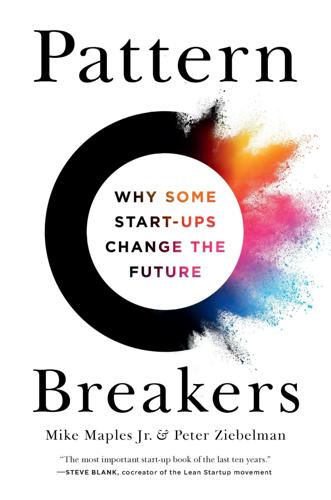
Pattern Breakers: Why Some Start-Ups Change the Future
by
Mike Maples
and
Peter Ziebelman
Published 8 Jul 2024
As a result, they continue with business as usual, unaware that the power to create radical change is there for the taking. Some founders have the insight to see these powers and harness them to create radical change. The insight behind Uber and Lyft was that it is possible to apply the sharing economy to cars. Just as Airbnb had allowed people to share an extra room in their houses, ridesharing start-ups like Uber and Lyft proposed to let people share an extra seat in their cars. It was possible, in other words, to radically change how people traveled from one place to another through an app that harnessed the power of GPS-enabled smartphones together with people’s willingness to share their location.
…
The inflections underpinning Uber and Lyft were not just minor; they were transformative. Their insight to apply those powerful advances to ridesharing acted as a multiplier effect. When you intertwine potent technological advancements with groundbreaking insights about how to harness them, the outcome is often transformative products that redefine industries. Before the new, foundational capabilities, nobody could have created a ridesharing network in the sense we understand them today. However, once those inflections were accessible, the insight uncovered by Uber and Lyft allowed them to usher in a service distinct from anything preceding it.
…
They achieved this through a combination of pattern-breaking ideas that were radically different and pattern-breaking actions that persuaded the rest of the world to think, feel, and act differently. Pattern-breaking ideas offer something radically different from anything that’s come before. At first, these ideas can seem crazy. Why would anyone stay in a stranger’s home? Yet Airbnb proved they would. Why would someone catch a ride in a stranger’s car? Uber and Lyft, having dispatched tens of billions of passenger rides, answered that question. How could 140-character “tweets” ignite the most explosive media revolution of the last two decades? X/Twitter, with its simplicity, transformed the media and the public square. Despite the initial strangeness of these transformative companies, their very uniqueness gave them enormous strength.
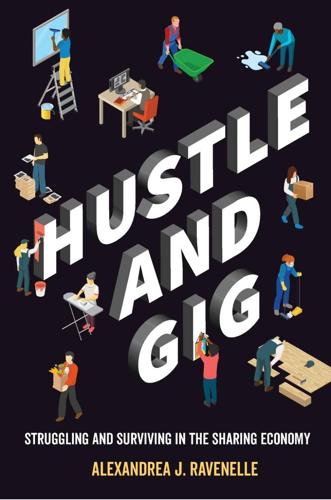
Hustle and Gig: Struggling and Surviving in the Sharing Economy
by
Alexandrea J. Ravenelle
Published 12 Mar 2019
In Sarah’s experience, TaskRabbit’s algorithm highlights people with high acceptance rates or high availability. “They want you on call for free,” she said, before describing her schedule instability as “frustrating. . . . [Y]ou are always thinking, ‘Oh, in five months I am going to be [sleeping] on a bench somewhere.’” Baran, twenty-eight, is a college student at a local university who drives for Uber and Lyft. In New York, app-based drivers have the same insurance and licensing requirements as taxi drivers, a cost that usually runs several thousand dollars. To sidestep this considerable start-up expense and the associated annual costs, some drivers rent a licensed, insured, and Uber-approved car through local services or utilize Uber’s fleet-owner and driver matching service.
…
Although early sites such as couchsurfing.com and ShareSomeSugar.com didn’t charge fees, most current “sharing economy” sites do charge them. An Airbnb host isn’t so much “sharing” her home or “hosting guests” as she is renting her home out. TaskRabbit assistants and Kitchensurfing chefs aren’t “sharing” their services but being paid. Likewise, even though Uber and Lyft describe themselves as “ride-sharing,” charging for private vehicle transportation is simply a taxi or chauffer service by any other name. While Lyft (slogan: “Your friend with a car”) originally encouraged riders to “sit in the front seat like a friend, rather than in the backseat like a fare,” such “friendship” didn’t eliminate the need to pay the fare.12 The reinvention of terms isn’t limited to the companies themselves but can also carry over into descriptions of the services by researchers.
…
Approximately half of the Uber drivers I interviewed were immigrants. An equal number of drivers identified as white (21 percent) and black (21 percent), while 14 percent described themselves as Hispanic and one driver was racially mixed.85 In the same way that a high percentage of cab drivers in New York are male (estimates range from 90 to 97 percent), all Uber and Lyft participants were male. Their ages ranged from twenty-two to fifty-nine, with 60 percent falling between twenty and thirty-nine years of age; the average age was thirty-six. Of those who answered education questions, 50 percent had at least a bachelor’s degree. Two participants listed their educational level as “some college,” one individual was currently enrolled in a local college, one had an associate’s degree, and one had a GED.

The Sharing Economy: The End of Employment and the Rise of Crowd-Based Capitalism
by
Arun Sundararajan
Published 12 May 2016
I’m pretty close with some hotel executives; they don’t seem to be overly concerned.” Indeed, as Alison Griswold from Slate magazine documents, the hotel industry in 2014–15 enjoyed their highest-ever levels of occupancy and average daily room prices.29 The same is not true of Uber and Lyft’s impact on traditional taxicabs. The key difference is that, rather than being merely a differentiated service, Uber and Lyft also display higher quality across the board on most dimensions that customer value, except perhaps the ability to hail a car on the street. This does not negate the point I’m making—the increase in variety will increase consumption.
…
Slate, July 6, 2015. http://www.slate.com/articles/business/moneybox/2015/07/airbnb_disrupting_hotels_it_hasn_t_happened_yet_and_both_are_thriving_what.html. 30. Jennifer Surane, “New York’s Taxi Medallion Business Is Hurting. Thanks to Uber and Lyft.” Skift, July 15, 2015. http://skift.com/2015/07/15/new-yorks-taxi-medallion-business-is-hurting-thanks-to-uber-and-lyft. 31. Josh Barro, “Taxi Mogul, Filing Bankruptcy, Sees Uber-Citibank Plot,” New York Times, July 22, 2015. http://www.nytimes.com/2015/07/23/upshot/taxi-mogul-filing-bankruptcy-sees-a-uber-citibank-plot.html?abt=0002&abg=1. 32. Andrey Fradkin, “Search Frictions and the Design of Online Marketplaces,” September 30, 2015. http://andreyfradkin.com/assets/SearchFrictions.pdf. 33.
…
Uber Technologies, Inc. et al https://dockets.justia.com/docket/california/candce/4:2013cv03826/269290. Judge Chen’s decision (filing #251) is available at https://docs.justia.com/cases/federal/district-courts/california/candce/3:2013cv03826/269290/251. 4. Quoted in Dan Levine and Edward Chan, “Uber and Lyft Fail to Convince Judges,” Business Insider, March 2015. http://www.businessinsider.com/uber-and-lyft-fail-to-convince-judges-their-employees-are-independent-contractors-2015-3#ixzz3UIFTYbVy. 5. I have heard Teran discuss this at two separate events in the second half of 2015: the TAP Conference in New York on October 1, and the White House Summit on Worker Voice, October 7.
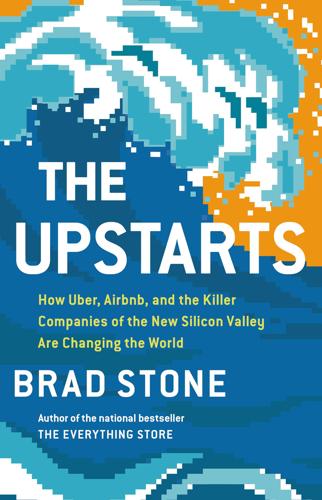
The Upstarts: How Uber, Airbnb, and the Killer Companies of the New Silicon Valley Are Changing the World
by
Brad Stone
Published 30 Jan 2017
In 2013, Boston plaintiff lawyer Shannon Liss-Riordan brought such lawsuits against Uber and Lyft in the two states where she thought the law was most favorable, California and Massachusetts. She had previously brought similar, largely unsuccessful cases against FedEx and several yellow-cab companies. Uber’s claim that it was facilitating a whole new kind of internet-enabled, on-demand work bothered her. “The mere fact that there is flexibility does not mean that the people who are doing the jobs shouldn’t get benefits and the protections of employment,” she says. “That is the reason we have these laws.” Both Uber and Lyft tenaciously fought against the cases, arguing that the great majority of their drivers didn’t actually consider themselves full-time chauffeurs and wanted to remain independent and free to take other work.
…
Uber agreed to pay as much as $100 million to a group of tens of thousands of drivers and to institute new policies, such as giving drivers explanations if they violated company rules and got kicked off the app and creating an appeals process for those decisions. But Uber and Lyft drivers were going to remain contractors. “Drivers value their independence—the freedom to push a button rather than punch a clock, to use Uber and Lyft simultaneously, to drive most of the week or for just a few hours,” wrote Kalanick in a blog post titled “Growing and Growing Up” that announced the settlement. He conceded that the company hadn’t “always done a good job working with drivers,” but reiterated that Uber presented “a new way of working: it’s about people having the freedom to start and stop work when they want, at the push of a button.”
…
Eric Newcomer and Olivia Zaleski, “Inside Uber’s Auto-Lease Machine, Where Almost Anyone Can Get a Car,” Bloomberg.com, May 31, 2016, http://www.bloomberg.com/news/articles/2016-05-31/inside-uber-s-auto-lease-machine-where-almost-anyone-can-get-a-car. 7. Ryan Lawler, “Uber Slashes UberX Fares in 16 Markets to Make It the Cheapest Car Service Available Anywhere,” TechCrunch, January 9, 2014, http://techcrunch.com/2014/01/09/big-uberx-price-cuts/. 8. Ellen Huet, “How Uber and Lyft Are Trying to Kill Each Other,” Forbes, May 30, 2014, http://www.forbes.com/sites/ellenhuet/2014/05/30/how-uber-and-lyft-are-trying-to-kill-each-other/#4a7e6b063ba8. 9. Carolyn Tyler, “Mother of Girl Fatally Struck by Uber Driver Speaks Out,” ABC7 News, December 9, 2014, http://abc7news.com/business/mother-of-girl-fatally-struck-by-uber-driver-speaks-out/429535/. 10.
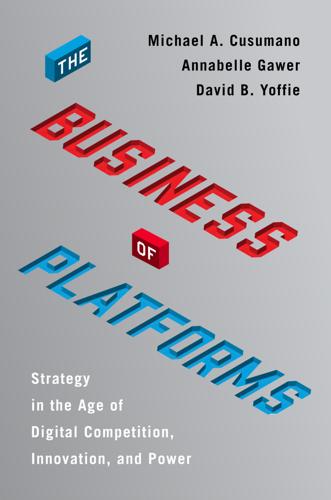
The Business of Platforms: Strategy in the Age of Digital Competition, Innovation, and Power
by
Michael A. Cusumano
,
Annabelle Gawer
and
David B. Yoffie
Published 6 May 2019
By mid-2015, Uber had expanded to 300 cities around the world and had signed up its one-millionth driver, including over 150,000 active UberX drivers in the United States, and claimed to cover 75 percent of the U.S. population.11 Lyft had expanded to 65 cities with 100,000 drivers, all in the United States, by March 2015.12 With Uber and Lyft in the market, competition for drivers and riders was fierce. Both Uber and Lyft aggressively recruited drivers, offering cash bonuses of up to $500 or even $1,000 for drivers who switched from another ride-sharing platform, including Sidecar. Current drivers also received bonuses by referring drivers from another platform. Riders received credits for their first ride and additional credits when they referred other riders. Uber and Lyft periodically cut fares to attract riders. Although the companies claimed that increased ridership would more than make up for the reduced fares in putting money in drivers’ pockets, they took additional steps to avoid alienating drivers when they cut fares.
…
The company anticipated that the majority of revenues going forward would come from deliveries of food, flowers, and even medical marijuana rather than rides, a tacit admission that it had lost its battle to compete with the larger and more well-known ride-hailing platforms Uber and Lyft.3 That pivot failed to pay off, and the company announced it would suspend operations entirely on December 31. The next month it announced that it had sold the bulk of its assets and licensed its intellectual property to General Motors, which was in the process of developing its own transportation service.4 Sidecar never became a household name. Its failure was nonetheless significant because Sidecar had pioneered the peer-to-peer ride-sharing model before Uber and Lyft transitioned their start-ups into the space. By 2015, ride-sharing platforms—where smartphone apps connected riders with nonprofessional drivers operating their personal vehicles—had become a pillar of the sharing, or gig, economy, despite the fact that such platforms had only existed for three years.
…
When Uber cut its fares by 20 percent in January 2014, for instance, it reduced its commission on each ride from 20 percent to 5 percent until April, when it raised its commission back to 20 percent on the new, lower fares. Lyft followed suit, dropping its fares by 20 percent in April 2014, and reducing its commission to zero. On and off again subsidies for drivers increased the number available on both Uber and Lyft. Uber and Lyft both lost money as they pursued aggressive growth strategies and incurred enormous costs just to find and replace drivers. For example, as we noted in Chapter 3, Uber in 2017 lost $4.5 billion despite gross booking revenues of $37 billion. Although Lyft and Uber were primarily targeting each other in their aggressive strategies, Sidecar was caught in the cross fire and attempted to match some of its rivals’ tactics to induce more drivers to use its platform.

Ghost Road: Beyond the Driverless Car
by
Anthony M. Townsend
Published 15 Jun 2020
Take San Francisco, for instance, ride-hail’s birthplace and the city where people have most eagerly embraced it. By 2016, one-quarter of all vehicle congestion citywide was blamed on Uber and Lyft’s fleets. Fully one-half of the increase in traffic since 2010 was attributed to the ride-hail giants. More alarming than the overall trend were the localized spikes. In the city’s downtown financial district, for instance, Uber and Lyft accounted for a whopping 73 percent of the increased traffic in recent years. Reprogramming mobility had eliminated a decade’s worth of painstaking work by transit agencies, cycling advocates, and walkability planners to reduce auto use.
…
As cyberpunk novelist William Gibson once famously said, “The future is already here—it’s just not very evenly distributed.” The first changes we notice will occur in taxis. Most market analysts agree that all taxis in the industrialized nations will be automated by 2030. In the US, that’s 300,000 vehicles. Add in all the Ubers and Lyfts and the total is closer to 1,000,000 in all. Swarming from our airports and resorts through our most beloved downtowns, driverless cabs could become the face of automation for a generation, and the gateway drug to driverless mobility for billions of passengers every year. The arrival of driverless cabs could radically change consumers’ perception of cars.
…
The scheme seemed too crazy to work—until it did. And with its decentralized approach to rebalancing, Bird’s scooter network expanded even more rapidly than dockless bike-share systems had the previous summer. There was a big problem though. Bird soon found itself with the same challenge confronting ridehail operators Uber and Lyft. Workers were taking home all the profits. Here’s where automation comes in. The Google gang’s facetious scenario incorrectly assumed that the killer app for self-driving bikes was hauling lazy people around. The shift to dockless revealed something altogether. Automation was the key to corralling thousands of wayward rides on the cheap.

Nothing but Net: 10 Timeless Stock-Picking Lessons From One of Wall Street’s Top Tech Analysts
by
Mark Mahaney
Published 9 Nov 2021
Although the Covid-19 crisis did have a materially negative impact on demand for the two leading US ridesharing services, Uber and Lyft shares were under pressure long before the pandemic because of the large losses both companies were running. In 2019, Lyft generated $2.6 billion in net income loss, while Uber generated $8.6 billion in net loss. These loss levels were practically unprecedented. And in the quarters post their IPOs, there was substantial uncertainty whether Uber and Lyft would ever be profitable. That uncertainty was exactly what Brown’s comments captured. It is striking that UBER then traded up almost 70% in 2020.
…
I tend to weigh four factors most heavily in coming up with the best comps for a profitless company: scale (companies with similar-sized revenue bases), growth (companies with similar revenue growth outlooks), gross margin, and long-term operating or EBITDA margin potential. Rarely are there perfect comps, but usually there are enough companies to come up with a reasonable range of multiples that can help determine whether a profitless company’s valuation is ballpark reasonable, at least based on comps. Uber and Lyft This brings us back to Uber and Lyft and the “fantasy valuation” that we talked about at the start of this lesson. Again, both these companies went public in 2019 in the wake of substantial losses. Neither company was expected to generate a material profit in the near future. The 10-year DCF I published in my UBER initiation report didn’t have EBITDA or free cash flow turning positive until 2023.
…
As a rule of thumb, a company with a single-digit percentage share of a large TAM might be an ideal candidate for tech investors to consider. TAMs can be expanded. By removing friction and by adding new use cases, TAMs can be made larger. That’s essentially what Uber and Lyft did over the years. By lowering prices, increasing the number of drivers on its platform, reducing wait times, and making payments and tipping seamless, Uber and Lyft expanded the use cases for and the appeal of ridesharing. There are also two specific steps that companies can take to expand their TAMs—expand into new geographic markets and generate new revenue streams. Sometimes TAMs are hard to ascertain, especially when a traditional industry is being disrupted, and creative new approaches are required.

Road to Nowhere: What Silicon Valley Gets Wrong About the Future of Transportation
by
Paris Marx
Published 4 Jul 2022
In September 2019, the decision was codified into law when California’s state legislature passed Assembly Bill 5, which set a deadline of January 1, 2020, for employers to reclassify their workers—and the emphasis was placed on companies in the gig economy, including Uber and Lyft. January 1 came and went without gig workers’ status changing, but they kept pushing lawmakers to ensure the law was observed. In May 2020, California’s attorney general and the city attorneys for San Francisco, Los Angeles, and San Diego took Uber and Lyft to court for misclassifying their workers, and the following month the PUC ruled that drivers for Uber and Lyft were employees, not contractors. On August 10, a judge ruled that the companies had ten days to reclassify their workers as employees, but at the last minute the ruling was delayed until after the election on November 3.
…
The medallions cost $250,000 and drivers had to scrape together a 5 percent deposit, but the city promised them it was a safe investment. Yet, just a few years after drivers had taken on those large debts, Uber and Lyft entered the market and the city did not hold up its end of the bargain. Not only did taxi drivers’ lives fall apart in the years following the swift transformation of their industry to serve the interests of multinational ride-hailing companies, but some felt there was no getting out of the hole they then found themselves in. A driver in Chicago told NBC News in 2018 that he had colleagues die of heart attacks and strokes after Uber and Lyft left them in dire financial straits. That same year, four taxi drivers, three livery drivers, and an Uber driver committed suicide in New York City.21 The most high-profile of those suicides was that of Douglas Schifter.
…
In Boston, it was estimated that 54 percent of the trips that users took on ride-hailing services would have been made by taking transit, cycling, or walking if the services had not been available, and 5 percent of trips would not have happened at all.12 Meanwhile, a larger survey that covered Boston, Chicago, Los Angeles, New York, San Francisco, Seattle, and Washington, DC similarly found that between 49 and 61 percent of trips on ride-hailing services pulled people from those more efficient transport modes or would not have happened if ride-hailing services had not been available. The researchers also found that people using Uber were very unlikely to get rid of their personal vehicles.13 This shows that Uber is not reducing congestion or vehicle ownership, and it is also unlikely to reduce transport emissions or to complement traditional public transit. All the Uber and Lyft vehicles that flooded North American streets also made transit services less reliable and less efficient. Buses get stuck in traffic more often and, naturally, riders then start to look for alternatives. In Toronto, less than half of ride-hailing users had a transit pass, compared to just over one-third in Boston,14 and a study of twenty-two US cities estimated that the entry of Uber or Lyft reduced the ridership of buses and heavy rail every year they operated.15 It should go without saying that taking people from transit and putting them in cars not only makes traffic worse, it also increases the environmental footprint of a trip.

Blood in the Machine: The Origins of the Rebellion Against Big Tech
by
Brian Merchant
Published 25 Sep 2023
I dove into the archives, interviewed historians, spent time with Luddite scholars—I even lodged with one, in an old weaver’s cottage—and tried to picture this world in the throes of change. To bring the past into dialogue with the present, I interviewed historians of automation and artificial intelligence, attended worker protests against Uber and Lyft, and stopped by then presidential candidate Andrew Yang’s campaign headquarters to hear him raise the specter of the robot jobs apocalypse. I found a ripping tale of unlikely heroes and antiheroes, of fearsome rebellion, of oath-bound secret societies and the spies sent to infiltrate them, of the fickle allegiances of celebrities like Lord Byron, and of the violent royal rage that would culminate in the largest domestic military occupation in Britain’s history.
…
“We’ve had some initial fights over autonomous vehicles already,” de Blasio said; companies that want to come onto the streets of New York that we would not allow for safety reasons alone, that might have a huge negative impact, employment-wise. But on just the for-hire vehicle sector, you know, Uber and Lyft—it’s not automation in some ways in the fullest sense, obviously, but simply a new technology that automated some functions—and had a massive dislocating impact on our transportation sector. South Korea is so far the only country to institute something akin to a robot tax. The nation eliminated incentives previously offered to companies investing in technology, but only for automation tech.
…
Bill Gates’s lawyer, John Warden, explained to listeners unversed in English history that the Luddites were a band of workers who smashed machines “to arrest the march of progress driven by science and technology.” In 2014, conservative commentators applied the Luddite label to the taxi lobby when it sought to slow the (regulation-skirting) rise of Uber and Lyft—the label was applied derisively and mockingly, and implied the efforts were doomed to fail. “I don’t know many people who still wear hand-sewn garments,” one columnist sneered.2 Part of the reason that so much derision is heaped on the Luddites is that it’s easy to look around today and see the outcomes of their lost battle.

Humans as a Service: The Promise and Perils of Work in the Gig Economy
by
Jeremias Prassl
Published 7 May 2018
We return to a legal analysis of these terms in Chapter 5. 50. Julia Tomassetti, ‘Does Uber redefine the firm? The postindustrial corporation and advanced information technology’ (2016) 34(1) Hofstra Labor and Employment Law Journal 239, 293: Uber and Lyft sublimate their agency in the production of ride services into algo- rithms, programming, and technology management. The metaphor of the ‘platform’ transforms Uber and Lyft from subjects into spaces. It evokes a passive space to be inhabited by active agents—drivers and passengers. For example, Lyft argues that drivers’ ‘low ratings [are] given by passengers, not Lyft. Uber argued that passengers, and not Uber, controlled drivers’ work.
…
cc/VX4Q-77CT; Josh Dzieza, ‘The rating game: how Uber and its peers turned us into horrible bosses’, The Verge (28 October 2015), http://www.theverge. com/2015/10/28/9625968/rating-system-on-demand-economy-uber-olive- garden, archived at https://perma.cc/CVU4-GEV7; Benjamin Sachs, ‘Uber and Lyft: customer reviews and the right to control’, On Labor (20 May 2015), http://onlabor.org/2015/05/20/uber-and-lyft-customer-reviews-and-the- right-to-control/, archived at https://perma.cc/9TNM-Y95X 52. Josh Dzieza, ‘The rating game: how Uber and its peers turned us into horrible bosses’, The Verge (28 October 2015), http://www.theverge.com/2015/10/28/ 9625968/rating-system-on-demand-economy-uber-olive-garden, archived at https://perma.cc/CVU4-GEV7 53.
…
The former approach can be key to platforms’ rapid expansion, particularly in the transportation industry, in which many operators relied on a strategy of ‘asking forgiveness, not permission’. Details vary between jurisdictions and across different cities, but the fundamental question tends to be the same: should the same regulatory and licensing regimes apply to traditional transport operators and platforms such as Uber and Lyft? Historically, national and local regulators have imposed a large number of requirements on taxi companies, from licensing caps and price control, to * * * 36 Doublespeak driver background checks and general access conditions. Platforms argue that their operations are fundamentally different and thus should not be subject to the same requirements.

The Passenger
by
AA.VV.
Published 23 May 2022
An independent contractor must control their own labor and time, engage in similar work on a regular basis, and be providing a service outside the scope of the business they are contracting with. Gig-economy businesses such as Uber and Lyft lobbied to have their companies placed on the exemptions list but were denied. They weren’t alone in their disapproval; musicians and truck drivers also often fell between the cracks of typical employment classification, and they, too, sought special consideration lest their professions be adversely affected. But once refused inclusion in the exemption list, Uber and Lyft took a different stance altogether; they chose to disregard AB5 in its entirety and refused to reclassify gig workers as employees.
…
When he finally found it, he thought nothing of locating his New Helvetia, the future state capitol, in the embrace of not one river but two, the worst floodplain in all of California. The city of Sacramento, girdled by levees and erected on a twelve-foot (3.5-meter) bed of borrowed earth, its gilded statehouse stabbing at sun, could not have looked more fitting and imperiled 180 years later. Protests against Uber and Lyft at Uber’s headquarters in San Francisco. Ballot-Box Blues: The Indirect Road to Direct Democracy Direct democracy in California takes many forms, sometimes unexpected, and the results of the various ballot initiatives are not always foregone conclusions. Here we take a look at this essential democratic tool through two of the most controversial propositions of recent times.
…
But once refused inclusion in the exemption list, Uber and Lyft took a different stance altogether; they chose to disregard AB5 in its entirety and refused to reclassify gig workers as employees. In turn, the California attorney general sued the rideshare companies, and in the summer of 2020 the court ruled against Uber and Lyft and said that they were misclassifying gig workers as independent contractors. On 10 August 2020, the companies were given ten days to comply with AB5, but they threatened to shut down their rideshare services across the state. Through the app, users were sent an ominous message declaring services to be terminated across California on 20 August. On that date, the companies announced they were granted an extension by the court until 4 November.
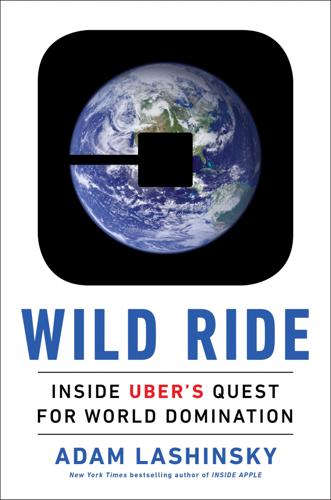
Wild Ride: Inside Uber's Quest for World Domination
by
Adam Lashinsky
Published 31 Mar 2017
He says he earned about $1.50 per mile when he started out. That rate dropped to $1.20 and then a mere 90 cents, which explains his surge-only practice. On the other hand, Snover deftly learned how to take advantage of the generous incentives Uber and Lyft have paid to build up their driver rolls. He said he got $500 for signing up his wife to drive for each service. Together with minimum-level bonuses, the two banked $1,400 from Uber and Lyft just for starting to drive. Many Uber drivers also follow a predictable path from excitement to disappointment to resignation. Bineyam Tesfaye, a former cabbie in Washington, D.C., started driving for Uber in 2016 and was pleased to be earning up to $1,200 a week.
…
There is similar national data for driver’s licenses: The number ticked up by four million from 2014 to 2015, also according to census data. As well, the Pew Research Center reported in 2016 that while 51 percent of Americans had heard of the concept of ridesharing, just 15 percent had used a service like Uber and Lyft, and another 33 percent were unfamiliar with them altogether. Surveys suggest that Uber has had a meaningful impact on the life of young adults in urban areas but hasn’t yet triggered the kind of societal change it frequently trumpets. Uber does represent a new opportunity for drivers, if a challenging one.
…
In a blog post addressed to the “Uber-Faithful,” the company warned that proposed rule changes would make Uber’s pricing model illegal (which it compared to telling hotels they couldn’t charge by the night), ban Uber drivers from downtown Denver (“TAXI protectionism at its finest”), and make it illegal to partner with limousine companies. Uber urged its supporters to contact the state’s governor, John Hickenlooper, directly. In 2014, Hickenlooper signed a bill that lightly regulated Uber and its competitors, effectively legalizing the service. These battles played out almost everywhere Uber—and Lyft, often behind it—went. In early 2014, for example, the news site BuzzFeed counted seventeen active regulatory fights in various U.S. cities, counties, and states. These included a protracted battle in New York City, where one of the bones of contention was the city’s demand that Uber share trip data with officials, and Orlando, where proposed rules attempted to force Uber and similar companies to charge 25 percent more than taxis.

Gigged: The End of the Job and the Future of Work
by
Sarah Kessler
Published 11 Jun 2018
“In the new world of on-demand everything,” wrote one critic of this system, “you’re either pampered, isolated royalty—or you’re a 21st century servant.”1 The price of this affordable royalty treatment was still falling. Under pressure to grow as quickly as possible, startups often discounted their services to attract customers and undercut competitors. Uber and Lyft engaged in a “price war” that would eventually in some cities make their services cheaper than public transportation. These price reductions were partially subsidized by venture capitalists who had invested billions in the companies, but they were also funded by cuts to drivers’ pay. As Uber and Lyft became prevalent, the startups continued to cut fares and increase commissions, claiming a higher percentage of each fare as a fee. Customers, if they were aware of any impact that this had on drivers, didn’t seem to care.
…
“The much-touted virtues of flexibility, independence and creativity offered by gig work might be true for some workers under some conditions,” she said in a speech at an annual conference for the New America Foundation in Washington, “but for many, the gig economy is simply the next step in a losing effort to build some economic security in a world where all the benefits are floating to the top 10 percent.”21 The speech wasn’t exactly about the gig economy: “The problems facing gig workers are much like the problems facing millions of other workers,” Warren noted. But the headlines were definitely about the gig economy: “Elizabeth Warren Takes on Uber, Lyft and the ‘Gig Economy’”;22 “Elizabeth Warren Calls for Increased Regulations on Uber, Lyft, and the ‘Gig Economy’”;23 “Elizabeth Warren Slams Uber and Lyft.”24 In her speech, Warren had acknowledged that talking about TaskRabbit, Uber, and Lyft was “very hip.” It seemed she was right. Sometimes politicians and labor leaders didn’t even need to frame their positions within the context of the gig economy to have them interpreted that way. The media did it for them. When the Labor Department’s Wage and Hour Division published new guidance on worker classification in July 2015 (which would later be rescinded by the Trump administration), it did not mention Uber.
…
“We’ve never had a layoff,” the application site bragged. It was a decent job, but not one that was likely to survive automation. In some industries, the gig economy serves as a stop-gap technology, with companies employing people in the cheapest way possible until, eventually, it becomes cheaper to buy a machine. This is the case with Uber and Lyft, for instance. “The reason Uber could be expensive is because you’re not just paying for the car—you’re paying for the other dude in the car,” Travis Kalanick said on stage at a conference in 2014. “When there’s no other dude in the car, the cost of taking an Uber anywhere becomes cheaper than owning a vehicle.”2 Uber started picking up passengers in its first tests of self-driving cars in Pittsburgh in 2016.
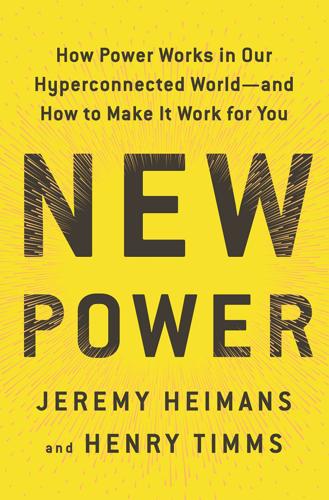
New Power: How Power Works in Our Hyperconnected World--And How to Make It Work for You
by
Jeremy Heimans
and
Henry Timms
Published 2 Apr 2018
Think of Twitter, which has been challenged because its super-participants (the influential super-users who dominate the platform) love its quirky functionality and culture, while those same qualities prevent growth among the vastly larger market of everyday participants, many of whom find Twitter noisy, confusing, and nasty. To dig into these dynamics a bit more deeply, let’s turn to the sharply contrasting ways that Uber and Lyft—two ridesharing apps with very similar businesses—are managing their new power communities. This juxtaposition tells us a lot about the connections among platforms, super-participants, and participants, and the factors that can bring them closer together, or drive them farther apart. ORGANIZING PICKETS VS. ORGANIZING PICNICS: THE BIG DIFFERENCE BETWEEN UBER AND LYFT The battle of Uber vs. Lyft has become the Coke vs. Pepsi of the new power economy. The two companies are both chasing the same drivers and riders.
…
They live in fierce and unfriendly competition, with Uber well ahead, having scaled much faster and expanded globally, leading to a valuation over ten times that of Lyft, but with Lyft posing a real threat in some of Uber’s biggest markets. The functionality of the two platforms is very similar. An Uber user feels thoroughly at home with the Lyft app and vice versa. But from the beginning, Uber and Lyft have positioned themselves very differently. Uber launched as “everyone’s private driver”—the pitch being that you, too, could slink into the back of a badass shiny black ride. Lyft came to life as “your friend with a car,” with a giant pink mustache amiably perched on the grille, riders hopping in the front seat and fist-bumping the driver a hello.
…
They created structures to get all three corners of the new power triangle allied in facing the challenge, with incentives for their drivers and the hashtag campaign for their passengers. Inductions and inducements “Rideshare Guy” Harry Campbell has been a driver for both companies. He explained to us that the stark difference in culture between Uber and Lyft plays out broadly in how they manage their drivers. For both firms, the ease of signing up as a driver is touted throughout their networks. (Compare the promise of “signing up takes less than four minutes” with the two years of deep study of the “knowledge” needed to become a London taxi driver—a powerful reminder of how our notions of expertise are changing in a new power world.)
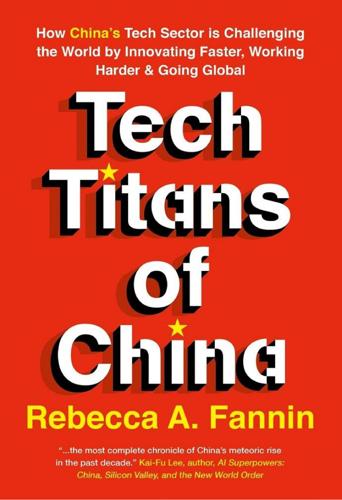
Tech Titans of China: How China's Tech Sector Is Challenging the World by Innovating Faster, Working Harder, and Going Global
by
Rebecca Fannin
Published 2 Sep 2019
The most acquisitive by far is Tencent with 146 deals and $25.7 billion of investment, followed by Alibaba with 51 deals and its part-owned Alipay with 2 deals and $3.7 billion in volume, and Baidu with 28 tech investments at $4.1 billion.2 China’s dragons have teamed up with top-tier US-based venture firms Mayfield and New Enterprise Associates, private equity firms General Atlantic and Carlyle Group, corporate strategic investors General Motors and Warner Brothers, and Japan’s acquisitive SoftBank. They’ve invested in US ride-hailing leaders Uber and Lyft, electric-carmaker Tesla, and augmented reality innovator Magic Leap. These Chinese tech titans have taken their cues directly from Silicon Valley venture capitalists. They’ve scoured the Valley for promising startups and based their operations not far from Menlo Park’s storied Sand Hill Road firms that backed winners Google, Facebook, and eBay.
…
The appeal of ride hailing is the ability to tap on a mobile screen and secure a driver to take you where you want to go for less than a taxi fare, then step out of the car without dealing with cash. Didi has proven to be an innovator in ride hailing, a segment that has gotten a lot of attention with the recent public offerings of Uber and Lyft in the United States. One Didi service sends a driver to your personal car when you’ve had too much to drink. Another is an SOS feature to activate in case of a hazard or emergency. Today, in China’s congested cities, it’s no longer a status symbol to own a car. It’s a pain because of traffic jams, parking hassles, and financial costs.
…
Not sure if Uber will be trying this out in the United States. The Traffic Brain In some other realms, Didi sees a brighter horizon. The company is focusing on expanding outside China, investing more in AI systems and autonomous driving, conducting research at a Silicon Valley lab, and planning an electric vehicle network of 10 million by 2028. Like Uber and Lyft experimenting with new self-driving thrills, Didi is testing self-driving vehicles in four cities in China and the United States and has a grand plan to launch driver-less taxis soon. Robo taxis are already a reality in China—and the United States. The self-driving highway is looking more and more jammed.

The Alternative: How to Build a Just Economy
by
Nick Romeo
Published 15 Jan 2024
Gould IV, “Will Voters Side with the Continued Exploitation of Gig Workers?,” Hill, October 15, 2020, https://thehill.com/opinion/finance/521146-will-voters-side-with-the-continued-exploitation-of-gig-workers/. 5. Ken Jacobs and Michael Reich, “What Would Uber and Lyft Owe to the State Unemployment Insurance Fund?,” (data brief), CWED, IRLE, UC Berkeley Labor Center, May 2020, https://laborcenter.berkeley.edu/pdf/2020/What-would-Uber-and-Lyft-owe-to-the-State-Unemployment-Insurance-Fund.pdf. 6. Julian Bingley, “Exploited Gig Workers Need Industry Reform Claims New Flinders University Study,” ZDNET, May 30, 2022, https://www.zdnet.com/article/exploited-gig-workers-need-industry-reform-claims-new-flinders-university-study/. 7.
…
Gilbert, of the forest brawls, is a restaurant manager. 5 Disrupting the Disruptors Gig Work as a Public Utility One October morning in 2020, a week before California voters passed Proposition 22, denying gig workers the legal status of employees and associated benefits such as paid sick time and unemployment insurance, an Oakland nonprofit hosted a talk entitled “Beyond the Gig Economy.” Companies such as Uber, Lyft, and DoorDash had spent over $200 million campaigning for Proposition 22, outspending their opponents by a factor of ten to one in the costliest ballot fight in the state’s history.1 For the companies, this was a good investment: the valuations of Uber and Lyft increased by $13 billion after the proposition passed.2 For their workers, it was a different story. A calculation by UC Berkeley researchers found that unpaid waiting time, underpayment of expenses, and unpaid payroll taxes made drivers’ guaranteed effective minimum wage after the measure passed $5.64 an hour.3 California gig workers could be penalized for declining jobs, for not delivering orders within a specific time frame, for missing shifts, regardless of the reason, or for not logging in with sufficient frequency.
…
A calculation by UC Berkeley researchers found that unpaid waiting time, underpayment of expenses, and unpaid payroll taxes made drivers’ guaranteed effective minimum wage after the measure passed $5.64 an hour.3 California gig workers could be penalized for declining jobs, for not delivering orders within a specific time frame, for missing shifts, regardless of the reason, or for not logging in with sufficient frequency. They lacked overtime, antidiscrimination protection, family leave, workers’ compensation, expense reimbursement, and other protections.4 The misclassification of workers also harmed the state budget: one study found that Uber and Lyft would have paid $413 million into the state unemployment insurance fund if workers had been classified as employees between 2014 and 2019.5 Gig workers face exploitation around the world. In Australia, an Uber Eats driver was fired for allegedly arriving ten minutes late to a delivery, after working ninety-six hours in one week.6 In Europe, 62 percent of gig workers in 2021 worried about how unfair feedback would affect their prospects for future work.7 Across America, 58 percent of full-time gig workers said that they would struggle to come up with $400 in an emergency.8 Responding to such issues, California’s state legislature had in 2019 reclassified some part-time and gig workers—including drivers for Uber, Lyft, and DoorDash—as employees.

Lonely Planet Pocket Reykjavík & Southwest Iceland
by
Lonely Planet
Airport Direct Slightly less-expensive bus to the city (3900kr to BSÍ bus terminal, 4990kr with hotel drop off). By Rental Car You can pick rentals up at the airport if exploring beyond Reykjavík (a car is unnecessary in the city centre). Pre-booking is best. By Taxi A taxi to the city (40 minutes) is relatively expensive at about 17,000kr. Uber and Lyft do not operate in Iceland. Other Points of Entry Reykjavík Domestic Airport This airport is in central Reykjavík, just 2km south of lake Tjörnin. Some flights to/from Greenland and the Faroe Islands fly here, as do sightseeing services and domestic flights. There’s a taxi rank at the airport.
…
Boats A weekly return ferry runs from northern Denmark to Seyðisfjörður in East Iceland, stopping at the Faroe Islands. Several cruise lines sail to Iceland from Canada, Europe and the UK. Getting Around Reykjavík is a small, walkable city. It's easy to get around without a car, and you can take the bus if you're heading across town. Uber and Lyft are not available, and there are no trains. For the countryside, nothing beats the freedom of a car, but tours can take you there, too. Walking The best way to get to know this compact city is on foot. Many of the city's top sights are within walking distance of one another. Bus Reykjavík has an extensive bus system operated by Strætó (bus.is) but it’s harder to get around by bus beyond Selfoss on the southern coast and Borgarnes to the north.
…
Parking Street parking in the city centre is limited and costs 600kr per hour in the Red/Pink zone 1 and 220kr per hour in the Blue, Green and Orange zones (zones 2, 3 and 4, respectively). The hours of operation vary (check reykjavik.is). Pay with coins, card (with PIN only) or Easypark and Parka apps. Parking outside the city centre is free. Vitatorg Car Park is a relatively central, covered lot. Taxis & Rideshares Uber and Lyft don't operate here. Book taxis online or via the Hreyfill app. Taxis are metered and can be pricey. Tipping is not expected. There are usually taxis outside bus stations, airports and bars on weekend nights. Iceland has a vibrant carpool scene. People submit routes they’re driving on samferda.net, and passengers can request rides and offer to split costs.

The Raging 2020s: Companies, Countries, People - and the Fight for Our Future
by
Alec Ross
Published 13 Sep 2021
By March 25, 2019, Rideshare Drivers United: Alexia Fernández Campbell, “Thousands of Uber Drivers Are Striking in Los Angeles,” Vox, March 25, 2019, https://www.vox.com/2019/3/25/18280718/uber-lyft-drivers-strike-la-los-angeles; Bryce Covert, “‘It’s Not Right’: Why Uber and Lyft Drivers Went on Strike,” Vox, May 9, 2019, https://www.vox.com/the-goods/2019/5/9/18538206/uber-lyft-strike-demands-ipo. On May 8, 2019, days before Uber: Covert, “Why Uber and Lyft Drivers Went on Strike,” https://www.vox.com/the-goods/2019/5/9/18538206/uber-lyft-strike-demands-ipo; Ben Chapman, “Uber Drivers in UK Cities Go on Strike in Protest over Pay and Workers’ Rights,” Independent, May 7, 2019, https://www.independent.co.uk/news/business/news/uber-drivers-strike-london-birmingham-glasgow-nottingham-pay-rights-a8898791.html.
…
You interact with the company only when something goes wrong with the app. For the most part, your marching orders—and your pay—are dictated by software. But just as technology platforms developed this new way to work, their contractors are pioneering new ways to organize. On August 22, 2017, more than one hundred Uber and Lyft drivers gathered outside Los Angeles International Airport (LAX) to protest for higher wages. In their effort to lower costs for passengers, the companies had reduced the pay rates for drivers. Between 2013 and 2017, rideshare drivers across the country had seen their monthly earnings fall more than 50 percent.
…
I’m going to ask you, what is your time worth?” Like many other grassroots initiatives, the protest was organized through a Facebook page. In the following months, the organizers of the event came together to form a new group called Rideshare Drivers United (RDU), with the goal of improving pay and work conditions for Uber and Lyft drivers. To advance the cause, the group needed to build its membership, and that required connecting with drivers who could go days without crossing paths with their fellow gig workers. In short, RDU needed to solve the proximity problem. To do so, the organizers turned to technology. If they were working through an app, why not strike through an app?

Stakeholder Capitalism: A Global Economy That Works for Progress, People and Planet
by
Klaus Schwab
Published 7 Jan 2021
GDP also goes up when banks post financial profits, but it remains stagnant when digital innovations get introduced that make our lives easier. 40 “The Treasury's Living Standards Framework,” New Zealand Government, December 2019, https://treasury.govt.nz/sites/default/files/2019-12/lsf-dashboard-update-dec19.pdf. 41 “New Zealand's Ardern Wins 2nd Term in Election Landslide,” Associated Press, October 2020, https://apnews.com/article/virus-outbreak-new-zealand-mosque-attacks-auckland-elections-new-zealand-b1ab788954f23f948d8b6c3258c02634. 42 “Uber and Lyft Drivers Guild Wins Historic Pay Rules,” Independent Drivers Guild, December 2018, https://drivingguild.org/uber-and-lyft-drivers-guild-wins-historic-pay-rules/. 43 I'm a New York City Uber Driver. The Pandemic Shows That My Industry Needs Fundamental Change or Drivers Will Never Recover,” Aziz Bah, Business Insider, July 2020, https://www.businessinsider.com/uber-lyft-drivers-covid-19-pandemic-virus-economy-right-bargain-2020-7?
…
Those who work for platforms or companies must have a say in the way these companies operate, how they treat their workers, and what responsibility they take toward society. There have been real-life experiments to assemble these stakeholders, such as when Rideshare Drivers United, a Californian advocacy group for drivers of Uber and Lyft, called for a global strike in May 2019, ahead of Uber's planned IPO. They encouraged drivers to shut off their mobile apps to make their case for more pay and better protections.15 But despite attracting a lot of media and political attention16 and leading to a one-off financial settlement for some drivers ahead of the IPO,17 the strike mostly revealed how hard it will be to replicate the influence taxi unions once had, as the structural demands of the drivers were not met.
…
Martin Wolf, Financial Times, April 2018, https://www.ft.com/content/e00099f0-3c19-11e8-b9f9-de94fa33a81e. 15 “The Worldwide Uber Strike Is a Key Test for the Gig Economy,” Alexia Fernandez Campbell, Vox, May 219, https://www.vox.com/2019/5/8/18535367/uber-drivers-strike-2019-cities. 16 “Uber Pre IPO, 8th May, 2019 Global Strike Results,” RideShare Drivers United, May 2019, https://ridesharedriversunited.com/uber-pre-ipo-8th-may-2019-global-strike-results/. 17 “Worker or Independent Contractor? Uber Settles Driver Claims Before Disappointing IPO,” Forbes, May 2019, https://www.forbes.com/sites/kellyphillipserb/2019/05/13/worker-or-independent-contractor-uber-settles-driver-claims-before-disappointing-ipo/#7a157b93f39f. 18 “Uber and Lyft Drivers in California Will Remain Contractors”, Kate Conger, The New York Times, November 2020, https://www.nytimes.com/2020/11/04/technology/california-uber-lyft-prop-22.html. 19 “Are Political Parties in Trouble?” Patrick Liddiard, Wilson Center, December 2018, https://www.wilsoncenter.org/sites/default/files/media/documents/publication/happ_liddiard_are_political_parties_in_trouble_december_2018.pdf. 20 “A Deep Dive into Voter Turnout in Latin America,” Holly Sunderland, Americas Society / Council of the Americas, June 2018, https://www.as-coa.org/articles/chart-deep-dive-voter-turnout-latin-america. 21 “Historical Reported Voting Rates, Table A.1,” United States Census Bureau, https://www.census.gov/data/tables/time-series/demo/voting-and-registration/voting-historical-time-series.html. 22 “How to Correctly Understand the General Requirements of Recruiting Party Members?”
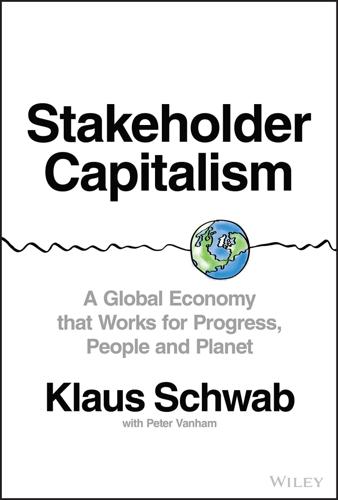
Stakeholder Capitalism: A Global Economy That Works for Progress, People and Planet
by
Klaus Schwab
and
Peter Vanham
Published 27 Jan 2021
GDP also goes up when banks post financial profits, but it remains stagnant when digital innovations get introduced that make our lives easier. 40 “The Treasury's Living Standards Framework,” New Zealand Government, December 2019, https://treasury.govt.nz/sites/default/files/2019-12/lsf-dashboard-update-dec19.pdf. 41 “New Zealand's Ardern Wins 2nd Term in Election Landslide,” Associated Press, October 2020, https://apnews.com/article/virus-outbreak-new-zealand-mosque-attacks-auckland-elections-new-zealand-b1ab788954f23f948d8b6c3258c02634. 42 “Uber and Lyft Drivers Guild Wins Historic Pay Rules,” Independent Drivers Guild, December 2018, https://drivingguild.org/uber-and-lyft-drivers-guild-wins-historic-pay-rules/. 43 I'm a New York City Uber Driver. The Pandemic Shows That My Industry Needs Fundamental Change or Drivers Will Never Recover,” Aziz Bah, Business Insider, July 2020, https://www.businessinsider.com/uber-lyft-drivers-covid-19-pandemic-virus-economy-right-bargain-2020-7?
…
Those who work for platforms or companies must have a say in the way these companies operate, how they treat their workers, and what responsibility they take toward society. There have been real-life experiments to assemble these stakeholders, such as when Rideshare Drivers United, a Californian advocacy group for drivers of Uber and Lyft, called for a global strike in May 2019, ahead of Uber's planned IPO. They encouraged drivers to shut off their mobile apps to make their case for more pay and better protections.15 But despite attracting a lot of media and political attention16 and leading to a one-off financial settlement for some drivers ahead of the IPO,17 the strike mostly revealed how hard it will be to replicate the influence taxi unions once had, as the structural demands of the drivers were not met.
…
Martin Wolf, Financial Times, April 2018, https://www.ft.com/content/e00099f0-3c19-11e8-b9f9-de94fa33a81e. 15 “The Worldwide Uber Strike Is a Key Test for the Gig Economy,” Alexia Fernandez Campbell, Vox, May 219, https://www.vox.com/2019/5/8/18535367/uber-drivers-strike-2019-cities. 16 “Uber Pre IPO, 8th May, 2019 Global Strike Results,” RideShare Drivers United, May 2019, https://ridesharedriversunited.com/uber-pre-ipo-8th-may-2019-global-strike-results/. 17 “Worker or Independent Contractor? Uber Settles Driver Claims Before Disappointing IPO,” Forbes, May 2019, https://www.forbes.com/sites/kellyphillipserb/2019/05/13/worker-or-independent-contractor-uber-settles-driver-claims-before-disappointing-ipo/#7a157b93f39f. 18 “Uber and Lyft Drivers in California Will Remain Contractors”, Kate Conger, The New York Times, November 2020, https://www.nytimes.com/2020/11/04/technology/california-uber-lyft-prop-22.html. 19 “Are Political Parties in Trouble?” Patrick Liddiard, Wilson Center, December 2018, https://www.wilsoncenter.org/sites/default/files/media/documents/publication/happ_liddiard_are_political_parties_in_trouble_december_2018.pdf. 20 “A Deep Dive into Voter Turnout in Latin America,” Holly Sunderland, Americas Society / Council of the Americas, June 2018, https://www.as-coa.org/articles/chart-deep-dive-voter-turnout-latin-america. 21 “Historical Reported Voting Rates, Table A.1,” United States Census Bureau, https://www.census.gov/data/tables/time-series/demo/voting-and-registration/voting-historical-time-series.html. 22 “How to Correctly Understand the General Requirements of Recruiting Party Members?”

Platform Revolution: How Networked Markets Are Transforming the Economy--And How to Make Them Work for You
by
Sangeet Paul Choudary
,
Marshall W. van Alstyne
and
Geoffrey G. Parker
Published 27 Mar 2016
BEYOND THE CORE INTERACTION As we’ve seen, platform design begins with the core interaction. But over time, successful platforms tend to scale by layering new interactions on top of the core interaction. In some cases, the gradual addition of new interactions is part of the long-term business plan that platform founders had in mind from the beginning. In early 2015, both Uber and Lyft began experimenting with a new ride-sharing service that complements their familiar call-a-taxi business model. The new services, known as UberPool and Lyft Line, allow two or more passengers traveling in the same direction to find one another and share a ride, thereby reducing their cost while increasing the revenues enjoyed by the driver.
…
The evolution of Uber, Lyft, and LinkedIn illustrates several of the ways that new interactions may be layered on top of the core interaction in a given platform: • By changing the value unit exchanged between existing users (as when LinkedIn shifted the basis of information exchange from user profiles to discussion posts) • By introducing a new category of users as either producers or consumers (as when LinkedIn invited recruiters and advertisers to join the platform as producers) • By allowing users to exchange new kinds of value units (as when Uber and Lyft made it possible for riders to share rides as well as arranging solo pickups) • By curating members of an existing user group to create a new category of users (as when LinkedIn designated certain participants as “thought leaders” and invited them to become producers of informational posts) Of course, not every new interaction is successful.
…
Multihoming occurs when users engage in similar types of interactions on more than one platform. A freelance professional who presents his credentials on two or more service marketing platforms, a music fan who downloads, stores, and shares tunes on more than one music site, and a driver who solicits rides through both Uber and Lyft all illustrate the phenomenon of multihoming. Platform businesses seek to discourage multihoming, since it facilitates switching—when a user abandons one platform in favor of another. Limiting multihoming is a cardinal competitive tactic for platforms. Here’s an example of how the effort to limit multihoming plays out in the new world of strategy.

System Error: Where Big Tech Went Wrong and How We Can Reboot
by
Rob Reich
,
Mehran Sahami
and
Jeremy M. Weinstein
Published 6 Sep 2021
A consortium of tech companies: Kari Paul and Julia Carrie Wong, “California Passes Prop 22 in a Major Victory for Uber and Lyft,” Guardian, November 4, 2020, https://www.theguardian.com/us-news/2020/nov/04/california-election-voters-prop-22-uber-lyft; Andrew J. Hawkins, “An Uber and Lyft Shutdown in California Looks Inevitable—Unless Voters Bail Them Out,” Verge, August 16, 2020, https://www.theverge.com/2020/8/16/21370828/uber-lyft-california-shutdown-drivers-classify-ballot-prop-22. “I doubt whether”: Andrew J. Hawkins, “Uber and Lyft Had an Edge in the Prop 22 Fight: Their Apps,” Verge, November 4, 2020, https://www.theverge.com/2020/11/4/21549760/uber-lyft-prop-22-win-vote-app-message-notifications.
…
Big tech is also spending millions to lobby European regulators to ward off efforts to limit digital advertising, contributing to what some call a “Washingtonization of Brussels.” Those lobbying efforts are unlikely to abate anytime soon, even as those companies come under greater antitrust scrutiny. One of the recent battlefronts in tech companies’ push to influence regulation comes from California’s effort to reclassify gig economy workers, such as Uber and Lyft drivers and delivery people for companies such as DoorDash, as employees rather than contractors of the firms they work for. In 2019, the California legislature passed Assembly Bill 5 (AB 5), with the aim of reclassifying thousands of independent contractors as employees, thereby guaranteeing them numerous benefits such as minimum wage, unemployment insurance, and sick leave.
…
The bill was a textbook case of government seeking to contain a negative externality created by a profit-seeking company. Assemblywoman Lorena Gonzalez, an author of the bill, described her motivation: “As lawmakers, we will not in good conscience allow free-riding businesses to continue to pass their own business costs onto taxpayers and workers.” Providing such benefits would cost the likes of Uber and Lyft millions of dollars. Their response was swift. First, they tried to get an injunction against the new law, delaying its effective date. They were denied. Then they threatened to shut down their operations in the state. In the meantime, they worked on producing a ballot initiative, Proposition 22, that defined “app-based transportation (rideshare) and delivery drivers as independent contractors and [the adoption of] labor and wage policies specific to app-based drivers and companies,” effectively exempting them from the requirements of AB 5.
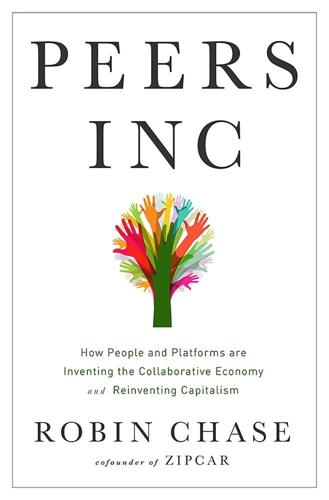
Peers Inc: How People and Platforms Are Inventing the Collaborative Economy and Reinventing Capitalism
by
Robin Chase
Published 14 May 2015
But nothing prevents drivers from agreeing to drive for both companies or prospective passengers from having both apps on their smartphones. It is my experience with Zipcar and its competitors that customers choose based on a combination of convenience (the technology), price, and proximity. Both Uber and Lyft have business models and apps that appear to work; can the market sustain both? Buying (bribing) users too early in a company’s life cycle will just eat up a lot of money and won’t produce anything lasting. Doing so later is indeed possible, but it can be a very risky strategy depending on a company’s ability to defend that lead.
…
Right now, the Internet and GPS are wholly open platforms. It is this openness that has made for the infinite variation in applications. But some Inc platforms don’t want a lot of variation or creativity or innovation, and so they constrain the types of participation possible. Prosper wants to make loans to creditworthy borrowers. Uber and Lyft want safe drivers with clean cars. Twitter, on the other hand, doesn’t much care what you do with those 140 characters. The French precursor to the Internet was called Minitel and was widely used. It didn’t share these key characteristics. You needed a license to publish on it, and it was in every way a corporate and government walled garden.
…
In IT governance, this is the point at which the enterprise (the government, the business, the institution) competes against mission delivery (its own goals). As I looked at the graph, it became evident: having some rules (some structure) encourages me to participate, but having too many rules (too much structure) discourages me. Taxi regulations are full of outdated rules; hence the success of Uber and Lyft. Washington, D.C.’s Taxicab Commission chairman, Ron Linton, said that “Uber’s service is illegal because its drivers do not give passengers a receipt as they exit.”11 That’s true only if you define a receipt as a piece of paper. Everyone who uses these services pays by credit card from a preestablished online account and receives an email receipt in real time, pretty much as they close the door of the vehicle.
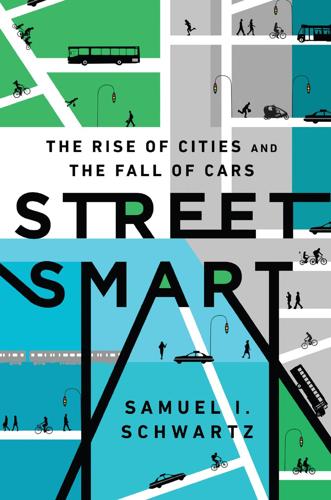
Street Smart: The Rise of Cities and the Fall of Cars
by
Samuel I. Schwartz
Published 17 Aug 2015
You don’t have to spend ten years learning the commuting ropes to know whether the train or bus you’re on is an express or a local, or even when it’s going to show up. You just need a smartphone. Smartphones are also all that’s needed to take advantage of other revolutionary new transportation options: ridesharing services like Via, car-sharing like Zipcar, and—especially—dispatchable taxi services like Uber and Lyft.c However, these and other cool new businesses didn’t create Millennial distaste for driving. They just exploited it. The question remains: why do Millennials find the automobile so much less desirable than their parents, grandparents, and great-grandparents did? Woodbridge, Virginia, is a small suburb about twenty miles south of Washington, DC.
…
However, even these aren’t the biggest concerns. If the goal is to improve mobility for city dwellers—to replace automobile dependency with active and multimodal transportation options—then it’s difficult to see how ride-matching can ever be more than a small part of the solution. That’s because the defining characteristic of the Ubers and Lyfts of the world (and of their very vocal cheerleaders) is hostility to regulation. For decades now, regulation has been getting very bad press, and not just from conservative politicians and libertarian economists. Everyone has a list of silly bureaucratic rules that have long outlived their usefulness, and I’m no exception.
…
Beyond that point—that is, beyond the maximum carrying capacity of a particular city’s streets—the numbers won’t add up to more mobility, but less. This is an unavoidable fact of life. No matter how sophisticated the technology becomes, public streets will remain a public resource with finite capacity. When ride-matching services like Uber and Lyft treat city streets as a free good, they’re just repeating the same conceptual mistake that the original champions of motordom did during the 1920s—the argument that, while streetcars and trains were responsible for maintenance of “their” right-of-way, streets were free for everyone. Smart cities shouldn’t insist on stupid regulation.
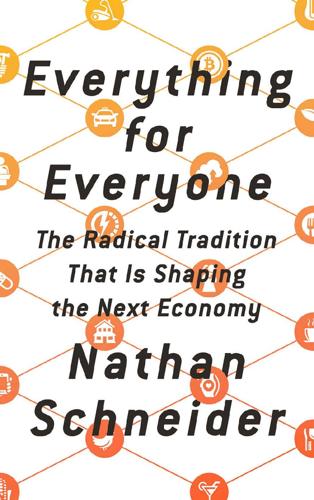
Everything for Everyone: The Radical Tradition That Is Shaping the Next Economy
by
Nathan Schneider
Published 10 Sep 2018
Municipal and national politicians have come to Scholz and me, among others, in search of policies to consider and evidence they will work. The city of Barcelona has taken steps to enshrine platform cooperativism into its economic strategies. After Austin, Texas, required Uber and Lyft drivers to perform standard safety screenings, the companies pulled their services from the city in May 2015, and the city council aided in the formation of a new co-op taxi company and a nonprofit ride-sharing app; the replacements worked so well that Uber and Lyft paid millions of dollars in lobbying to force their way back before Austin became an example. Meanwhile, UK Labour Party leader Jeremy Corbyn issued a “Digital Democracy Manifesto” that included “platform cooperatives” among its eight planks.26 The challenge of such digital democracy goes beyond local tweaks.
…
The airport’s website had a notice about an impending contract bid for taxi companies, replacing the permits. This could reshape the city’s taxi business and make or break Green Taxi’s plan to cooperativize—and unionize, with CWA—one-third of the market. The airport’s new regime affected only taxi companies, but it had everything to do with the influx of apps. Unlike taxis, Uber and Lyft drivers faced no restrictions on their airport usage. They often drove nicer cars and spoke better English; they were more likely to be white. In December 2014, the app drivers made 10,822 trips through the airport, compared to 30,535 by taxis. A year later, for the first time, app-based airport trips exceeded the taxis, and they’d done so every month since.
…
Self-driving cars hadn’t come to the city’s roads yet, but Wall Street’s anticipation of them was fueling investment in the big apps, which put pressure on the taxi market and motivated so many drivers to set off on their own. The disruption was already happening, and Green Taxi had been born of it. In the beginning, before Uber and Lyft and even checkered taxicabs, there was sharing. At least that’s the story according to Dominik Wind, a German environmental activist with a genial smile and a penchant for conspiracy theories. Years ago, out of curiosity, Wind visited Samoa for half a year; he found that people shared tools, provisions, and sexual partners with their neighbors.
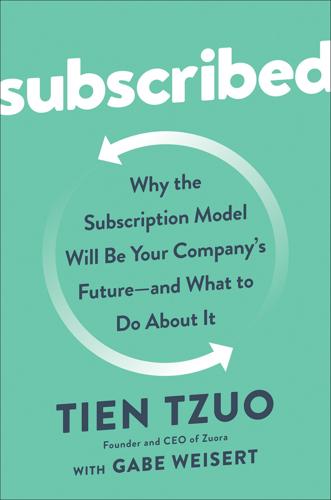
Subscribed: Why the Subscription Model Will Be Your Company's Future - and What to Do About It
by
Tien Tzuo
and
Gabe Weisert
Published 4 Jun 2018
The company may take a short-term profitability hit, but the goal is to gain long-term customer loyalty in a very young and turbulent market—and this customer loyalty is becoming more and more important as ridesharing becomes a commodity. Here in the Bay Area, the Uber and Lyft markets are really fluid. I’ll frequently toggle between the two services—lots of the cars even feature both logos in their windshields. There’s very little brand loyalty on my part. Now contrast that with my Amazon Prime experience. All due respect to other potential ecommerce vendors, but Amazon has my business, in no small part due to Amazon Prime—they hooked me with the free shipping, and now I’ve got music, movies, and all sorts of other services. I’m not going anywhere. Uber and Lyft are both vying for that same lock-in effect by offering discounted services around consistent consumption patterns—in other words, they’re going after my commute.
…
Online streaming was just around the corner (as many people have pointed out, Reed Hastings called it Netflix for a reason). Zipcar was also a really interesting new concept. It was initially seen as an hourly competitor to Hertz and Budget, but you could already see new ideas opening up around cars and transportation, which Uber and Lyft capitalized on later. And of course the iPhone had just come out—at the time it was more of a fun, plug-and-play app container, but there was the potential for geolocation, identity, messaging. As bandwidth increased and platform costs decreased, there was a logical progression going on toward on-demand, digitally enabled services.
…
Yes, there were massive limitations to Zipcar—you had to live in a city, for example. But we could see that the next revisions of this concept (give me the ride, not the car) were just going to get better and better. That experience let us see a future world where car ownership would not be necessary. Today more than 60 million riders use Uber and Lyft. These ridesharing services have ushered in a whole new set of consumer priorities: Why buy a car at all, when all you need to do to get from point A to point B is pull out your phone? Why can’t I just subscribe to transportation the same way I subscribe to electricity and internet access? But wait, you might say.
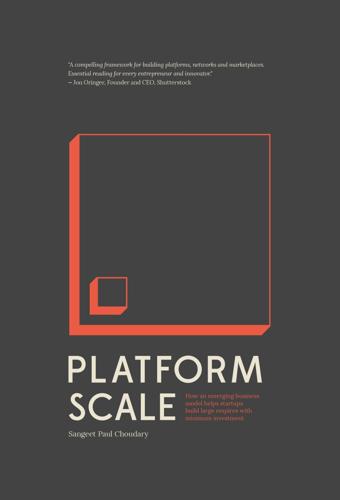
Platform Scale: How an Emerging Business Model Helps Startups Build Large Empires With Minimum Investment
by
Sangeet Paul Choudary
Published 14 Sep 2015
In both cases, the respective consumer or producer may become discouraged and decide to abandon the platform. In some of the largest cities, drivers drive for both Uber and Lyft, as well as other competitors. It’s not uncommon for these drivers to switch between the two platforms multiple times a day. With a limited supply of drivers in a city and the cost for a driver to connect to an additional platform being so small, drivers multihome on both Uber and Lyft. This has naturally led to intense competition between the two companies, and Uber infamously resorted to a playbook to create interaction failure on Lyft using questionable tactics.
…
The platform business model is powered by a new set of factors that determine value creation and competitive advantage. These factors are rapidly changing how entire industries operate. Upstarts are disrupting deeply rooted traditional industries by leveraging platforms. The decline of Nokia and Blackberry and the challenge of Uber and Lyft to the taxi industry worldwide bear testament to this shift. Meanwhile, individuals and niche brands are gaining rapid market access by leveraging platforms for global reach. Teenagers are building highly monetizable media empires on YouTube, while many freelancers make a better living on Upwork than they ever did or could at a traditional firm.
…
Multihoming costs vary for different platforms. When developers co-develop for the Android and iOS platforms, they incur high multihoming costs. Multihoming costs are high for consumers as well because of the cost of mobile phones. Most consumers will own only one phone. However, multihoming costs for drivers to co-exist on Uber and Lyft are relatively low. Many drivers participate on both platforms. Given the ease of booking rides, multi-homing costs are very low for travelers/riders on these platforms as well. This is an important consideration for on-demand platforms. With a limited supply of service providers available, multihoming may lead to a strong, ongoing competition between platforms for access to service providers.
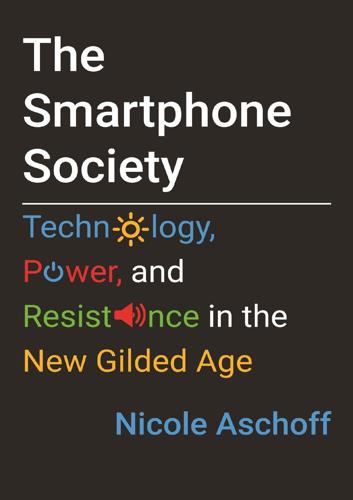
The Smartphone Society
by
Nicole Aschoff
Uber takes a 25 percent cut from each ride, yet drivers are not considered employees and the company is not responsible for their safety. Uber is also not responsible for the safety of its consumers (riders) nor the increased congestion and pollution it causes in urban centers. In San Francisco, for example, transportation experts concluded that transportation network companies such as Uber and Lyft were responsible for more than half of the increase in roadway congestion between 2010 and 2016.46 In trying to grasp the scale of smartphone jobs, we must also include all the warehouse and logistics workers continually set in motion by our “wherever, whenever” purchasing power. We order a last-minute birthday gift for Mom on the train to work; we re-up the laundry detergent during a commercial break; we order another pair of earbuds on the taxi ride home upon realizing that we’ve left ours on the plane.
…
They also get punished for being too slow; if the driver’s “time to accept orders,” “travel time to restaurant,” “travel time to customer,” or “time at customer” are longer than what the algorithm estimates they should be, the driver’s account can be deactivated.51 Uber drivers have even less time to respond to “trip requests,” ten to twenty seconds, and they also don’t know where they’re going until they’ve picked up the passenger. Until recently drivers got time-outs—short periods where they are locked out of the app—if they refused three trip requests in a row. Reliable data on how much pay Uber and Lyft drivers take home is hard to come by, but a recent driver-earnings survey found that drivers of Uber’s most popular service, Uber-X, made a median wage of $14.73 an hour in 2018 after tips but before gas, insurance, and repairs—substantially less than a living wage.52 Amazon warehouse workers are algorithmically managed in a different way.
…
The taxi market was widely considered impossible to unionize, but under the bold leadership of Bhairavi Desai, and through clever tactics and dogged organizing, drivers won important gains: regulations on taxi companies, a health and disability fund for drivers, and raises that put drivers on the path to a living wage. But the arrival of Uber and Lyft threw a wrench into the works, “disrupting” not only the taxi market but also the lives of taxi drivers. Debt and driving time rose while compensation and security plummeted. Where once taxi drivers could make enough to buy a home and send their kids to college, today 85 percent of app drivers earn below the minimum wage.3 But drivers are fighting back.4 The New York Taxi Workers Alliance was instrumental in getting the city to put a cap on new driver regulations (the first in the country) in August 2018, and a month later the union submitted a multipronged proposal to the New York City Taxi and Limousine Commission calling for a raise for all drivers, including app drivers, a debt relief program for medallion owners, a minimum app fare so drivers make at least $10 a trip, regulations that would align driver pay with changes in Uber’s pricing schemes, and retirement benefits for all drivers.5 App drivers aren’t the only workers demanding recognition and fair compensation for the work they do.

Super Pumped: The Battle for Uber
by
Mike Isaac
Published 2 Sep 2019
It wasn’t just that he liked to win. Kalanick needed to win. Winning was the only option, his only goal. If you weren’t going to go home with the gold medal at the end of the day, why even show up to the game? At Uber, winning meant the obliteration of any opponent. There wasn’t enough room for Uber and Lyft to coexist, he believed. The game was zero-sum. Every single ride-hailing car on the road in every single important market should have an Uber driver behind the wheel. Nothing less than a complete monopoly would suffice. Kalanick enjoyed the fight. At first he began to needle John Zimmer, Lyft’s co-founder, on Twitter.
…
The company regularly topped the list of biggest spenders across states like New York, Texas, and Colorado—and dozens of others where they faced legislative opposition—throwing down tens of millions of dollars annually to sway lawmakers. David Plouffe, a former Obama administration political operative, was a major hire who knew how to influence city-level as well as national politics. In Portland, Uber hired Mark Weiner, one of the most powerful political consultants in the city. In Austin, Uber and Lyft paid $50,000 to the former Democratic mayor to lead their campaign against regulation. Later, as Uber matured, the company’s staff swelled to include nearly four hundred paid lobbyists across forty-four states; the number of ride-hailing lobbyists outnumbered the paid lobbying staffs of Amazon, Microsoft, and Walmart combined.
…
They had given a platform to a billionaire troll, which he leveraged into maximum, round-the-clock exposure. Trump had banked more than $2 billion in “earned media,” that is, free attention—far surpassing that of any other candidate. Now, each tweet was a presidential proclamation. Where once the public and media had adored Big Tech—Facebook and Twitter gave people a voice, while Uber and Lyft gave anyone a ride—now the public devoured stories of state-sponsored hackers using vast databases of personal information to influence the election. Suddenly, nefarious forces in Silicon Valley had led the country off a cliff, and Big Tech was profiting from the strife. Travis Kalanick had spent the past two years steeling Uber for a Clinton presidency.
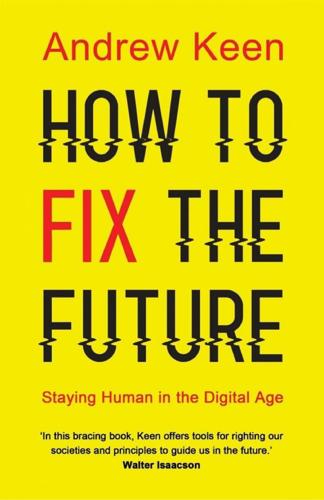
How to Fix the Future: Staying Human in the Digital Age
by
Andrew Keen
Published 1 Mar 2018
From my hotel near the station I order an Uber to transport me to the offices of Lichten and Liss-Riordan, a law firm based in Boylston Street, the major commercial thoroughfare running through the New England city. The car comes almost instantly, its electronic image zipping along the Boston streets on my iPhone app to alert me to its arrival. For frequent travelers, ridesharing networks such as Uber and Lyft offer an incredibly convenient and cheap way to get around cities at home and abroad. Like “free” YouTube videos or the absurdly cheap Spotify subscription service, they seem almost too good to be true. Which is exactly what many of these new digital products actually are, at least from the perspective of the workers—the creative artists or drivers whose labor provides their core value.
…
The problem is that the gig economy’s absence of commitment works both ways. Yes, the drivers don’t have to commit all their time to Uber, but then Uber isn’t committing anything to the drivers either. This is emblematic of an increasingly unequal economy where, in truth, multibillion-dollar start-ups like Uber and Lyft share none of their stratospheric value with their workers. Indeed, a July 2017 report about the gig economy by the British MP Frank Field alleges that some self-employed UK drivers are earning only £2.50 an hour working for sharing economy companies like Parcelforce and webuyanycar.com.30 “In reality, there is no utopia at companies like Uber, Lyft, Instacart and Handy, whose workers are often manipulated into working long hours for low wages while continually chasing the next ride or task,” that 2017 New York Times editorial argues.31 Or, as the New Yorker staff writer Jia Tolentino bluntly put it, commenting on the cult of work celebrated by on-demand companies such as the freelance marketplace Fiverr, “The gig economy celebrates working yourself to death.”32 My own experience as a heavy Uber user chimes with these conclusions.
…
Chantel McGee, “Only 4 Percent of Uber Drivers Remain on the Platform a Year Later, Says Report,” CNBC, April 20, 2017. 34. More, Utopia, 82. 35. Hannah Levintova, “Meet ‘Sledgehammer Shannon,’ the Lawyer Who Is Uber’s Worst Nightmare,” Mother Jones, December 30, 2015. 36. Kapp, “Uber’s Worst Nightmare.” 37. Barney Jopeson and Leslie Hook, “Warren Lashes Out Against Uber and Lyft,” Financial Times, May 19, 2016. 38. Ellen Huet, “What Really Killed Homejoy? It Couldn’t Hold On to Its Customers,” Forbes, July 23, 2015. 39. Carmel Deamicis, “Homejoy Shuts Down After Battling Worker Classification Lawsuits,” Recode, July 17, 2015. 40. Anna Louie Sussman and Josh Zumbrun, “Gig Economy Spreads Broadly,” Wall Street Journal, March 26–27, 2016. 41.

Fodor's Big Island of Hawaii
by
Fodor’s Travel Guides
Published 1 Aug 2022
For those traveling to South Kona, a bypass road between Keauhou and Captain Cook alleviates congestion considerably during rush hour. In general, you can expect the following average driving times. o Ride-Sharing Both Uber and Lyft have designated pickup sites at the Hilo and Kona airports. Those who plan on traveling long distances may find that regular taxis are a bit cheaper, and you may have a longer wait for Uber and Lyft pickups beyond the airports. Essentials ; Beaches Don’t believe anyone who tells you that the Big Island lacks beaches. It’s just one of the myths about Hawaii’s largest island. It’s not so much that the Big Island has fewer beaches than the other islands, just that there’s more island, so getting to the beaches can be slightly less convenient.
…
Call or calculate online for fares to popular destinations. The local Hele-On county bus also services the Hilo airport. At the Kona airport, taxis are available. SpeediShuttle also offers transportation between the airport and hotels, resorts, and condominium complexes from Waimea to Keauhou. Uber and Lyft have designated pickup areas at the Kona and Hilo airports. j Bus Although public transportation isn’t very practical for the average vacationer, depending on where you’re staying, you can take advantage of the affordable Hawaii County Mass Transit Agency’s Hele-On Bus, which travels several routes throughout the island.
…
If you’re coming during the Merrie Monarch Festival, rental cars will be in short supply. TAXI A couple of taxi companies in Hilo provide relatively affordable rates. There are 17 taxi companies that service Hilo airport. Approximate cost to Hilo from the airport is $12, and to Banyan Drive hotels $10–$11. A taxi from Hilo to Volcano would cost around $70. There are rideshare (Uber and Lyft) services in Hilo, but wait times can be long. CONTACTS AA Marshall’s Taxi. E391 Kukuau St., Hilo P808/936–2654 wwww.taxihilo.com. Da Best Taxi Service. EHilo P808/557–7059. Beaches Hilo isn’t exactly known for tropical white-sand beaches, but a few nice ones in the area offer good swimming and snorkeling opportunities, and lush rain forest surrounds some of the beaches.

Silicon City: San Francisco in the Long Shadow of the Valley
by
Cary McClelland
Published 8 Oct 2018
And the younger generation seems not quite so interested in owning a car—and this is the good part of Uber and Lyft. Young kids don’t want a car, they just want mobility. I want the taxi market to capture that, and it’s kind of frustrating to see these other companies come in and sort of steal it. People talk about Uber being so high tech and so progressive, and I’m like, “Man, I have been doing this shit for fifteen years.” We were the first to accept credit cards, GPS-based dispatch, workers’ comp insurance for drivers. Then, the things I advocate for—clean vehicles, the greenhouse gas reduction mandate—they are all being undermined by Uber and Lyft, which don’t do any of those things.
…
They don’t have any mandate for clean vehicles, they don’t serve wheelchair people or paratransit. Their drivers obviously don’t have workers’ comp. In fact, it’s a nightmare for their drivers. I mean, what if some drunk smashes into you? I had a woman tell me, “It’s just my generation. We’re just so used to pulling out our phone and using it for everything. Uber and Lyft just made it so easy.” But the taxi apps do the same thing. We just don’t store your credit card information and sell it to third parties, telling them where you are going, where you live, where you’re going to eat dinner. The past five years have been hyper in terms of change. And this is ground zero.

Portland Like a Local
by
DK
If you’re riding more frequently, download a Hop Card, which can be preloaded with funds or linked to cell phone payment apps. Tickets cover all three forms of transportation. https://myhopcard.com By car or taxi Between walking, cycling, and public transportation, there’s no real need to travel by car in town. For longer jaunts, rideshares like Uber and Lyft are available. Cabs are less common, but if that’s more your style, Radio Cab is a good option. Order cabs by phone or online. If you do drive, be aware that the narrow streets in the inner part of the city are tricky to navigate and parking can be difficult. Download these We recommend you download these apps to help you get about the city.
…
Simply download the free what3words app, type a what3words address into the search bar, and you’ll know exactly where to go. TRANSIT All-purpose transit app This multi-purpose transportation app provides bus and MAX times, routes, and trip planning, as well as options for rideshares like Uber and Lyft. It can also show you where to find BikeTown stations. Even better, it’s straightforward and easy to use, making navigating the city a complete breeze. g Contents Portland NEIGHBORHOODS Portland is a mosaic of overlapping neighborhoods, which nevertheless have their own character and community.

Markets, State, and People: Economics for Public Policy
by
Diane Coyle
Published 14 Jan 2020
Yet it is clear that new entry into the market would decrease the value of their asset, the license or medallion, and possibly also the ongoing earnings of drivers, so they have an economic incentive to protest against new entry. The remarkable success of taxi license holders and drivers in preventing competition in their markets made it vulnerable to technological disruption, however. Platforms such as Uber and Lyft have used their technology to present themselves as a matching app (like online dating) rather than as new taxi companies, and they have successfully entered many cities, albeit with many regulatory disputes over what licensing conditions they must meet. Taxi drivers everywhere are protesting against Uber in particular (and assessing the economic welfare effects of its entry into the market is complicated by the fact that it has such a nasty corporate culture).
…
Passengers wait less and pay less; Uber’s and Lyft’s rates are lower than alternatives, perhaps partly because they have a lower regulatory burden but partly because the drivers can get more passengers and so will accept a lower rate per mile. The GPS tracking can offer some safety protection—and there is no evidence the new entrants are less safe than conventional taxis—and the apps limit price gouging at least as well as do the regulatory alternatives. Besides, if safety is a real concern, regulators can directly require Uber and Lyft to do more prior checks, rather than ensuring safety indirectly through issuing a limited number of licenses. How can both drivers and passengers gain (as well as there being a margin for the platform)? To the extent they do, the answer is that better matching delivers a pure efficiency gain (more rides for drivers, less waiting for passengers); and as the demand for taxi rides seems to be price elastic in most cities, demand overall has increased.
…
If so, this will be limited by the fact that it needs drivers—it has no business if there are not enough of them to meet demand, for a matching app requires a balance between customers and drivers. And many drivers have other options, including returning to the cab companies many of them switched from in the first place. Uber and Lyft have, though, been unambiguously bad for one group: the incumbent license or medallion holders. This group has concentrated lobbying power, including bringing public pressure to bear by snarling up city centers with driver protests. To the extent they have been successful, this is another example of regulatory capture of regulators by those they are supposed to regulate in the interest of consumers.

Moon Oregon Trail Road Trip: Historic Sites, Small Towns, and Scenic Landscapes Along the Legendary Westward Route
by
Katrina Emery
and
Moon Travel Guides
Published 27 Jul 2020
Airport transportation options to downtown include bus lines 2, 3, and 4 on Valley Regional Transit (http://valleyregionaltransit.org, 6:15am-9:30pm Mon.-Fri., 8:15am-6:30pm Sat., $1)., which runs every half hour on weekdays and every hour on Saturdays; the ride takes 15-30 minutes depending on the line (3 is the fastest, 2 is the slowest). You can also get from the airport to town via Uber and Lyft (about $15) or taxi (about $13). Salt Lake City International Airport (SLC, 776 N. Terminal Dr., 801/575-2400, www.slcairport.com) offers nonstop flights to over 75 cities. Air Canada, Alaska, American, SkyWest, Delta, Frontier, JetBlue, KLM, Southwest, and United offer daily flights all over North America.
…
It is 12 miles (19.3 km) north of the city center. Airport transportation to downtown Portland includes MAX Light Rail service on the Red Line run by TriMet (http://trimet.org, 4:45am-11:50pm daily, $2.50 one-way), which takes about 40 minutes and runs approximately every 15 minutes. From the airport you can also hail ride-sharing companies Uber and Lyft (about $30) or a taxi (about $40). Boise Airport (BOI, 3201 W. Airport Way, 208/383-3110, www.iflyboise.com) is small but offers daily flights on Alaska, American, Delta, Southwest, and United. This is a more convenient entry point to the eastern side of the state; Ontario, Oregon, is 55 miles (89 km) northwest of Boise, Idaho, less than an hour’s drive.
…
Airport transportation options to downtown Kansas City include bus 229 on RideKC (http://ridekc.org, 5:30am-11:15pm Mon.-Fri., 6:20am-11:15pm Sat.-Sun., $1.50), which takes about 45 minutes and runs approximately hourly, with less frequent service on early weekday mornings. From the airport you can also hail ride-sharing companies Uber and Lyft (about $30) or a taxi (about $50). St. Louis Lambert International Airport (STL, 10701 Lambert International Blvd., 314/426-8000, www.flystl.com) is a major gateway and offers nonstop flights all over the country, as well as from Canada and Mexico. It’s about 15 miles (24 km) northwest of St.
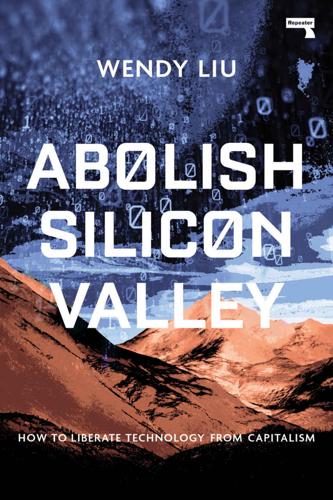
Abolish Silicon Valley: How to Liberate Technology From Capitalism
by
Wendy Liu
Published 22 Mar 2020
Accepting this one refutation of my premises would open the door to questioning all of them, and then what would I have left? Now, though, in my post-Trump malaise, I was willing to look deeper than the post-money valuations, and so I was starting to see the industry in a new light. I learned about the workplace conditions of the forgotten workers who rarely got to share in the tech industry’s success: the Uber and Lyft drivers making less than minimum wage,6 the Amazon warehouse workers forced to work at a relentless pace,7 the Foxconn workers whose low wages and brutal conditions enabled Apple’s high profit margins.8 Meanwhile, shareholders of all kinds rejoiced because their shares kept going up in value, and the newly minted tech billionaires were lavishly praised for pledging to give their money away9 — even though they were still keeping enough to live opulently, and even though they were only giving to causes that accorded with their personal vision of what the world needed.
…
I discovered the possibility of political action beyond the realm of electoral politics, through building workplace power within a well-trod framework of workers’ rights, and I realised the power of seeing tech workers as workers, with all the political implications associated with the term; even if their job seemed more glamorous than being a coal miner or warehouse worker, they still had grievances which could be addressed through building collective power. Previously, I had only had a hazy understanding of what a trade union was. In my mind they were a bad thing: a harbinger of inefficiency; a threat to the growth of beloved tech companies like Uber and Lyft; somehow related to organised crime. I had seen Paul Graham’s tweet that the presence of unions implied potential energy that could be unleashed by startups,7 which I had thought was reasonable at the time — unions artificially inflated workers’ salaries, right? They distorted labour markets, whereas startups could disrupt them and restore efficiency.
…
Contrary to the tech industry’s typical celebratory attitude towards massive riches, the message conveyed through the signs and chants is that the lopsided wealth distribution is not legitimate — that the ludicrously large payouts to shareholders come at the expense of the drivers living out of their cars in order to stay afloat. There are a few Uber and Lyft drivers at the protest, but more are on the streets, working; many of the cars with Uber or Lyft stickers honk in support as they drive by. The contingent of actual drivers at this protest seems dwarfed by their supporters: a radical marching band which often shows up at events like this, a variety of activists and organisers, progressive politicians.
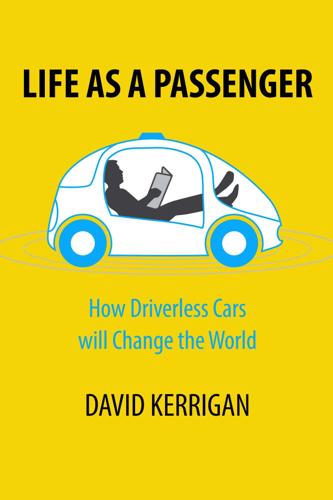
Life as a Passenger: How Driverless Cars Will Change the World
by
David Kerrigan
Published 18 Jun 2017
Think Kodak, Borders, Blockbuster, music companies, newspapers. The major car manufacturers don’t want to be the “horse” of a new “horseless carriage” era. The line between the agile technology sector and the lumbering powerhouse automotive industries is blurring. The rise of rideshare and ride hailing companies such as Uber and Lyft means that transportation is being tied ever more closely to your cell phone, while autonomous driving technology will require turning your car into a supercomputer. But these developments are expensive: Carmakers’ R&D budgets jumped 61 percent, to $137 billion from 2010 to 2014. Fiat Chrysler America CEO, Sergio Marchionne, has said he believes it makes no sense for carmakers to spend billions of dollars developing competing, yet largely identical systems.
…
A 2010 report from UC Berkeley’s Transportation Sustainability Research Center[177] found that one car-share vehicle could remove 9 to 13 vehicles from the road, either because households decided to ditch their personal automobile or significantly delay the purchase of one. One survey suggests that every car added to the fleets of Uber and Lyft leads to 32 fewer car sales, meaning potential “lost sales” by 2020 of over 1 million cars.[178] While that only looks at changes in car purchasing in selected urban areas, and doesn’t take account of any changing usage patterns, brought about by driverless cars, that might increase VMT, it is enough to make car manufacturers sit up and take notice.
…
So far it seems that many planners are choosing to ignore developments - despite its notorious traffic congestion issues, Los Angeles’ 2015 ten-year vision, “Mobility Plan 2025”, doesn’t even mention driverless cars. Less than 3% of the transportation plans for the 50 most populous cities in the US even mention the transit impacts of ride-sharing services Uber and Lyft, let alone driverless cars. Expert opinion on the impact of driverless cars on urban sprawl is divided. On one side, the argument goes that if driverless cars free up parking and garage space, there will be plentiful affordable new residential capacity negating the need for people to move further from city centres for affordable housing.
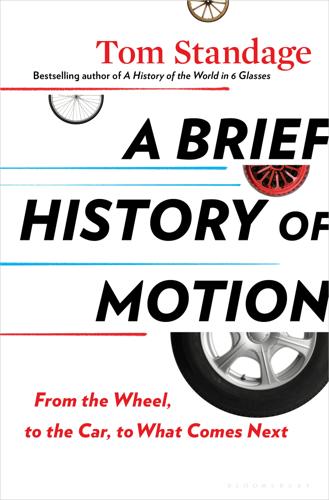
A Brief History of Motion: From the Wheel, to the Car, to What Comes Next
by
Tom Standage
Published 16 Aug 2021
The latest twist on bike sharing is the option to rent electric bikes, which use a motor to assist the rider and make longer journeys less strenuous. The dockless bike-sharing model, combined with improvements in batteries and electric propulsion, has also led to a flowering of start-ups offering electric scooters, or e-scooters, for short trips. This model was pioneered by Bird and Lime, two American start-ups, in 2017. Uber and Lyft launched their own scooter-sharing services the following year. Since then the model has spread around the world, though not as quickly as dockless bike sharing because laws in some cities do not allow e-scooters. As with dockless bicycles, e-scooters have raised concerns about clutter on pavements, as well as the safety of riders and pedestrians.
…
A typical Western household, driving ten thousand miles a year, could therefore reduce its annual transport costs from $12,000 to $5,000 by switching to robotaxis. As a UBS analyst puts it, “Once the car becomes autonomous, the relevance of car ownership drops materially.” The possibility that cheap robotaxis could undermine car ownership explains why both ride-hailing firms, such as Uber and Lyft, and carmakers have been investing billions of dollars in autonomous-driving research. Any firm that develops a viable robotaxi would potentially be able to undercut both ride-hailing companies that rely on human drivers, and carmakers whose business model depends on selling people cars. Fear of this outcome has resulted in a constantly shifting web of alliances between AV start-ups, ride-hailing firms, and carmakers, as everyone tries to hedge bets.
…
Another nightmare scenario is that commuters who own their own AVs might ask their cars to drop them off at work, then order them to go home or spend the day circling the office, before picking them up in the evening. AVs might also undermine public transport systems. A study by the University of California, Davis, found that among Uber and Lyft riders in America, bus use had fallen by 6 percent and light-rail use by 3 percent. Cheap AV rides could draw even more people away from public transport and onto the roads. This might discourage further investment in public transport, which could in turn expand, rather than diminish, the size of transit deserts.

A Hacker's Mind: How the Powerful Bend Society's Rules, and How to Bend Them Back
by
Bruce Schneier
Published 7 Feb 2023
Their business model allows them to ignore dozens of laws regulating licensed taxis and limos, including worker protection laws, safety laws, consumer protection laws, permit and fee requirements, and public-good laws. Taxi drivers are required to have background checks. Uber and Lyft drivers are not (although they now grudgingly do so). Taxi companies must pay minimum wage and are subject to citywide caps on the number of vehicles they operate at any given time. Not Uber and Lyft. The list goes on and on. This all started around 2012, and Uber has since leveraged its competitive advantage over traditional taxis and limos to dominate the market. As of 2021, it operates in over 10,000 cities in 72 countries, completing 19 million trips each day.
…
It warps markets, allowing companies to charge prices that don’t reflect the true cost or value of what they’re selling. It permits unprofitable enterprises and unsustainable business models to thrive and proliferate. It also warps the market for talent—employees—especially in the tech sector. And finally, it warps entire market categories, like transportation, housing, and the media. Uber and Lyft, for example, have created an unsustainable market for hired-car rides by charging artificially low prices that do not accurately reflect the value of drivers’ labor. VC funding is also a hack on innovation. By favoring financial returns over substantive product improvements, it prioritizes certain kinds of innovation and ignores others.
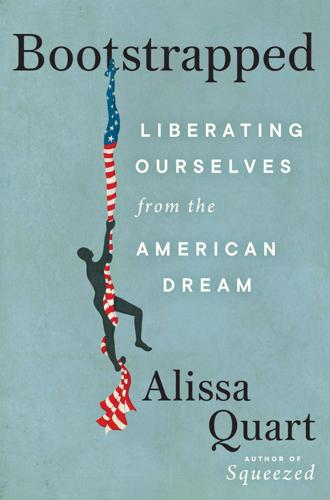
Bootstrapped: Liberating Ourselves From the American Dream
by
Alissa Quart
Published 14 Mar 2023
And while on a good day she’d make $180, she also had to pay to rent the car, which was $200 for the week, and then also gas, which averaged $90 per week. She was cashing out every day so she could put gas in the car every night. “I had to work constantly,” she recalled. After a year, Okawa started talking to other gig workers about the way these app-based companies treated their contractors. Uber and Lyft still classified ride-hailing drivers as contractors, so these companies didn’t pay into state unemployment funds. A University of California at Berkeley study found that they would owe the state $413 million, for the period from 2014 to 2019 alone, if they had correctly classified their drivers as employees.
…
“I am really glad I am a part of this movement,” Okawa said: her activism was saying no to the hustling mentality on a fundamental level, even if she still had to continue in accord with its practical demands to survive. Okawa, for instance, became involved in the opposition to California Proposition 22, the Uber- and Lyft-funded ballot measure that worked against California’s AB5. AB5 had been a huge victory when it was signed into law in 2019: it gave employee status to gig workers and made it much harder for the megacorporations to claim their workers were independent contractors rather than employees. Okawa also joined a local organizing group, We Drive Progress.
…
For instance, in the co-op’s early days, driver-owners did emergency food deliveries for those fearing COVID, for instance, and also drove their first customers to early voting at the behest of Ocasio-Cortez. The Drivers Cooperative’s cofounder Erik Forman, an organizer and a teacher with a taxi license, was inspired to create the co-op, he said, when frustrated drivers “kept coming to me to ask why we don’t start our own app.” Uber and Lyft claim to take 20 to 25 percent off of drivers’ rides, but a recent investigation revealed in some instances that the companies pocket as much as half. As we read in the account of Saori Okawa’s driving life in chapter 10, that the companies take such large shares of the profits was a problem exacerbated by pandemic economic losses and risks.

Competition Overdose: How Free Market Mythology Transformed Us From Citizen Kings to Market Servants
by
Maurice E. Stucke
and
Ariel Ezrachi
Published 14 May 2020
Median net worth of Gen X households at the same age was about $15,100”). 14.Martha Ross and Natalie Holmes, “Meet the Millions of Young Adults Who Are Out of Work,” Brookings Institution, April 9, 2019, https://brook.gs/2UveFHI. 15.To illustrate how the digital economy can shift the risk from the powerful tech platforms to the worker, consider Uber and Lyft drivers. When the ride-sharing app enters into a new city, it needs to attract drivers. The first few drivers initially have a lot of power, as Uber and Lyft need to hold onto them (while recruiting even more drivers). They could possibly demand better wages. But as Uber and Lyft keep adding drivers, each driver now becomes slightly more expendable. As their numbers swell from a dozen to a few hundred and then a few thousand, each driver must compete even more fiercely for work, while each driver has even less power to negotiate for better wages and benefits. 16.Brief for the United States and the Federal Trade Commission as Amici Curiae in Support of Appellant and in Favor of Reversal, Chamber of Commerce of the United States of Am. v.
…
As for Generation Z (defined as those born in the mid-1990s to the early or mid-2000s) 17 percent of young adults ages eighteen to twenty-four are out of work in mid to large cities in the United States, totaling 2.3 million young people.14 They and future generations will likely join the swelling ranks of “precariats”—those clinging precariously to their current economic rung, while bearing ever greater risks in the digital economy.15 Should they try to organize to secure fairer wages, as many Uber and Lyft drivers attempted to do in Seattle in 2015, they can expect the government to intervene—and not on their behalf. Competition is inherently good, the FTC and DOJ will tell the court: Antitrust law “forbids independent contractors from collectively negotiating the terms of their engagement.”16 That’s price-fixing, which “is at the very core of the harms the antitrust laws seek to address.”17 Unionizing, which may be the only remedy left to the powerless, has also come under attack, in part for being anticompetitive—the very same rationale we saw that sent union leaders (and socialists) to jail under the Sherman Antitrust Act of 1890.

What Algorithms Want: Imagination in the Age of Computing
by
Ed Finn
Published 10 Mar 2017
These universes are aesthetically neat and tidy, with rules and conditions that, we believe, can be learned and ultimately mastered. The aesthetic of computational order echoes Bogost’s warning about the cathedral; its appeal for human engagement is rapidly expanding from play to work. Increasingly, startups are bringing this logic to the real world, creating game-like experiences for services like taxis (e.g., Uber and Lyft), household chores (Handy, HomeJoy, Mopp) and even office communications (Slack). These companies operate in what design entrepreneur Scott Belsky calls the “interface layer,” using appealing design to clarify and rationalize messy aspects of cultural life into simple, dependable choices.32 The Interface Economy If Zynga and its cohort of game-makers have found ways to extract labor value from entertainment, the new wave of interface layer companies is reframing labor as a kind of entertainment, adopting the optimistic framing of the “sharing economy.”
…
For companies like Lyft and more deliberately intimate interface layer systems like the dating app Tindr, the “sharing economy” is not about money at all, but about that experience of companionship. If these business models are founded on exploiting certain kinds of alienated labor and attention, their customer experience promises relief from that alienation. Even as Uber and Lyft collect their invisible commissions on unseen transactions, the affective experience is one of a specially branded community. But that community is crucially, essentially mediated by the algorithm. Drivers and riders are rated and vetted through computation; the interface layer bringing them together is also the central arbiter of trust.
…
By relying on Amazon’s task distribution network and personal computers, the system also constrains the bodies and the time of its users (depending on the fluctuations of what piecework is available at any given time, and how well that work is compensated). The system produces HITs but also a kind of labor culture around those HITs. That trace of a labor culture also appears in the apps and interfaces of the sharing economy. As the ads for Uber and Lyft suggest (figure 4.3, figure 4.4), a huge amount of energy in the interface economy goes toward the production of affect among consumers and providers of services. User feedback, emotional enjoyment, and a neoliberal ideal of independence define these systems at every level, from their logos to their feedback mechanisms.
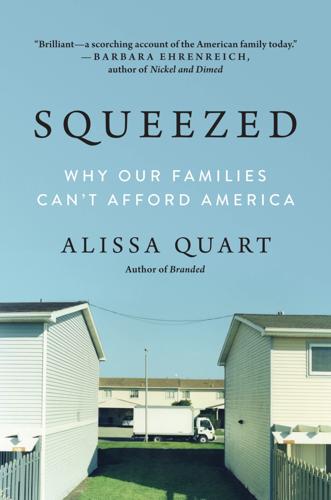
Squeezed: Why Our Families Can't Afford America
by
Alissa Quart
Published 25 Jun 2018
These conglomerates are gargantuan outfits that offer short-term, cheap services delivered by “independent” contractors. They have become hugely successful by trading labor across platforms over which workers have little to no say. There was also a gendered element of this dark Silicon Valley fantasia. Of the dozen Uber and Lyft driver-teachers I spoke to in 2016, most were also parents, and almost all were men. (Of course, this is often true of the workers employed by these services.) It made me wonder whether men were sometimes more willing to literally drive the extra mile to retain their class status. After all, these men were also affected by the American societal amnesia about the cost of raising a family.
…
(Ironies compound: as the writer Douglas Rushkoff has noted, today’s drivers are themselves now part of the research and development for what will most likely be the driverless future, building up a company with their labor in preparation for a time when the company will do away with them.) “Our demand is to freeze all the subsidies for the research on autonomous vehicles until there is a plan for workers who are going to lose their jobs,” Lerner said. As part of this effort, NYCC regularly puts together conference calls between dozens of taxi, Uber, and Lyft drivers. They discuss how they’ve all gotten massive loans to buy cars for Uber and how they are still going to be paying off these loans when the robots come for their jobs—the robot vehicles Uber has promised within the decade. The robot-fearing Middle Precariat also includes parts of the legal profession: robots are threatening higher-end jobs, including those usually carried out by humans handling information.
…
Scott, 180 Five Star Sitters, 64 Flat tax, and UBI, 241 Florida Coastal School of Law, 101, 104–5 Flushing High School, 131, 140 Fogel, Karl, 228 Folbre, Nancy, 281n Food stamps, 34, 35, 44, 151, 156, 201, 249, 251 Forbes (Magazine), 235–36 Ford, Martin, 240 Forest Hills High School, 131, 140 Forever clock, 69, 72, 85–86, 238 For-profit schools, 101, 104–5, 172–78, 183, 184 Fox, Carly, 201–2 Fracking, 54 France day care, 80 hospital birth costs, 24 parental leave, 25, 26 social class and education, 103–4 Freeman, Joshua, 71, 84–85 French Women Don’t Get Fat (Guiliano), 25 Freud, Sigmund, 247 Freyer, Randi, 19–20 Frontier Airlines, 19–20 “Fronting,” 6 Fruscione, Joe, 56–57, 59 Full-time equivalents (FTEs), 226 Gabler, Neal, 95 Gainer, Mary-Grace, 54 Gap Inc., 71, 85 Gates, Bill, 226 Gender “class ceiling,” 10, 31 devaluation framework of care work, 76–77, 128–29 motherhood bias, 5–6, 10, 31 pay gap, 16, 51, 76, 104, 151–52 “precarious manhood” theory, 150–51, 262 rethinking traditional roles, 262 TV and, 220–21 Uber and Lyft driver-teachers, 150–51 Gender Equality Law Center (GELC), 29, 30 Geography and basic budget threshold, 99 Georgetown University, 56 George Washington University, 57 Germany day care, 80 parental leave, 26 Gerson, Kathleen, 75, 196 Gifted-and-talented programs, 135, 136 Gig economy, 147–63, 172.
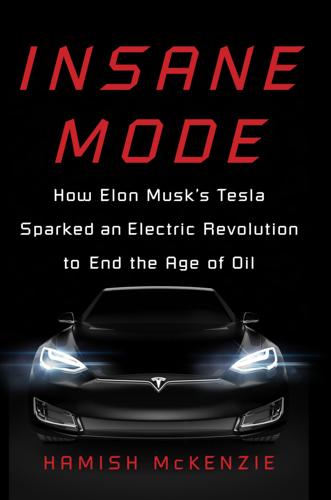
Insane Mode: How Elon Musk's Tesla Sparked an Electric Revolution to End the Age of Oil
by
Hamish McKenzie
Published 30 Sep 2017
Santa Clara–based graphics chipmaker Nvidia has added hundreds of engineers to its auto-focused teams in the past few years. “We didn’t start out to be an auto company,” Danny Shapiro, Nvidia’s senior director of automotive, told the Times. “But everything that is changing a car has nothing to do with the auto industry of the past.” Start-ups have spotted the opportunity, too, of course. Uber and Lyft, both based in San Francisco, are hogging the early spoils in the ride-sharing market. Younger companies like Mountain View’s Smartcar (infrastructure for the connected car), San Francisco’s Reviver (digital license plates), and Palo Alto’s Nauto (AI-powered autonomous driving) are pursuing other software-related opportunities.
…
There are 5.2 million people in the trucking industry who don’t drive trucks, as well as the millions who provide food, gasoline, accommodation, and other services for truckers. If truck drivers are no longer on the roads, all those people will feel the pain, too. Then you can look at the people who drive taxis, Ubers, and Lyfts. Many taxi drivers have already switched to driving for the ride-sharing companies, but when robotaxis and self-driving Ubers are widespread, many of those jobs will be at risk. Some observers believe that the advent of the autonomous era could have a measurable impact on capitalism as we know it.
…
Columbia University’s Earth Institute has found that shared autonomous cars would cost about fifteen cents per mile to operate, compared to sixty cents a mile for personal gasoline cars. Savings would come from improved driving efficiency, reduced wear and tear, and cheaper fuel (electricity). If you take the human driver out of the equation for Uber and Lyft, the cost of getting from A to B on four wheels would also be steeply reduced. We could sell our cars then, and never again have to worry about taking them in for inspection, changing the tires, or being exploited by unscrupulous mechanics. (Unfortunately, of course, people in those job sectors would see their incomes suffer.)
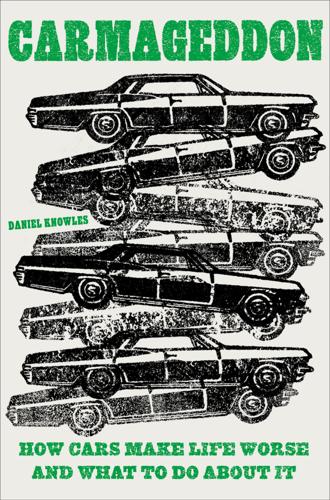
Carmageddon: How Cars Make Life Worse and What to Do About It
by
Daniel Knowles
Published 27 Mar 2023
To do so they have broken laws and flouted regulations intended to control traffic and pollution, while burdening millions of working-class people with loans that they can barely service. But their promise, that car-sharing would somehow alleviate traffic, has proven hollow. Uber’s investors haven’t even made a profit. All they have done is generate traffic. A 2018 study by Schallar Consulting found that Uber and Lyft increased the number of cars on some American city streets by 180 percent. Another study of San Francisco found that ride-sharing companies accounted for more than half of the city’s growth in traffic. Lyft drivers spend a fifth of their time driving around empty, waiting for passengers. In Britain, Ubers are not carrying a passenger for 58 percent of the time they are driving.
…
“It’s time to stop enabling drivers in any partially automated vehicle to pretend that they have driverless cars,” said its chairman, Robert Sumwalt, in 2020. (In January 2021 Tesla responded by releasing a car with a video game console built in, which drivers can use while their car is moving—essentially two middle fingers stuck up at the regulators.) That is why most of the attempts to develop truly self-driving cars have proven so difficult. Uber and Lyft, the taxi companies, had invested heavily in trying to develop the technology, on the basis that getting rid of the drivers was probably their best hope of becoming seriously profitable. But Uber abandoned its project in 2020 after spending $1 billion on it, selling its unit to a firm called Aurora.
…
In both countries, and in others too, the share has been rising fast in the past couple of decades. When they do move out, or have kids, they are, much as their parents did, also moving out to car-centric suburbs, and to car-centric cities like Atlanta and Houston, because that is where housing is cheapest. They also love ride-sharing apps like Uber and Lyft, which are incredibly convenient, for sure, but have also clogged the traffic of big cities enormously. The turn away from cars is a little like the turn away from marriage and having children. People are waiting much longer to do it, but they are ultimately still doing it. Much as I did, young people may be learning to drive later, but for the most part they still seem to be learning to drive.
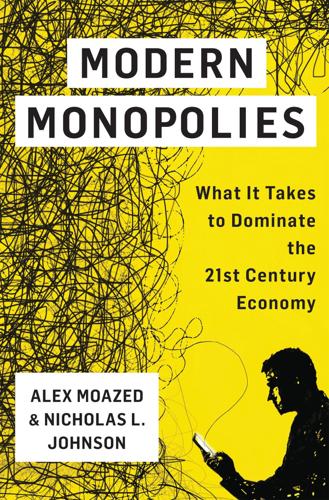
Modern Monopolies: What It Takes to Dominate the 21st Century Economy
by
Alex Moazed
and
Nicholas L. Johnson
Published 30 May 2016
A great example of this is the console industry, where the Xbox One and Playstation 4 are sold at or below cost in order to get as many users as possible onto the platform. These platforms can then use their large consumer base to attract game developers, whom they charge licensing fees. Many platforms also provide guarantees to producers in order to get them to join. Heavy competition for drivers on ride-sharing platforms has led both Uber and Lyft to offer minimum-earnings guarantees to drivers who join. Handy also offers a guarantee to producers from other on-demand services marketplaces who join its network. Product Features Subsidies Another way to subsidize value is through product features. Many platforms create special functionality for power users in order to increase loyalty and usage among this prized user group.
…
Well, thanks to Breeze, a San Francisco-based startup: no car, no problem. Breeze leases cars at $195 a week to aspiring Uber or Lyft drivers. In late 2013, Uber also began partnering with third-party lenders to offer vehicle financing to would-be drivers.2 Insurance is another big opportunity. Both Uber and Lyft provide insurance coverage while drivers are on a job, but when they’re not on the way to or driving a passenger, they are out of luck. Even worse, many personal auto insurance policies will cancel your policy if they find out you work for Uber (since the policy is not meant to cover commercial activity), and traditional commercial insurance options are prohibitively expensive for many part-time drivers.
…
“The existing model for insurance hasn’t been able to adapt [to Uber],” Metromile CEO Dan Preston said.3 “We have a technology that drives the insurance product.” More mainstream insurance companies, such as Geico and Progressive, have followed Metromile’s lead by offering ride-share insurance that caters to Uber and Lyft drivers. This phenomenon of derivative businesses being built around larger platform companies isn’t new. The legion of search engine optimization experts that sprang up to help businesses grapple with Google’s search engine are an obvious precedent, as are the legions of people and companies that hold some variation of the title “social media manager.”
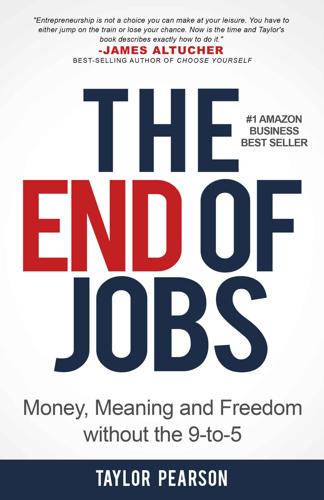
The End of Jobs: Money, Meaning and Freedom Without the 9-To-5
by
Taylor Pearson
Published 27 Jun 2015
There are not many more houses now in the U.S. than there were 5 years ago, but AirBnB has created more inventory (extra rooms to stay in) without creating more supply (building hotels). Uber and Lyft have done for the taxi industry what AirBnB has done for the hotel industry—anyone with a car can become a taxi driver by signing up online to drive for the service. In the past it was difficult and expensive to become a taxi driver. Some cities require drivers to invest tens of thousands of dollars to buy a medallion just to drive a taxi. Uber and Lyft now let anyone do the work by instead going through a background check. A lot of people use this as supplemental income when making a job transition.

Winners Take All: The Elite Charade of Changing the World
by
Anand Giridharadas
Published 27 Aug 2018
To be a contractor is to give up certain protections and benefits in exchange for independence, and thus that independence must be genuine. The case inspired the judges in the two cases, Edward Chen and Vince Chhabria, to grapple thoughtfully with the question of where power lurks in a new networked age. It was no surprise that Uber and Lyft took the rebel position. Like Airbnb, Uber and Lyft claimed not to be powerful. Uber argued that it was just a technology firm facilitating links between passengers and drivers, not a car service. The drivers who had signed contracts were robust agents of their own destiny. Judge Chen derided this argument. “Uber is no more a ‘technology company,’ ” he wrote, “than Yellow Cab is a ‘technology company’ because it uses CB radios to dispatch taxi cabs, John Deere is a ‘technology company’ because it uses computers and robots to manufacture lawn mowers, or Domino Sugar is a ‘technology company’ because it uses modern irrigation techniques to grow its sugar cane.”
…
It gives drivers detailed instructions about how to conduct themselves. Notably, Lyft’s own drivers’ guide and FAQs state that drivers are “driving for Lyft.” Therefore, the argument that Lyft is merely a platform, and that drivers perform no service for Lyft, is not a serious one. The judges believed Uber and Lyft to be more powerful than they were willing to admit, but they also conceded that the companies did not have the same power over employees as an old-economy employer like Walmart. “The jury in this case will be handed a square peg and asked to choose between two round holes,” Judge Chhabria wrote.

Essential: How the Pandemic Transformed the Long Fight for Worker Justice
by
Jamie K. McCallum
Published 15 Nov 2022
Cobbled together from a group of local shopkeepers, students, and a trade union of couriers, the organization filled a clear mission while also deepening the social fabric of the city that was rent asunder by COVID.7 When the pandemic hit the US, American essential workers also formed mutual aid societies to provide goods and services not supplied by the government or corporations. Gig workers in delivery and transportation industries developed apps to help each other learn how to respond to the neediest situations first, sometimes bucking priorities from the likes of Uber and Lyft. The Gig Workers Collective created a simple map that allows drivers to coordinate mutual aid activities like food delivery and medical personnel transport. “Between the lack of financial security (no sick leave), the number of workers living week to week, and the inability for some workers to take time off due to low income, gig workers are some of the most vulnerable dealing with the COVID-19 outbreak,” their website stated.8 Factory workers in Marcus Hook, Pennsylvania, moved into the Braskem petrochemical plant on March 23, 2020, with sleeping bags and toothbrushes.
…
Brad Plumer, “How the Recession Turned Middle-Class Jobs into Low-Wage Jobs,” Washington Post, February 28, 2013, www.washingtonpost.com/news/wonk/wp/2013/02/28/how-the-recession-turned-middle-class-jobs-into-low-wage-jobs/. 7. Congressional Research Service, Labor Market Patterns Since 2007, October 3, 2018, https://sgp.fas.org/crs/misc/R45330.pdf. 8. Rosenblat quoted in Bloomberg: “It was dire economic straits that gave birth to the gig economy in the first place. Uber and Lyft sprang from the 2008 financial crisis—a time when many people were willing to accept that any work was better than none at all. Americans rallied around the concept of a ‘side hustle,’ and governments effectively endorsed the practice by declining to get involved in the smartphone-based labor markets taking shape.”
…
Dominic Gates, “Boeing Outsourcing 600 IT Jobs to Dell,” Seattle Times, February 3, 2021, www.seattletimes.com/business/boeing-aerospace/boeing-outsourcing-600-it-jobs-to-dell/; Tracy Rucinski and Sanjana Shivdas, “United Airlines to Outsource Catering Operations from October,” Reuters, July 29, 2021, www.reuters.com/business/aerospace-defense/united-airlines-outsource-catering-operations-october-2021-07-29/. 36. Suhauna Hussain, Johana Bhuiyan, and Ryan Menezes, “How Uber and Lyft Persuaded California to Vote Their Way,” Los Angeles Times, November 13, 2020, www.latimes.com/business/technology/story/2020-11-13/how-uber-lyft-doordash-won-proposition-22. 37. Eve Batey, “Eater Readers Overwhelmingly Oppose Prop 22,” Eater SF, November 2, 2020, https://sf.eater.com/2020/11/2/21546110/doordash-uber-prop-22-election-2020-polling; Alex N.

Fodor's Oregon
by
Fodor's Travel Guides
Published 13 Jun 2023
It is illegal to talk or text on a cell phone while operating a motor vehicle, and doing so will net you a hefty fine. Use a wireless headset device if you need to stay connected. 6 Taxi Portland has several reliable taxi companies and is also well served by ride-share companies, such as Uber and Lyft. It can be expensive to get around town by cab, however, and you need to call for a taxi, as it’s very difficult to hail them on the street. In Portland the flag-drop rate is $3.80 and then $2.80 per mile, and Uber and Lyft trips typically cost less. Make sure to ask whether the driver takes credit cards, whether there’s a minimum fare, and whether there are charges for extra passengers. Other charges may include waiting times and airport minimums.
…
You purchase your ticket before boarding at one of the vending machines in the terminal and at every MAX stop, or by downloading the TriMet Hop Fastpass app and paying with your phone; tickets are also good on TriMet buses and the Portland Streetcar, and transfers within 2½ hours of the time of purchase are free. Uber and Lyft have dedicated pickup areas at the airport; the cost for either between the airport and Downtown averages around $25 to $35 (a taxi generally runs about $10 more). CAR Although traffic has increased dramatically in recent years (Portland ranks as one of the worst cities in the country for rush-hour commuter traffic), it’s still a fairly easy city to navigate by car, and if you’re planning to explore neighboring regions—such as the coast, Willamette wine country, and Columbia Gorge—it’s best to do so by car, as public transportation options to these areas, especially the coast, are very limited.
…
Rental cars are available for pickup at the airport from several national agencies. Enviro Shuttle provides transportation throughout the region (reservations requested); a ride from the airport to addresses within Bend costs about $40. Taxis are available curbside, or can be summoned from the call board inside the airport; rideshare services Uber and Lyft both service RDM. Portland’s airport is 160 miles northwest of Bend, and daily flights connect the two cities. AIR CONTACTS Redmond Municipal Airport–Roberts Field. (RDM) E 2522 S.E. Jesse Butler Circle, Redmond P 541/548–0646 w flyrdm.com. Enviro Shuttle. P 541/598–5384 w enviroshuttle.net. BUS The Central Oregon Breeze, a regional carrier, runs one bus a day each way between Portland and Bend, with stops in Redmond and Madras.

Futureproof: 9 Rules for Humans in the Age of Automation
by
Kevin Roose
Published 9 Mar 2021
I interviewed users of social media platforms like YouTube and Facebook, who had thought that those platforms’ AI-driven recommendation systems would help them find interesting and relevant content, but who had instead been led down rabbit holes filled with misinformation and conspiracy theories. I heard about teachers whose schools had implemented high-tech “personalized learning” systems in hopes of improving student outcomes, but who had found themselves fumbling with broken tablet computers and erratic software. I listened to the complaints of Uber and Lyft drivers who had been lured by the promise of flexible employment, but then found themselves suffering under the thumb of a draconian algorithm that nudged them to work longer hours, punished them for taking breaks, and constantly manipulated their pay. All of these stories seemed to indicate that AI and automation were working well for some people—namely, the executives and investors who built and profited from the technology—but that they weren’t making life better for everyone.
…
Amazon uses complex algorithms to track the productivity of its warehouse workers, and can reportedly even automatically generate the paperwork required to fire underperformers. IBM has used Watson, its AI platform, in employee performance reviews—meaning that your bonus might be determined not simply by how you did last year, but by how the algorithm predicts you’ll do next year. On-demand platforms like Uber and Lyft have dispensed with the idea of human supervision altogether, putting decisions like pay, dispatching, and dispute resolution in the hands of algorithms. Algorithmic management has become a lucrative industry. In addition to Cogito, there are also retail-oriented AI companies like Percolata, a Silicon Valley start-up that counts Uniqlo and 7-Eleven among its clients, which uses in-store sensors to calculate a “true productivity” score for each worker.

The Future Is Faster Than You Think: How Converging Technologies Are Transforming Business, Industries, and Our Lives
by
Peter H. Diamandis
and
Steven Kotler
Published 28 Jan 2020
What can we do with this identity? Own our own data, for one. Blockchain IDs could also facilitate fair and accurate voting. Lastly, if your identity can be established, then a reputation score can easily be attached. This score allows for things like peer-to-peer ridesharing, which today require trusted third parties named “Uber” and “Lyft.” In the same way that blockchain can validate identity, it can also validate any asset—for example, ensuring that your engagement ring isn’t a blood diamond. Land titles are another opportunity, especially since a considerable portion of the planet lives on land they don’t own, or not officially.
…
While robo-advisors still account for only roughly 1 percent of total U.S. investment, Business Insider Intelligence estimates that number will climb to $4.6 trillion by 2022. Finally we come to our last category, using money to pay for things. But we already know this story. When was the last time you dropped coins into a toll booth? Or paid cash for a cab ride? In fact, Uber and Lyft allow us to get around a city without a wallet. Couple cashier-less stores like Amazon Go with services like Uber Eats and these wallet-less ways are about to become the new normal. Denmark stopped printing money in 2017. The year prior, in an attempt to expand mobile banking and demonetize the country’s gray-market economy, India recalled 86 percent of its cash.
…
For most of the last century, standard metrics for business success were number of employees, ownership of assets, that sort of thing. In our exponential world, agility beats stability, so why own when you can lease? And why lease when you can crowdsource? Airbnb built the largest hotel chain in the world, yet doesn’t own a single room. Uber and Lyft have all but replaced cab companies in every major metropolis yet don’t own a single taxi. And this level of flexibility, while now a requirement in business, is equally necessary in governance, which is our third and final category. Modern ideas about government emerged about three hundred years ago, in a post-revolutionary world, when a desire for freedom from tyranny went hand in hand with a desire for stability.

The Nation City: Why Mayors Are Now Running the World
by
Rahm Emanuel
Published 25 Feb 2020
We also found some money in a federal program called Congestion Mitigation and Air Quality Improvement. We had a start, but we needed more. So I put on my dancing shoes and went down to Springfield. I cajoled our state to change TIF regulations so we could apply TIFs to transportation. We also levied a first-ever fee on the ride-sharing companies Uber and Lyft, which raised $16 million in its first year (2017). We used that money to raise $180 million in bonds to be used for capital improvement. We did this—the biggest modernization of our transit system in the city’s history—without raising our tax rates or fare increases, and without a new federal transportation bill.
…
The idea is to help the students cope with such feelings as frustration and to “think about their thinking.” This is vitally important: Much of the violence we see in our cities is impulsive, an overreaction to provocation. I loved the program from the beginning, and I did much to enhance and boost its reach. We funded some of it from a $10.4 million settlement we received after we sued Uber and Lyft for inadequate background checks on their drivers. This idea was hatched at the University of Chicago Crime Lab. We started to scale it up, and it now reaches 7,000 young men and is being copied by other cities, such as Boston. The goal is to reach all young men in crime-ridden neighborhoods by ensuring they are in a mentoring program from seventh to eleventh grades.

Internet for the People: The Fight for Our Digital Future
by
Ben Tarnoff
Published 13 Jun 2022
Gray and Siddharth Suri, Ghost Work: How to Stop Silicon Valley from Building a New Global Underclass (Boston: Houghton Mifflin, 2019). 119, Uber is one of the main … Singularly unprofitable: In September 2021, Uber said that it could post its first profit on an adjusted basis in Q3 2021, following a similar announcement by Lyft in the previous quarter. These announcements have more to do with creative accounting than with the health of the underlying businesses, however: the adjusted basis, known as “adjusted EBITDA,” excludes many kinds of losses and expenses. As the journalist Preetika Rana notes, “Uber and Lyft have yet to turn a net profit on the strength of their operations and haven’t projected when they might.” See Preetika Rana, “Uber Says First Adjusted Profit Possible this Quarter,” Wall Street Journal, September 21, 2021, and Tom McKay, “Uber Says It’s on Track to Maybe Make a Fake Profit,” Gizmodo, September 21, 2021. 120, This was a popular strategy … “The result is …”: Srnicek, Platform Capitalism, 30.
…
For example, Sama, a company that recruits data-annotation workers from the slums of the Global South, presents its business in humanitarian terms; see Mueller, Breaking Things at Work, 118–19. The advertising materials in the campaign for Proposition 22 struck a similar note, promoting the narrative that gig companies offer economic opportunities to Black and Latino workers; see Levi Sumagaysay, “Race Has Played a Large Role in Uber and Lyft’s Fight to Preserve Their Business Models,” MarketWatch, October 19, 2020. 133, On a spring morning … Noble, Algorithms of Oppression, 17. 134, In the 1990s, the idea … Television commercials: Lisa Nakamura, Cybertypes: Race, Ethnicity, and Identity on the Internet (New York: Routledge, 2002), 87–99.
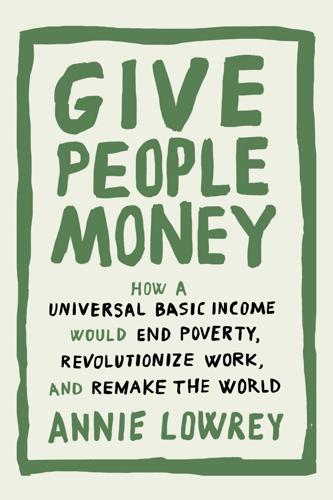
Give People Money
by
Annie Lowrey
Published 10 Jul 2018
The drivers explained how and why in vivid detail. “There were more and more people jumping on to Lyft and Uber, especially Uber, and then at one point, Uber was doing this special thing to try and get more passengers, where they did a discount or they took out the service charge for passengers,” Heather Smith, an Uber and Lyft driver, told me. (I agreed to withhold her real last name, to avoid retaliation by her employers.) “When I would look at my breakdown of payment, I was basically seeing them pay themselves and then take half the service charge and then pay me. I said, ‘Fuck it. Good-bye, Uber.’ ” She told me that she did make decent money mentoring new drivers for Lyft.
…
On-demand, gig-economy firms usually do not hire their drivers or shoppers or delivery workers, instead classifying them as contractors and buying their services. That means that the companies are not subject to minimum-wage rules. They do not need to divert their workers’ paychecks into unemployment-insurance funds or Social Security. They are not required to offer health care to workers who spend full-time hours on the clock. Many Uber and Lyft drivers feel the companies had misled them, promising, if not employment in a traditional sense, a stake in something. “When you sign up, they refer to you as a partner,” Seth McGrath, a forty-year-old Uber driver, chimed in, as everyone around the table nodded. “Which is so not true. They keep you at arm’s length, right?
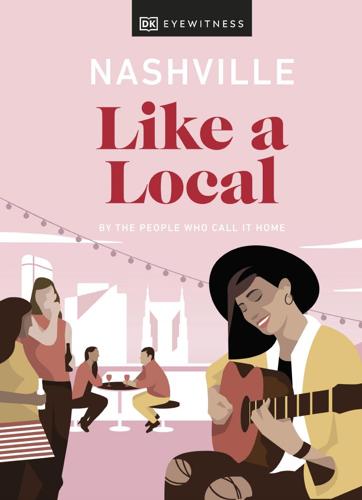
Nashville Like a Local: By the People Who Call It Home
by
Dk Eyewitness
Published 28 Sep 2021
example, is the code for the entrance of Marathon Music Works. Simply download the free what3words app, By car or taxi type a what3words address into Music City is heavily reliant on cars, with the search bar, and you’ll know most locals driving their own wheels exactly where to go. during the day and making use of cabs and rideshares – like Uber and Lyft – on B C Y C L E nights out. There are some drawbacks, Your local bikeshare scheme like heavy traffic and eye-wateringly The app for Nashville’s BCycles expensive parking (Downtown, we see helps you find docking stations, you). But rideshares are well developed easily pay for your ride, and get and a reliable way to get around the city.
…
{map 5} type a what3words address into browsing its boutiques and the city by the Cumberland Music City is heavily reliant on cars, with the search bar, and you’ll know stopping for coffee. {map 4} River, hipster HQ East The Gulch most locals driving their own wheels exactly where to go. Nashville has gentrified in With its high-rise condos during the day and making use of cabs Berry Hill the last decade, forcing out and rooftop bars, the Gulch and rideshares – like Uber and Lyft – on Forget Music Row: it’s all lower income families. That stands out against Nashvil e’s B C Y C L E nights out. There are some drawbacks, about Berry Hill these days. said, it’s still loved for its small town charm. But what it Your local bikeshare scheme like heavy traffic and eye-wateringly It’s trendy, innovative, and cocktail bars, vintage stores, lacks in village vibes it makes The app for Nashville’s BCycles expensive parking (Downtown, we see fast becoming a music hub and record shops.
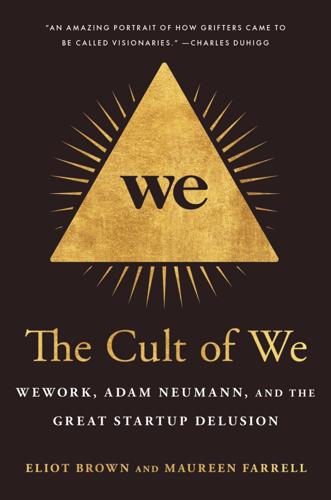
The Cult of We: WeWork, Adam Neumann, and the Great Startup Delusion
by
Eliot Brown
and
Maureen Farrell
Published 19 Jul 2021
By 2016, Uber was already seven years old, with no defined plans on when to go public. WeWork was six. Airbnb was eight. Staying private meant an easier life for a founder—without the scrutiny one faced from the press and investors over quarterly earnings reports. The lack of scrutiny let problems fester inside these companies. Companies like Uber and Lyft got used to losing money without much concern from their investors. The entire culture of many of these startups was based on revenue growth, not on curtailing excessive spending. It was a formula that worked so long as the CEOs could persuade big investors in one-on-one meetings to keep giving them more money at higher valuations.
…
WeWork lost more than $3,000 every minute in 2018. This was a particularly striking amount of money to lose, given that in 2000 Mark Dixon’s serviced office company, Regus, which essentially had the same business model and a similarly torrid growth rate, nearly broke even, reporting a tiny loss of less than $6 million. Even Uber and Lyft—known for their extremely heavy losses—were at least curtailing their losses as they grew. WeWork’s losses simply grew with the company, quarter after quarter. Waste was everywhere. You could reach out and touch it. Take the bright pieces of modern lounge furniture that adorned WeWork’s lobbies, key to the company’s image.
…
Just as he had been doing with the banks, Neumann pushed the decision to the last possible moment. * * * — As WeWork staff jousted over photos and verbiage that summer, the winds in the market were changing, and not for the better. For much of the decade, Silicon Valley had been hypnotized by the “growth at all costs” approach—believing that companies like WeWork, Uber, and Lyft could spend whatever they wanted, so long as revenue kept soaring. Driving it all was an assumption that public market stock investors were so starving for fast-growing companies that they wouldn’t care about losses; they would value these companies even higher than SoftBank and other private market investors.
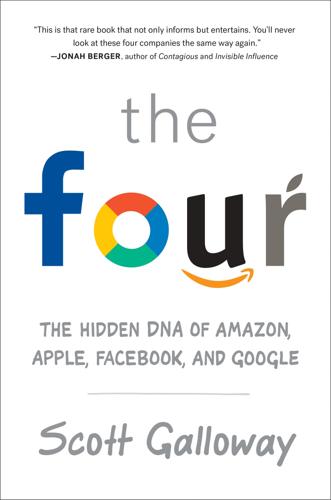
The Four: How Amazon, Apple, Facebook, and Google Divided and Conquered the World
by
Scott Galloway
Published 2 Oct 2017
March 15, 2015. http://www.businessinsider.com/uber-offering-50000-jobs-per-month-to-drivers-2015-3. 22. Uber Estimate. http://uberestimator.com/cities. 23. Nelson, Laura J. “Uber and Lyft have devastated L.A.’s taxi industry, city records show.” Los Angeles Times. April 14, 2016. http://www.latimes.com/local/lanow/la-me-ln-uber-lyft-taxis-la-20160413-story.html. 24. Schneider, Todd W. “Taxi, Uber, and Lyft Usage in New York City.” February 2017. http://toddwschneider.com/posts/taxi-uber-lyft-usage-new-york-city/. 25. “Scott Galloway: Switch to Nintendo.” 26. Deamicis, Carmel.
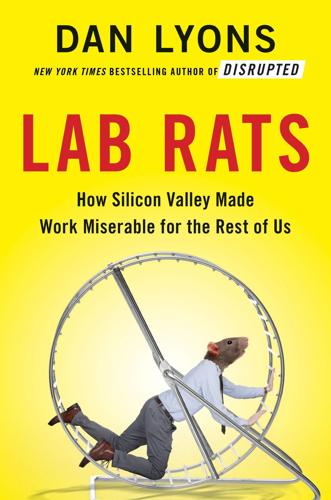
Lab Rats: How Silicon Valley Made Work Miserable for the Rest of Us
by
Dan Lyons
Published 22 Oct 2018
A few hours earlier Schifter had posted a long essay on Facebook explaining his reasons. He said that he had once made a good living driving a limo in New York, earning enough to buy a house outside the city, in the Poconos. But then came the onslaught of new drivers working for services like Uber and Lyft, and rates plummeted for everyone, so low that nobody could make a living as a driver anymore. Schifter was putting in seventeen-hour days, sometimes earning as little as $4 an hour. He fell into debt. He missed a mortgage payment and was in danger of losing his home. “I have been financially ruined,” he wrote.
…
“I will not be a slave working for chump change. I would rather be dead.” Silicon Valley promotes the gig economy as an innovative new industry that is creating jobs for millions of people. But the jobs being created are mostly bad ones. Meanwhile, gig-economy companies threaten established industries. Airbnb steals business from hotels. Uber and Lyft have hurt business at car-rental companies like Hertz and Avis, and have utterly decimated the taxi and livery business. Pundits like to talk about “creative destruction” as if it were an abstract concept, but the sight of a driver parked in front of City Hall with his head blown off served as a reminder that all this change and so-called progress is coming at a very high cost to actual human beings.
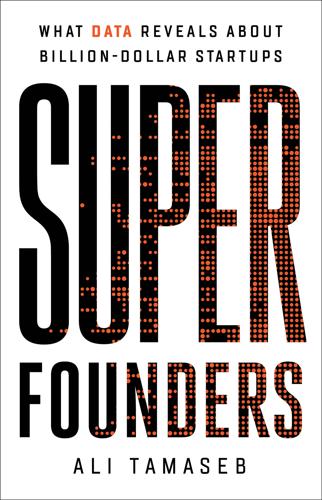
Super Founders: What Data Reveals About Billion-Dollar Startups
by
Ali Tamaseb
Published 14 Sep 2021
“They’re just not internet-native companies. They’re having to adapt these legacy systems to the modern age.” Without the burden of outdated software and processes, Flexport’s end-to-end solution will continue to move the freight-forwarding industry, well, forward. COMPETING AGAINST A HIGHLY FUNDED STARTUP As mentioned, Uber and Lyft provide a much less common example of two highly funded startups finding success in the same space. But neither company started out in the ride-hailing space as we know it today, and two other companies helped shape their story: Zimride and Sidecar. The first company on the scene was Zimride, which began offering ridesharing between cities in 2007.
…
When Lyft and Sidecar became popular, Uber realized the larger opportunity afforded by the gig economy, transitioned from the luxury service to the affordable service, and launched UberX. Sidecar faced multiple problems. Sidecar’s drivers could set their own price, and riders could choose the driver, which created too much complexity. Most importantly, they couldn’t raise as much capital as Uber and Lyft did. “We were unable to compete against Uber, a company that raised more capital than any other in history and is infamous for its anti-competitive behavior,” said Sidecar’s CEO, Sunil Paul. “The legacy of Sidecar is that we out-innovated Uber but still failed to win the market. We failed—for the most part—because Uber is willing to win at any cost and they have practically limitless capital to do it.”6 Sidecar shut down operations on New Year’s Eve in 2015, and General Motors acquired its remaining assets and intellectual property.

Rule of the Robots: How Artificial Intelligence Will Transform Everything
by
Martin Ford
Published 13 Sep 2021
This is the primary reason that Uber views autonomous vehicle companies, particularly Waymo, as existential threats and chose to invest heavily in a self-driving program of its own beginning in 2016. The problem with the assumption that self-driving technology will ride to their rescue is that Uber and Lyft are viewed as attractive internet-based businesses—and valued accordingly—because they act primarily as digital intermediaries, harvesting a slice of every transaction in return for providing software that automatically matches riders with drivers. This allows the companies to completely avoid the risky and unpleasant parts of the taxi business: stuff like owning, financing, maintaining and insuring vehicles.
…
At the 2019 Autonomy Day event, Musk described a scheme in which Tesla owners would be able to have their cars participate in a robotaxi service run by the company. Tesla would get a cut of the ride-sharing fee in the same way that Apple generates revenue from its App Store. One interesting thing about this proposal is that it solves the ownership and maintenance problem that might eventually plague companies like Uber and Lyft. Tesla may have found a way to step into the role of a pure internet intermediary, while avoiding the need to own a fleet of cars. Most Tesla owners might not want to share their vehicles with strangers, but if the plan proves viable, many customers would presumably buy Tesla’s vehicles as a business investment, rather than as personal cars.

Vassal State
by
Angus Hanton
Published 25 Mar 2024
Although Amazon does not have the UK market to itself, it does have about 40 per cent, and its competitors are all American: the other big players being Google Cloud Storage and Microsoft’s Azure. Even for the smaller US tech firms, diversification and innovation are at the heart of their plans. Despite lack of profitability, Uber and Lyft have poured billions of dollars into research-and-development projects such as driverless cars. Larger firms, meanwhile, push to buy up potential competitors and out-innovate their rivals to create unassailable market positions. In the past decade, Facebook decided to out-compete social media rival Snapchat by buying and rebuilding Instagram.
…
Based in Boston, Massachusetts, the company’s website announces: ‘we’re on a mission to enable simple and responsible urban living – a future filled with more car-sharing members than car owners… from the Big Apple to Big Ben.’10 Owned by the Avis Budget Group of New Jersey, Zipcar also satisfies drivers’ desire for less polluting solutions with the positive message of a ‘sharing economy’. Theirs is a very top-down version of ‘sharing’: the company owns the asset and many people rent it. It works even better for other car-sharing organisations, such as Uber and Lyft, whose chauffeurs themselves provide the cars while the platform collects a payment every time the vehicle is used. Although companies that rent out equipment earn a high return on their capital, it is the next level that gets them excited, the stage beyond one-off rentals. What finance directors crave is a regular, repeating rental: the subscription model.
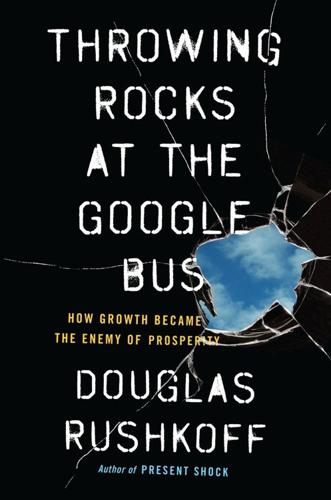
Throwing Rocks at the Google Bus: How Growth Became the Enemy of Prosperity
by
Douglas Rushkoff
Published 1 Mar 2016
That’s the problem with any of the many new ways we have of earning income through previously off-the-books activities. On the one hand, they create thrilling new forms of peer-to-peer commerce. eBay lets us sell our attic junk. Web site Airbnb lets us rent out our extra bedrooms to travelers. Smartphone apps Uber and Lyft let us use our vehicles to give people rides, for money. Unlike many of the other platforms we’ve looked at so far, these opportunities don’t lead to power-law distributions, because a car or home can be hired only by one person at a time. As long as you’re listed on the network and have decent reviews, you should do as well as anyone else.
…
Their ads show people sharing an extra bedroom and a place at the family table, but the statistics reveal that the vast majority (87 percent) of hosts leave their homes in order to rent them.37 Homes become amateur hotels, as the original residents try to live off the arbitrage between the rent they pay, the rent they earn, and the cost of living somewhere other than home. Even if you are having trouble finding work in the digital economy, you no longer have an excuse for being entirely off the books. Just don’t let the landlord find out what you’re doing. Likewise, the amateur taxi networks of Uber and Lyft are great ways for otherwise “underemployed” vehicle owners to make a few extra bucks. There’s no reason now to leave a worthwhile asset or hour off the books—even if the underemployed are really underpaid freelancers working a whole lot of hours already. These apps are not about sharing space in a vehicle—like driving a friend to the train station—they’re about monetizing unemployed people’s time and stuff.
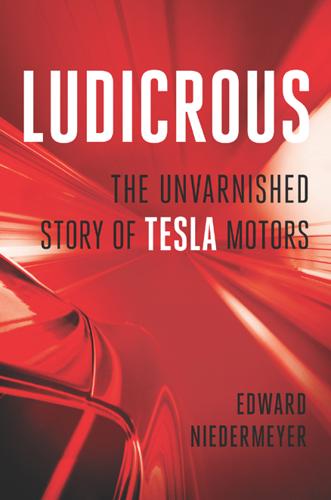
Ludicrous: The Unvarnished Story of Tesla Motors
by
Edward Niedermeyer
Published 14 Sep 2019
In effect, Musk was arguing that Teslas were about half a decade away from becoming economic perpetual-motion machines. As long as you could qualify for a loan of $35,000 or more, you could own an asset that could not only pay for itself, but possibly even earn its owner a net profit. Though Tesla owners would be forbidden from renting out their autonomous vehicles using Uber and Lyft, a “Tesla Network” would facilitate these private robotaxis, and Tesla would even provide its own fleet in localities where demand exceeded supply. Having pivoted from electric drive to autonomy, Musk was now following his Silicon Valley peers into the promised land of shared autonomy. But because Tesla was a traditional car company built on private ownership, it couldn’t simply shift overnight from sleek, expensive, powerful status-endowing cars to the anonymous shared mobility pods that Google and others in the space envisioned.
…
Meanwhile Tesla’s struggles with the traditional auto industry competencies of manufacturing and service, as well as the low market valuation of every other automaker, meant Tesla’s all-important valuation was more dependent on autonomous-drive technology than ever. If you believed Tesla’s promise, it was not only the sole automaker offering the hottest option on a new car, but it was also a potential disruptor of the hottest companies in the mobility technology space: Uber and Lyft. If you didn’t, the brazenness of Tesla’s ploy to collect money for a feature it couldn’t possibly deliver on raised huge questions about what else the company was bluffing about and what it was really worth . . . and once you started down that line of questioning, there seemed to be no end to it.
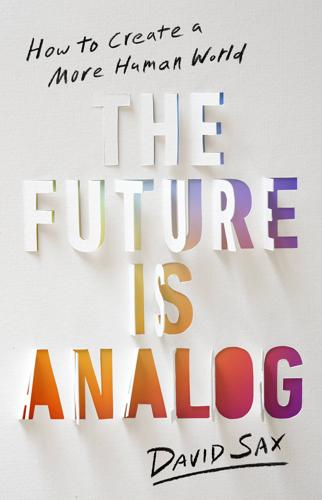
The Future Is Analog: How to Create a More Human World
by
David Sax
Published 15 Jan 2022
Fleets of self-driving electric vehicles were presented as the solution to so many of a city’s problems—public transit and trash collection, carbon emissions, congestion and accidents—and these would be supplemented by other digitally enabled vehicles, like the electronic scooters that already littered the sidewalks of cities around the world. Rather than replacing cars, many smart city plans proposed harnessing their true potential. By 2018 many cities were cutting deals with companies like Uber and Lyft to weave private ride sharing into their transit systems, based on the widely accepted promise that rideshares easily reduced congestion, emissions, and the other drawbacks of private car ownership, and paying them would be cheaper than investing in expanded bus service or building costly subway lines.
…
But if you lived in an actual city, like San Francisco, it did not. “Driverless cars and electric cars are still fucking cars!! They’re cars!!!” fumed Roberta Gratz, when we spoke about Sidewalk Toronto’s plans. “They’re not going to eliminate traffic; they’re going to increase traffic.” Studies already showed that this had happened with Uber and Lyft and other ride-sharing companies worldwide: all those drivers, cruising around in their empty cars, waiting for the next ping of a pickup (an activity known as deadheading), actually added more pollution and congestion to cities, even compared to privately owned cars. Ride sharing’s digital future just put more cars on the road, and from what I saw every day, their drivers already drove like idiotic robots.

Enshittification: Why Everything Suddenly Got Worse and What to Do About It
by
Cory Doctorow
Published 6 Oct 2025
But if an indie audiobook store like (the excellent) Libro.fm sells you that audiobook through Apple’s platform, it pays Penguin Random House $20 and owes Apple a further $7.50. In other words, if Libro.fm tries to sell audiobooks through an iPhone app, it loses money on every sale. Of course, this doesn’t apply to everyone: Uber and Lyft are exempt from these fees. Enshittifiers stick together. Case Study: Twitter When Twitter started, its most obvious characteristic was its brevity. Users were limited to sending messages no longer than 140 characters, brief enough to fit into the short message service (SMS) system, the standard text-messaging system used by mobile phones around the world.
…
I had a conversation with the company founders in 2022 during which they told me that a DoorDash insider told them that there were forty engineers assigned to blocking Para from uncovering Dashers’ full compensation. Today, Para has expanded its offerings, with an “autodecline” feature that lets gig workers automatically decline any job offer that is below a certain level. This is part of a “multiapp” strategy that aims to let gig workers set up accounts with multiple services—Uber and Lyft, DoorDash and Grubhub, and so on—and get a dashboard showing them which service is offering the highest payout from moment to moment, playing the gig companies off against one another. Gig workers are ground zero for this kind of counter-twiddling, because they’re the first class of workers whose boss is an app.
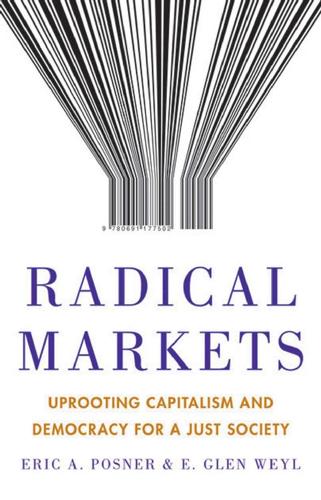
Radical Markets: Uprooting Capitalism and Democracy for a Just Society
by
Eric Posner
and
E. Weyl
Published 14 May 2018
Facebook, Google, and Bing use a system derived from Vickrey’s auction to allocate advertising space on their web pages. Vickrey’s insights about urban planning and congestion pricing are slowly changing the face of cities, and they play an important role in the pricing policies of ride-hailing apps like Uber and Lyft.2 However, none of these applications reflects the ambition that sparked Vickrey’s work. When Vickrey won the Nobel Prize, he reportedly hoped to use the award as a “bully pulpit” to bring George’s transformative ideas and the radical potential of mechanism design to a broader audience.3 Yet Vickrey died of a heart attack three days after learning of his prize.
…
In the coming years, experiments with QV will offer a proving ground for the practical utility of QV. RATING AND SOCIAL AGGREGATION Rating and social aggregation systems fuel today’s digital economy. Reputation systems are the crucial trust mechanisms that allow “sharing economy” services like Airbnb, VRBO, Uber, and Lyft to win consumer acceptance and give providers the confidence to adopt the system.46 They play a core role in the popular search services offered by Amazon, Google, Apple’s app store, and Yelp. Yet a growing body of evidence suggests these systems are badly broken. As noted above, almost all reviews cluster toward five stars, and a few at one star, making the resulting feedback biased and what statisticians call “noisy,” that is, not very accurate.47 Other online platforms, such as Facebook, Reddit, Twitter, and Instagram, gather limited information because they only allow “likes,” and other limited forms of response, rather than allowing participants to exhibit exceptional enthusiasm, or distaste, for particular content.
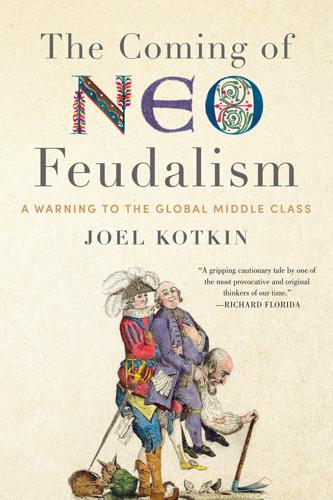
The Coming of Neo-Feudalism: A Warning to the Global Middle Class
by
Joel Kotkin
Published 11 May 2020
The instability in employment is widely seen as one reason for the country’s ultra-low birth rate.15 Many of today’s “precariat” work in the contingent “gig” economy, associated with firms such as Uber and Lyft. These companies and their progressive allies, including David Plouffe (who managed Barack Obama’s presidential campaign in 2008), like to speak of a “sharing” economy that is “democratizing capitalism” by returning control of the working day to the individual. They point to opportunities that the gig economy provides for people to make extra money using their own cars or homes. The corporate image of companies like Uber and Lyft features moonlighting drivers saving up cash for a family vacation or a fancy date while providing a convenient service for customers—the ultimate win-win.16 Yet for most gig workers there’s not very much that is democratic or satisfying in it.
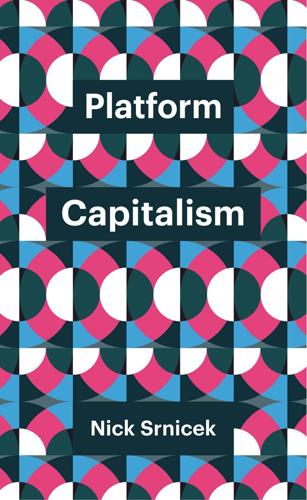
Platform Capitalism
by
Nick Srnicek
Published 22 Dec 2016
As a result, Airbnb, Slack, Uber, and many other start-ups use AWS.79 Uber further relies on Google for mapping, Twilio for texting, SendGrid for emailing, and Braintree for payments: it is a lean platform built on other platforms. These companies have also offloaded costs from their balance sheets and shifted them to their workers: things like investment costs (accommodations for Airbnb, vehicles for Uber and Lyft), maintenance costs, insurance costs, and depreciation costs. Firms such as Instacart (which delivers groceries) have also outsourced delivery costs to food suppliers (e.g. Pepsi) and to retailers (e.g. Whole Foods) in return for advertising space.80 However, even with this support, Instacart remains unprofitable on 60 per cent of its business, and that is before the rather large costs of office space or the salaries of its core team are taken into account.81 The lack of profitability has led to the predictable measure of cutting back on wages – a notably widespread phenomenon among lean platforms.
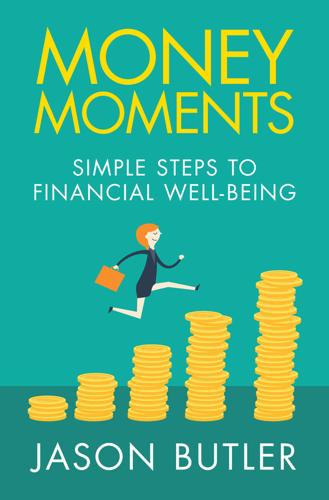
Money Moments: Simple Steps to Financial Well-Being
by
Jason Butler
Published 22 Nov 2017
Thirty years later my current car is a lot more comfortable (and reliable) than that old Vauxhall, but it is also a lot more expensive. The cost of car insurance for young people has skyrocketed over the past decade, to the extent that is can be almost as much as the value of the vehicle. This often makes it unaffordable without financial help from their family. The advent of ride hailing apps like Uber and Lyft, and the eventual availability of autonomous electric cars, together with wider adoption of car-sharing and better public transport, as well as rising vehicle running costs, are combining to undermine car ownership among younger people in urban areas. ‘Our intention is to make Uber so efficient, cars so highly utilized, that for most people it is cheaper than owning a car.’ said Uber’s then CEO Travis Kalanick in 2015.
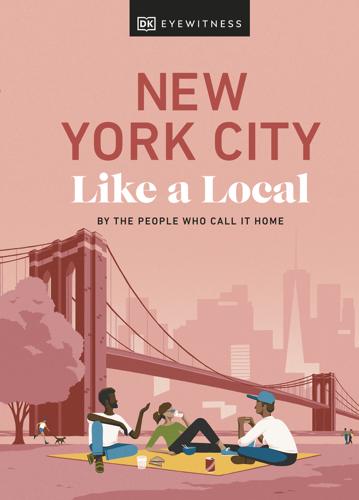
New York City Like a Local
by
Dk Eyewitness
It accepts all contactless credit, debit, and prepaid cards; digital wallets from Google, Apple, and Samsung; and wearables such as Apple Watch and Fitbit. There’s a weekly fare cap, which means that customers automatically receive free, unlimited rides for the rest of the week once they have paid $33 in fares – the same as taking 12 trips. By car or taxi Owning a car is rare in Manhattan. Instead, New Yorkers largely rely on taxi apps like Uber and Lyft or occasionally use those iconic yellow cabs. That said, the traffic-clogged streets mean public transportation is often a better choice, even in rush hour. Download these We recommend you download these apps to help you get around the city. WHAT3WORDS Your geocoding friend A what3words address is a simple way to communicate any precise location on earth, using just three words.

Chicago Like a Local
by
DK
The city’s roads can get congested in the Loop, particularly during rush hours. Outside the Loop, traffic is lighter and parking is readily accessible and often free (though make sure you check street permit signs). Private cab companies usually stick to the touristy districts and can be expensive; Uber and Lyft operate everywhere in the city. Download these We recommend you download these apps to help you get around the city. WHAT3WORDS Your geocoding friend A what3words address is a simple way to communicate any precise location on earth, using just three words. ///online.films.cares for example, is the code for the Greetings from Chicago mural.
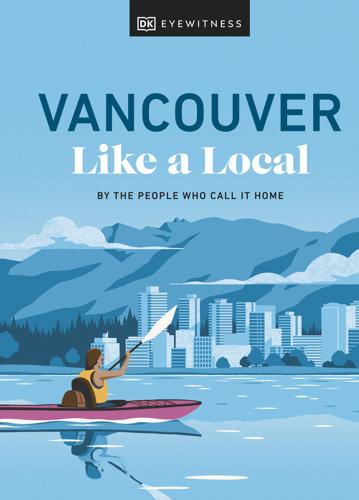
Vancouver Like a Local
by
Jacqueline Salomé
To pay, buy a Compass Card from any Translink station and pre-load the card with money. You can also pay by contactless or your phone. Remember to tap the same card when exiting. www.compasscard.ca By car or taxi Between walking, cycling, and public transport, there’s little need to travel by car in town. For longer trips, rideshare apps like Uber and Lyft are available. Cabs are less common but, if that’s more your style, Yellow Cab is a good option. If you do drive, be aware that parking spots can be scarce, and roads can get congested during rush hour. Download these We recommend you download these apps to help you get about the city. WHAT3WORDS Your geocoding friend A what3words address is a simple way to communicate any precise location on earth, using just three words.

Don't Be Evil: How Big Tech Betrayed Its Founding Principles--And All of US
by
Rana Foroohar
Published 5 Nov 2019
Netflix, for example, recently raised $2 billion through a junk bond offering to fund new content.21 It will be interesting to see how the next round of big anticipated IPOs goes—or if they go at all. Many top tech companies have opted to stay private longer, bidding up their valuations and raising expectations. Both Uber and Lyft completed disappointing IPOs as I was finishing this book. I suspect they won’t be the only companies unable to live up to the hype. I’m thinking in particular of Elon Musk’s SpaceX, but also Peter Thiel’s Palantir, which has been scaling back its thirteen-course lobster tail and sashimi lunches in anticipation of its public offering (probably a good idea, given that the company has yet to turn a profit in its fourteen-year history, despite having a valuation of $20 billion).22 Today’s darlings can so easily become tomorrow’s discards; as I finish this book, SoftBank, the bloated Japanese tech investment firm, has just scrapped its $16 billion plan to buy a stake in WeWork.
…
said Eric Schmidt to me back in 2015 when I interviewed him for the Kalanick profile. (Google Ventures had invested a whopping $258 million in Uber in 2013, pretty much giving Kalanick a blank check for whatever terms he wanted.)32 “Cab drivers can’t afford million-dollar medallions, so they end up working for financing companies.” It’s a fair point; while Uber and Lyft have taken much of the blame for the disruption in the taxi industry, recent New York Times reporting has also shown that city officials themselves have for years been in cahoots with dicey lenders to drive up the prices of official Yellow Cab medallions, which have since crashed, leaving many drivers in the lurch.33 Schmidt told me four years ago that he believed people like Kalanick were necessary to disrupt the system.

Why We Drive: Toward a Philosophy of the Open Road
by
Matthew B. Crawford
Published 8 Jun 2020
Mike Isaac, “Uber Defies California Regulators with Self-Driving Car Service,” New York Times, December 16, 2016, https://www.nytimes.com/2016/12/16/technology/uber-defies-california-regulators-with-self-driving-car-service.html. 9.John Harris, “With Trump and Uber, the Driverless Future Could Turn into a Nightmare,” Guardian, December 16, 2016, https://www.theguardian.com/commentisfree/2016/dec/16/trump-uber-driverless-future-jobs-go. 10.These are the findings of the city’s transport department as characterized by Nicole Gelinas in “Why Uber’s Investors May Lose Their Lunch,” New York Post, December 26, 2017, available at https://www.manhattan-institute.org/html/why-ubers-investors-may-lose-their-lunch-10847.html. 11.“Uber and Lyft Want to Replace Public Buses,” New York Public Transit Association, August 16, 2016, https://nytransit.org/resources/transit-tncs/207-uber-and-lyft-want-to-replace-public-buses. 12.Huber Horan, “Uber’s Path of Destruction,” American Affairs 3, no. 2 (Summer 2019). 13.Horan, “Uber’s Path of Destruction.” Horan cites structural problems that are intrinsic to the taxi market, requiring extra-market remedies.
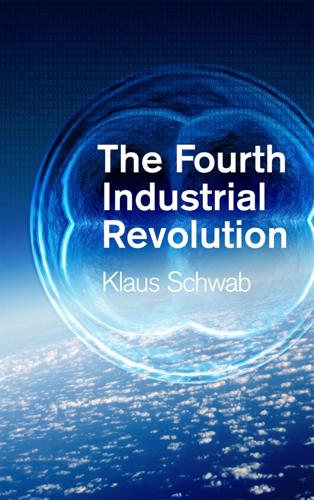
The Fourth Industrial Revolution
by
Klaus Schwab
Published 11 Jan 2016
Well-known examples of the sharing economy exist in the transportation sector. Zipcar provides one method for people to share use of a vehicle for shorter periods of time and more reasonably than traditional rental car companies. RelayRides provides a platform to locate and borrow someone’s personal vehicle for a period of time. Uber and Lyft provide much more efficient “taxi-like” services from individuals, but aggregated through a service, enabled by location services and accessed through mobile apps. In addition, they are available at a moment’s notice. The sharing economy has any number of ingredients, characteristics or descriptors: technology enabled, preference for access over ownership, peer to peer, sharing of personal assets (versus corporate assets), ease of access, increased social interaction, collaborative consumption and openly shared user feedback (resulting in increased trust).

Machine, Platform, Crowd: Harnessing Our Digital Future
by
Andrew McAfee
and
Erik Brynjolfsson
Published 26 Jun 2017
By June 2016, Uber was valued at $68 billion and had raised $15 billion from investors, which it used to aggressively fund even more rapid expansion around the world. In many cities, taxi companies and other incumbents in urban personal transportation have seen their business fall off as Uber has grown. Traditional taxis provided 8.4 million trips in Los Angeles in 2012, the year before the arrival of Uber and Lyft in the city. Within three years, taxi rides had declined by almost 30%, and prearranged taxi rides were down 42%. Further north, San Francisco’s largest taxi company, Yellow Cab Cooperative, filed for bankruptcy in January of 2016. Taxi medallions—transferable licenses to legally operate a cab and pick up street hails—had long been considered good investments.
…
The great majority of Uber’s ride suppliers were not professional chauffeurs; they were simply people who wanted to make money with their labor and their cars. So how did this huge market overcome severe information asymmetries? In 2013, California passed regulations mandating that transportation network companies (TNCs) such as Uber and Lyft conduct criminal background checks on their drivers. These checks certainly provided some reassurance, but they were not the whole story. After all, UberX and its competitor Lyft both grew rapidly before background checks were in place, and by August 2016, BlaBlaCar still did not require them for its drivers.

Automation and the Future of Work
by
Aaron Benanav
Published 3 Nov 2020
The consequence is that, unlike firms in other countries, US firms face no particular need to construct alternative working arrangements to take advantage of vulnerable sections of the labor force. Some firms do utilize alternative working arrangements to get around US labor law—witness the small but significant boom in gig-economy jobs, like Uber and Lyft, which offer work through online platforms as a way of disguising their employees as independent contractors.12 But when all is said and done, just 10 percent of US workers were employed in such arrangements in 2017, including as independent contractors, on-call workers, temp agency workers, and fixed-contract workers.13 Set against this American case, the employment landscape in European and wealthy East Asian countries is more complicated.

The Age of Cryptocurrency: How Bitcoin and Digital Money Are Challenging the Global Economic Order
by
Paul Vigna
and
Michael J. Casey
Published 27 Jan 2015
David Johnston is a senior board member at the Mastercoin Foundation, the body that coordinates the funding for the Mastercoin project, which offers a special software platform for developers to design special decentralized applications that can run on top of the bitcoin blockchain. He says blockchain technology “will supercharge the sharing economy,” that emerging trend in which apartment owners use Airbnb.com to rent out quasi hotel rooms and car owners sign up as self-employed taxidrivers for smartphone-based Uber and Lyft. The idea is that if we can decentralize the economy and foster multiple forms of peer-to-peer exchanges, people will figure out profitable ways to turn much of what they own or control into a marketable service. Johnston is known for having coined the term DApp, for “decentralized autonomous application,” to describe the kind of specialized software programs that could thrive in blockchain-based settings.
…
Got a big idea? Share it online and raise the money online to fund it. Business symbols of this era so far include the personal-apartment rental site Airbnb, the crowdfunding site Kickstarter, the peer-to-peer lending network Lending Club, and the taxi services controlled by individual car owners Uber and Lyft. In some respects these new business models are extensions of a process that began far earlier with the advent of the Internet. While no self-respecting bitcoiner would ever describe Google or Facebook as decentralized institutions, not with their corporate-controlled servers and vast databases of customers’ personal information, these giant Internet firms of our day got there by encouraging peer-to-peer and middleman-free activities.

Virtual Competition
by
Ariel Ezrachi
and
Maurice E. Stucke
Published 30 Nov 2016
Let us also assume taxis, for various reasons, are not a significant competitive restraint. What, if any, competition is left? Uber drivers do not offer discounts, as Uber’s pricing algorithm determines the fare. Nor will Uber drivers necessarily compete by offering better ser vice. One study of Uber and Lyft drivers found that they “distanced themselves from one another by checking other drivers’ locations on the map so that they did not compete with each other for passenger requests. When drivers desired a break but did not want to turn off their driver applications to benefit from an hourly payment promotion, they parked in between the other ridesharing cars in order not to get any requests.”27 So, as more people use Uber in Nashville, more drivers will likewise gravitate to Uber’s platform, which further reduces users’ wait time, increasing Uber’s appeal.
…
One study examined four weeks of Uber data and did not find evidence of surge pricing bringing more drivers out on the roads. Instead, surge pricing appeared to push “drivers already on the job toward neighborhoods with more demand—and higher surge pricing. As a result, some neighborhoods are left with higher waiting times for a car.”15 Another study interviewed Uber and Lyft drivers. Over half of the interviewed drivers said they were “not influenced by surge pricing information as the supply-demand control algorithms failed to accommodate their abilities, emotion, and motivation.”16 As the study found, Surge pricing changed too rapidly and unexpectedly to utilize the information in a strategic way to boost their incomes.

The Lonely Century: How Isolation Imperils Our Future
by
Noreena Hertz
Published 13 May 2020
New legislation approved by the European Parliament in April 2019, and a landmark bill passed in California that took effect in January 2020, make significant progress on these fronts.67 The California bill presumes a worker is an employee unless the employer can show that the worker is free from the control of the company, does work outside the company’s core business and has an independent enterprise in the same nature as the company.68 And in May 2020, California’s attorney general and a coalition of city attorneys in the state, frustrated that Uber and Lyft had not only not taken steps to reclassify their drivers but had also poured millions of dollars into a campaign for a ballot initiative that would exempt them from complying with the law, sued both the companies for wrongly classifying their drivers as independent contractors in violation of this new law.69 The case, at the time of writing, is ongoing.
…
bill_id=201920200AB5; ‘ABC is not as easy as 1-2-3 – Which independent contractor classification test applies to whom after AB5?’, Porter Simon, 19 December 2019, https://www.portersimon.com/abc-is-not-as-easy-as-1-2-3-which-independent-contractor-classification-test-applies-to-whom-after-ab5/. 69 Kate Conger, ‘California Sues Uber and Lyft, Claiming Workers Are Misclassified’, New York Times, 5 May 2020, https://www.nytimes.com/2020/05/05/technology/california-uber-lyft-lawsuit.html. 70 ‘3F reaches groundbreaking collective agreement with platform company Hilfr’, Uni Global Union, 18 September 2018, https://www.uniglobalunion.org/news/3f-reaches-groundbreaking-collective-agreement-platform-company-hilfr. 71 GMB Union, ‘Hermes and GMB in groundbreaking gig economy deal’, 4 February 2019, https://www.gmb.org.uk/news/hermes-gmb-groundbreaking-gig-economy-deal; see also Robert Wright, ‘Hermes couriers awarded union recognition in gig economy first’, Financial Times, 4 February 2019, https://www.ft.com/content/255950d2-264d-11e9-b329-c7e6ceb5ffdf. 72 Liz Alderman, ‘Amazon Loses Appeal of French Order to Stop Selling Nonessential Items’, New York Times, 24 April 2020, https://www.nytimes.com/2020/04/24/business/amazon-france-unions-coronavirus.html. 73 Even then, the kits took weeks to arrive, the ordering process was mired in bureaucracy, and the number of kits was limited.

The View From Flyover Country: Dispatches From the Forgotten America
by
Sarah Kendzior
Published 24 Apr 2015
Louis writer and full-time taxi driver, bemoaned the economic model of ride-share services, which are trying to establish themselves in the city. Noting that they hurt not only taxi drivers but poor residents who have neither cars nor public transport and thus depend on taxis willing to serve dangerous neighborhoods, he dismisses Uber and Lyft as hipster elitists masquerading as innovators: “I’ve heard several young hipsters tell me they’re socially-liberal and economic-conservative, a popular trend in American politics,” he writes. “Well, I hate to break it to you, buddy, but it’s economics and the role of the state that defines politics.

Collaborative Society
by
Dariusz Jemielniak
and
Aleksandra Przegalinska
Published 18 Feb 2020
Admittedly, much of the disruption occurs on the business side of these operations, the economic ramifications are surely huge, and examples abound. For instance, New York City taxi medallions required for operating and owning a yellow cab in the city cost more than a million dollars each at their peak price in 2014, and even then were considered a good investment. Now Uber and Lyft have upended the market for (and the means of) “hailing” taxis. As a result, medallions are an unbearable financial burden to many owners who cannot compete with apps that impose fewer rules governing fares and vehicle equipment.45 Similarly, the rapid growth of Airbnb has wreaked havoc in the hotel industry and the apartment rental market.

The Driver in the Driverless Car: How Our Technology Choices Will Create the Future
by
Vivek Wadhwa
and
Alex Salkever
Published 2 Apr 2017
This paradigm shift will not be without costs or controversies. For sure, widespread adoption of autonomous vehicles will eliminate the jobs of the millions of Americans whose living comes of driving cars, trucks, and buses (and eventually all those who pilot planes and ships). We will begin sharing our cars, in a logical extension of Uber and Lyft. But how will we handle the inevitable software faults that result in human casualties? And how will we program the machines to make the right decisions when faced with impossible choices—such as whether an autonomous car should drive off a cliff to spare a busload of children at the cost of killing the car’s human passenger?

Last Best Hope: America in Crisis and Renewal
by
George Packer
Published 14 Jun 2021
If a ride-share app is quick and easy, if one-click shopping beats driving to the mall, if a too-big-to-fail bank has branches all over the city, it’s hard to see all the negative consequences of monopoly, or want to do much about them. So in 2020 voters in California, who gave Biden 5 million more votes than Trump, also passed a referendum to overturn a new state law that would have allowed drivers for Uber and Lyft the status and rights of employees. As long as prices stay low and services efficient, who really wants change? Even if you feel a vague objection now and then, you still have to live in the world of the behemoths. The Progressives of Perkins’s era attacked the trusts not simply because they were big, but because they threatened the freedom of the independent owner, the industrial worker, and the citizen.
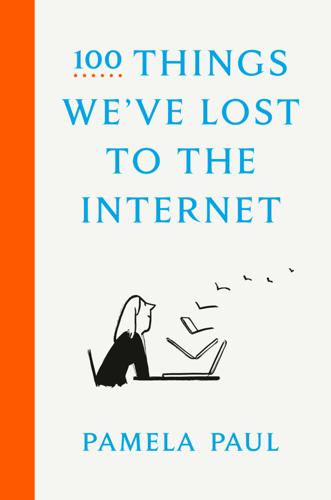
100 Things We've Lost to the Internet
by
Pamela Paul
Published 14 Oct 2021
It was the subject of arguments and the grudging taking of turns, and someone always ended up sidelined as party pooper. Still, the knowledge that someone, perhaps even just that one person, would need to exercise self-control and get everyone home safe at the end of the night conferred a certain degree of restraint to an evening, no matter how debauched. Now everyone can drink themselves silly. With Uber and Lyft ever ready, there’s no need to argue over who will be the designated driver. Teenagers don’t have to make humiliating calls home using their fake sober voice, pleading for their parents to fetch them because everyone left without them. Instead they can booze their way into oblivion and consume lord knows what other iffy intoxicants.
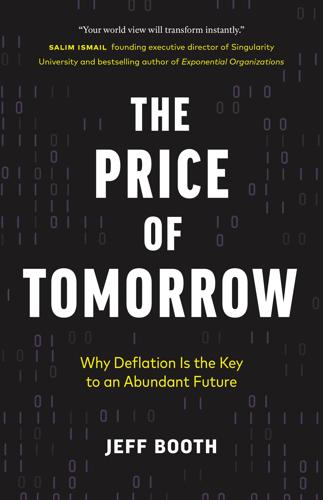
The Price of Tomorrow: Why Deflation Is the Key to an Abundant Future
by
Jeff Booth
Published 14 Jan 2020
A utilization rate increase means less demand for automobiles. When manufacturers can give a choice of 1) a rides-on-demand service for a monthly fee or 2) an ability, when I purchase, to make extra dollars on my car when I’m not using it by adding my vehicle back to the network, what advantage do Uber and Lyft provide? This would turn car manufacturers into platform companies. A business like this will follow a very similar trajectory to other technology platform businesses, since the new model enjoys network effects. That race is important because density of the network (availability and choice of car types) will be the main consideration to rapid adoption.
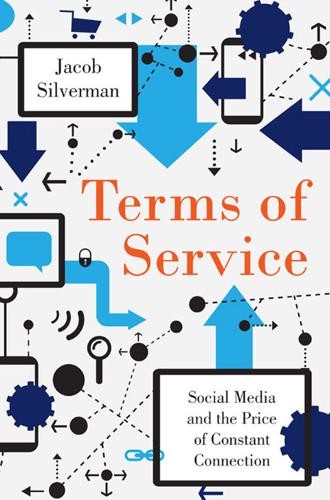
Terms of Service: Social Media and the Price of Constant Connection
by
Jacob Silverman
Published 17 Mar 2015
If you live in New York City, like I do, a taxi that picks you up in Manhattan is legally obliged to take you wherever you want to go, including to one of the other boroughs (with the meter running the whole time, of course). Unless you are violent, disruptive, or otherwise problematic, the driver can’t refuse you a ride based on your skin color or some star rating you’ve accumulated. You can also expect to pay a standard fare, unlike with Uber and Lyft, which are known to institute surge pricing to leverage high demand. Uber claims that surge pricing represents a market-based solution and offers a fair price based on availability. Except that Uber controls the market. They decide how many cars are on the road—the company has been caught asking drivers to stay off the road in order to drive up rates.
…
If I approached a laundry service with such a task, they’d either laugh at me or demand a hefty price to do the work, and understandably so. Some of these companies have helped to spur establishment players toward needed reforms. Taxi services, often seen as resisting innovation, have begun adopting smartphone apps and e-hailing systems to keep up with Uber and Lyft. Airbnb has shown that many people are interested in renting out their homes, despite laws that prevent doing so, and that cities may have to work to accommodate this need. But in the spirit of disruption, these companies tend to show up in a new city promising to lead a revolution, only to be forced—by court order, political pressure, or the realization that existing regulations do some good and are unlikely to be overturned—to start negotiating with political leaders and abide by local laws.
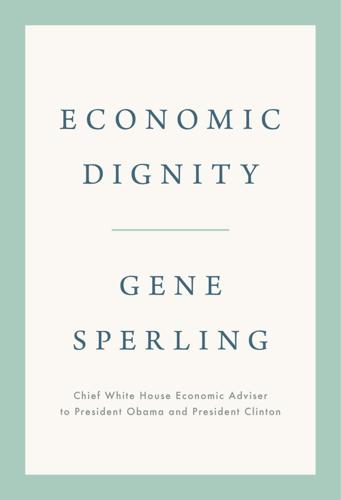
Economic Dignity
by
Gene Sperling
Published 14 Sep 2020
As UberX was launching in 2012, of the nearly two million in-home workers like housekeepers, childcare workers, and direct-care aides—overwhelmingly women and a majority people of color—only 12 percent received health insurance from their job, and only 7 percent received a pension plan.14 According to a survey by the National Domestic Workers Alliance, fewer than 2 percent of domestic workers in 2011 received retirement or pension benefits from their primary employer, and only 4 percent received employer-provided health insurance; 65 percent of domestic workers did not have any health insurance.15 Even today, few realize that before the ride-sharing revolution, the taxi drivers that people used for generations rarely had health-care coverage or qualified for unemployment insurance or any help during downturns and recessions.16 For example, a 2007 study of New York City cabdrivers found they were generally classified as independent contractors—just as Uber and Lyft drivers are now—and did not qualify for overtime pay despite typically working more than seventy hours a week. A large majority lacked health insurance, despite substantial risk of on-the-job injuries.17 These facts may not have been easily captured in traditional job growth statistics or GDP measurements, but they mattered to people’s lives.
…
Not only was she denied maternity leave, but the next day she was fired, and because she was not an employee, she did not have access to unemployment insurance.8 With so much riding on whether you receive a W-2 or a 1099, unions and worker advocates are correct to make the fight over misclassification a top-tier economic battle and insist that millions of gig workers—including most Uber and Lyft drivers—should be classified as employees, as they successfully did in a hard-fought 2019 legislative battle in California.9 This is the right fight under our current structure. Too many workers today get the worst of all worlds. They have neither the true autonomy and flexibility of being their own boss nor the economic benefits and security of being a W-2 employee where at a minimum their employer pays its half of Social Security and Medicare payroll taxes and ensures they are part of the unemployment insurance system.

Coders: The Making of a New Tribe and the Remaking of the World
by
Clive Thompson
Published 26 Mar 2019
(In New York City alone, in 2018 there were only 13,578 traditional taxis, but the number of ride-hail drives had exploded to 80,000.) Certainly, drivers who were only doing it for spare money were thrilled to have a way to quickly pick up some extra pocket money; Uber and Lyft made it possible to do driving as piecework. But it was bad news for anyone looking to drive as a reliably steady gig, a job that historically has been one of the easier-to-acquire forms of work for immigrants in big cities. “What Uber and Lyft have done is come into the industry and wreck it,” as the Nigerian cabdriver Nnamdi Uwazie told NBC. By 2017, several cabdrivers had committed suicide and blamed the ride-hail firms for destabilizing their work so massively that it wasn’t possible to rely on driving for a predictable income.

Evil Geniuses: The Unmaking of America: A Recent History
by
Kurt Andersen
Published 14 Sep 2020
Among those fast-food workers are some of the 3.4 million American cashiers, who are officially distinct from the 4.1 million American retail sales workers—and obviously the great majority of all of them are replaceable sooner rather than later by e-commerce and improved self-checkout machines, known in the industry as “semi-attended customer-activated terminals.” Starting now, retail chains will have a public health argument for replacing workers behind the counters with machines. The most common American job, however, has been driver—the 4 or 5 million FedEx and UPS and tractor-trailer and bus drivers, and the maybe 2 million taxi and Uber and Lyft drivers. During this decade, autonomous vehicles will begin making the 6 or 7 million (potentially infectious) people doing those jobs redundant as well. That debate over whether to blame automation or cheap labor for eliminating U.S. jobs and suppressing wages is continuing to become moot, because robots are replacing foreign workers as well, both here and abroad.
…
As that second category of workers grew from a minority to the overwhelming majority during the last half of the last century, relatively few of them remained or became successfully unionized—that was left mainly to employees of state and local government, hospitals, hotels, casinos, and show business. As workplaces became smaller and employees more dispersed—or transformed into pseudo-nonemployees, like at Uber and Lyft—the work of organizing workers got harder. But along with the public’s reviving wish for big government to tackle big problems and projects, the organized labor tide may be turning as well. Answering Gallup’s regular binary question in 2019 about approval or disapproval of unions, people were pro-labor by two to one; only a decade ago, the split was about even.
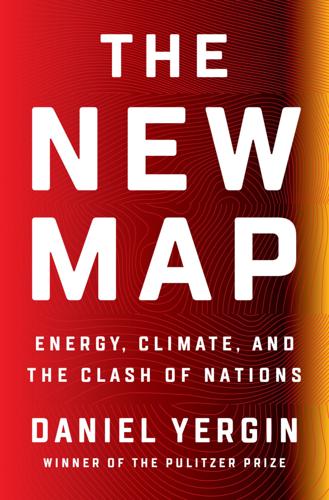
The New Map: Energy, Climate, and the Clash of Nations
by
Daniel Yergin
Published 14 Sep 2020
They would be contractors, not employees. In other words, it’s a BYOC model—Bring Your Own Car. Uber drivers, 60 percent of whom have other jobs, have become prime examples for what became known as the “gig economy.” Both Uber and Lyft also rolled out modern versions of carpooling services that match up a rider with another rider in close proximity headed to nearby destinations. Uber and Lyft rolled forward, opening in city after city. Customers, initially many of them millennials, were quickly won over. In its quest to expand, Uber went to war with local taxicab drivers and owners and transportation regulators, all of whom opposed it as an unregulated taxi company.
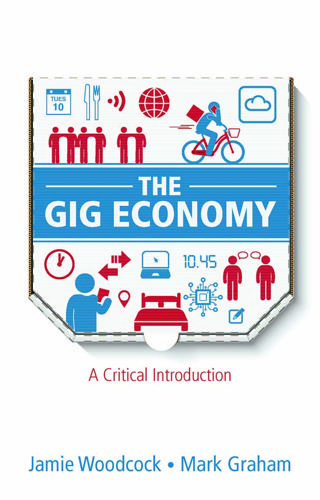
The Gig Economy: A Critical Introduction
by
Jamie Woodcock
and
Mark Graham
Published 17 Jan 2020
This is because, in many locales, the self-employed are not allowed to form trade unions like workers or employees are. In those places, doing so is seen as operating like a price-setting cartel rather than simply providing a means for workers to bargain over their pay. In fact, the US Chamber of Commerce, of which Uber and Lyft are members, has argued in a Seattle court that ‘by allowing drivers to bargain over their pay, which is based on fares received from passengers, the city would permit them to essentially fix prices in violation of federal antitrust law.’10 This measure has been seen as an attempt to prevent the Teamsters from organizing Uber drivers in Seattle.

Seriously Curious: The Facts and Figures That Turn Our World Upside Down
by
Tom Standage
Published 27 Nov 2018
The grim toll of motor-vehicle deaths is widely seen as unavoidable, given that the United States is a large, sprawling country primarily designed around the automobile. But around a third of these deaths has involved drunk drivers, suggesting that there is, in fact, substantial room for improvement. Indeed, it appears that the advent of ride-hailing apps like Uber and Lyft has had a welcome impact on road safety. According to a working paper by Jessica Lynn Peck of the Graduate Centre at the City University of New York, the arrival of Uber in New York City may have helped reduce alcohol-related traffic accidents by 25–35%, as people opt to hail a ride home after a night out, rather than driving themselves.

The Age of AI: And Our Human Future
by
Henry A Kissinger
,
Eric Schmidt
and
Daniel Huttenlocher
Published 2 Nov 2021
They also point out, correctly, that while many people worry about killer robots who achieve human-level sentience and mow us all down with Uzis, a much bigger near-term danger lurks in the innocuous-seeming AIs we all use every day, from the feed-ranking algorithms of social media apps to the automated dispatch systems that power Uber and Lyft.” —Kevin Roose, New York Times Book Review “This book is eye-opening, even for those who are already familiar with the technology. It puts AI and its development in the context of history, networks, nations and world order, philosophy and ethics like no other before—a context we greatly need if we’re going to partner with AI to chart our future.”

Palo Alto: A History of California, Capitalism, and the World
by
Malcolm Harris
Published 14 Feb 2023
Brad Stone, The Upstarts: How Uber, Airbnb, and the Killer Companies of the New Silicon Valley Are Changing the World (New York: Little, Brown, 2017), 329. 15. Rowland Manthorpe, “Forget Uber vs Lyft, the Real Funding Battle Is between Saudi Princes and Canadian Teachers,” Wired UK, October 20, 2017. 16. Therese Poletti, “Uber and Lyft Are Staging a Ridiculous Race for Fake Profits,” MarketWatch, accessed August 5, 2021, https://www.marketwatch.com/story/uber-and-lyft-are-staging-a-ridiculous-race-for-fake-profits-11628205337. 17. Faiz Siddiqui, “Uber, Other Gig Companies Spend Nearly $200 Million to Knock Down an Employment Law They Don’t Like—And It Might Work,” Washington Post, October 26, 2020. 18.
…
Airbnb undermined the hospitality industry, and the ride-share companies had the same effect on transportation. Instead of eating big-tip lunches at white-cloth restaurants, tech workers ordered fast-casual from an app, perhaps using one to order, another to pay, and a third to deliver. Instead of cartelized cabs and black cars—or state-wage buses and trains—they ordered Ubers and Lyfts. Instacart turned private shopping into a gig job, and soon grocery stores were filled with more low-paid app workers than unionized employees. Meal-kit services like HelloFresh, Plated, and Blue Apron functioned as private-cook time-shares, delivering boxes of prepared ingredients to members’ doors, while DoorDash and Grubhub and others middlemanned takeout deliveries.
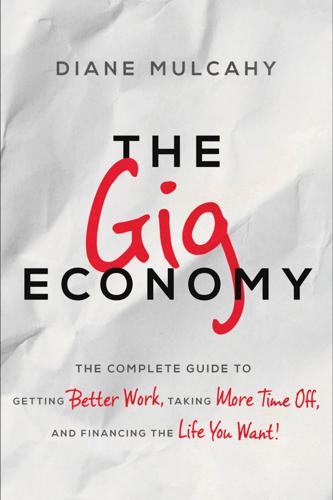
The Gig Economy: The Complete Guide to Getting Better Work, Taking More Time Off, and Financing the Life You Want
by
Diane Mulcahy
Published 8 Nov 2016
In the past, contractor attempts to unionize and bargain have been thwarted by invoking antitrust laws. The argument is that contractors who collectively bargain to set common rates are essentially colluding, which violates antitrust laws. However, in December 2015, the Seattle City Council voted to extend collective bargaining rights to Uber and Lyft drivers.16 In March, the U.S. Chamber of Commerce sued the city of Seattle, saying that the ordinance violates antitrust laws.17 California is expected to introduce a similar bill covering independent contractors who work on on-demand platforms. What most of these proposals have in common is that they attempt to improve the current labor market by eliminating an employer’s ability to arbitrage between employees and contractors, and support worker choices about how to work.

The End of Traffic and the Future of Transport: Second Edition
by
David Levinson
and
Kevin Krizek
Published 17 Aug 2015
On the other hand, that might lead to too few drivers "bidding" on prospective customers. 6. Ride 7. Get out of the Car. 8. Check App to rate the driver. Payment is automatic unless you want to change your payment. 190 Source various, including Oxford Dictionaries http://www.oxforddictionaries.com/definition/english/taxi 191 Bregman, Susan (2015-04-23) Uber and Lyft claim carpooling success. TheTransitWire.com. http://www.thetransitwire.com/2015/04/23/uber-lyft-claim-carpooling-success/ 192 DeAmicis, Carmel (2015-07-18) How Didi Kuaidi Plans to Destroy Uber in China. Re/Code. http://recode.net/2015/07/18/how-didi-kuaidi-plans-to-destroy-uber-in-china/ 193 A longer discussion of our skepticism is here: Levinson (2014-12-01) "It is a Small Market After All" Transportationist blog. http://transportationist.org/2014/12/01/its-a-small-market-after-all-es-gibt-einen-kleinen-markt-uber-alles/ 194 French, Sally (2015-07-01) "An 8-year-old's take on 'Uber for kids'" MarketWatch https://secure.marketwatch.com/story/an-8-year-olds-take-on-uber-for-kids-2015-07-01 195 Zimmerman, Eilene (2016-04-13) "Ride-Hailing Start-Ups Compete in ‘Uber for Children’ Niche” New York Times. http://www.nytimes.com/2016/04/14/business/smallbusiness/ride-sharing-start-ups-compete-in-uber-for-children-niche.html 196 Hatmaker, Taylor (2014-09-08) "Taxi service by women for women launching in New York."

The Captured Economy: How the Powerful Enrich Themselves, Slow Down Growth, and Increase Inequality
by
Brink Lindsey
Published 12 Oct 2017
Research shows that surviving new firms are generally more productive than existing firms, while existing firms have higher productivity than those that go out of business. Occupational licensing, by impeding the formation of new businesses, slows down this vital channel of productivity growth. The advent of app-based ridesharing firms like Uber and Lyft, and the furious resistance they often provoke from supporters of the traditional taxicab industry, offer a powerfully vivid illustration of the conflict between occupational licensing and innovation. The quality of taxi services has long been fodder for consumer grumbling, but improvement through competition was thwarted by restrictive taxi licensing and associated anticompetitive regulations.

Curbing Traffic: The Human Case for Fewer Cars in Our Lives
by
Chris Bruntlett
and
Melissa Bruntlett
Published 28 Jun 2021
And that state of affairs will only be worsened by the (seemingly inevitable) introduction of autonomous cars: “Imagine all of us being in self-driving vehicles. The algorithm of the self-driving car solves all of these conflicts by itself. Imagine doing that for a year, and what that would do to your sense of trust of others.” On a smaller scale, this is already happening with ride-hailing services, such as Uber and Lyft, gradually diminishing our capacity to trust, and willingness to go out of our way to help one another. In both cases, we’re outsourcing these street-level negotiations to an external third party, with little regard of the consequences. One has only to delve into the comment section of an online article to appreciate how important that exposure to social and spatial diversity is in the twenty-first-century city.

Right of Way: Race, Class, and the Silent Epidemic of Pedestrian Deaths in America
by
Angie Schmitt
Published 26 Aug 2020
“Uber IPO,” Financial Times, accessed April 1, 2020, https://www.ft.com/content/b3e70e9e-5c4d-11e9-9dde-7aedca0a081a. 17. Eric Newcomer, “Uber Revenue Slows as Quarterly Loss Surges to $1.1 Billion,” Bloomberg Technology, November 14, 2018, https://www.bloomberg.com/news/articles/2018-11-14/uber-revenue-slows-as-quarterly-loss-surges-to-1-1-billion. 18. Graham Rapier, “Uber and Lyft Are Betting on Self-Driving Cars to Become Profitable. But That May Not Happen, New Research from MIT Suggests,” Business Insider, May 29, 2019, https://www.businessinsider.com/uber-lyft-self-driving-taxis-may-not-help-profitability-mit-2019-5. 19. Dan Albert, telephone interview, October 22, 2019. 20.

Cashing Out: Win the Wealth Game by Walking Away
by
Julien Saunders
and
Kiersten Saunders
Published 13 Jun 2022
Last, you may consider online survey companies like swagbucks.com that will pay out a small amount of money in exchange for your time. 2 | The Gig Economy (Mid- to High Urgency, Low Upside) If you are willing to put forth slightly more effort than keystroking, you can explore the gig economy. The gig economy was born after the Great Recession of 2008 as a way to empower people who had extra time to earn money taking on small tasks, powered by technology. This gave rise to ride-sharing companies like Uber and Lyft, grocery delivery companies like Instacart and Amazon Fresh, and handyman services such as taskrabbit.com. It ranks mid- to high from an urgency standpoint because once you sign up, the platforms do almost all the work to get you your first customers. It’s also mid- to high on upside because with most of these platforms you don’t have to sell a product; you just need to make yourself available and focus on providing good service.
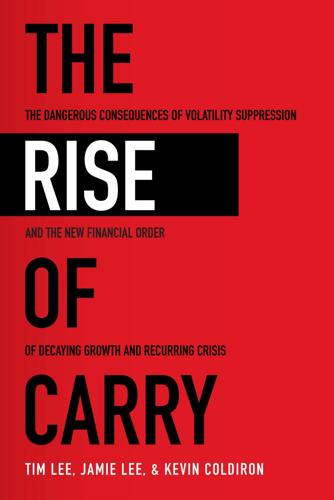
The Rise of Carry: The Dangerous Consequences of Volatility Suppression and the New Financial Order of Decaying Growth and Recurring Crisis
by
Tim Lee
,
Jamie Lee
and
Kevin Coldiron
Published 13 Dec 2019
But for a period, these established stars can be objectively worse—less attractive, less motivated, delivering a less good performance—than the talented nobodies who are next in line behind them, and yet it will still be rational for the director and producer to prefer to hire the stars. This is what celebrity means. That is what cumulative advantage means. Another example is that of network effects and lock-in in business, economics, and technology: the competition between VHS and Betamax, or between Facebook and Myspace and Friendster, or between Uber and Lyft. Betamax is often considered to have been a better technology, but it lost. Today, a direct competitor to Facebook could never succeed, no matter how much better its technology or design or business plan—because the appeal of a social network is the users who are already there, and those users are on Facebook.

Prediction Machines: The Simple Economics of Artificial Intelligence
by
Ajay Agrawal
,
Joshua Gans
and
Avi Goldfarb
Published 16 Apr 2018
If you keep trying new foods in the hope of finding some ideal, you are missing out on a lot of good meals. Judgment, whether by deliberation or experimentation, is costly. Knowing Why You Are Doing Something Prediction is at the heart of a move toward self-driving cars and the rise of platforms such as Uber and Lyft: choosing a route between origin and destination. Car navigation devices have been around for a few decades, built into cars themselves or as stand-alone devices. But the proliferation of internet-connected mobile devices has changed the data that providers of navigation software receive. For instance, before Google acquired it, the Israeli startup Waze generated accurate traffic maps by tracking the routes drivers chose.
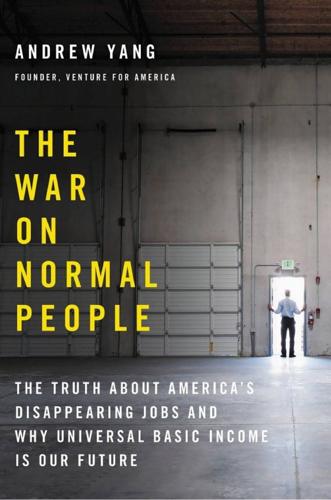
The War on Normal People: The Truth About America's Disappearing Jobs and Why Universal Basic Income Is Our Future
by
Andrew Yang
Published 2 Apr 2018
Other autonomous vehicle companies report similar timelines, with 2020 being the first year of mass adoption. And it’s not just those driving trucks who are at risk. A senior official at one of the major ride-sharing companies told me that their internal projections are that half of their rides will be given by autonomous vehicles by 2022. This has the potential to affect about 300,000 Uber and Lyft drivers in the United States. The replacement of drivers will be one of the most dramatic, visible battlegrounds between automation and the human worker. Companies can eliminate the jobs of call center workers, retail clerks, fast food workers, and the like with minimal violence and fuss. Truck drivers will be different.
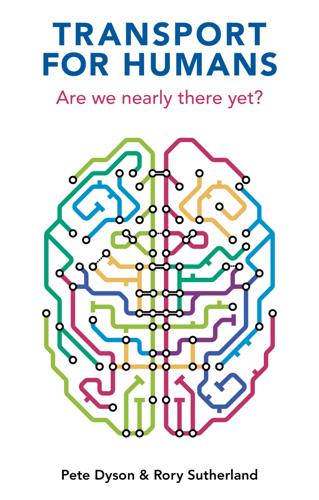
Transport for Humans: Are We Nearly There Yet?
by
Pete Dyson
and
Rory Sutherland
Published 15 Jan 2021
The bad news is that we haven’t been able to get an air bridge, but the good news is that the bus will take you straight to passport control, so you won’t have far to walk. Silver linings need sensitive application, given their potential to be interpreted as spinning a negative as a positive. It’s an upside, not an upgrade. It would be fascinating for operators to collect qualitative and quantitative data to better understand and act on this phenomenon. Uber and Lyft have conducted groundbreaking experiments on passenger behaviour.28 In 2017 they jointly commissioned a team of Chicago-based behavioural economists to design an apology experiment. The companies wanted to discover the best approach to retaining customers who had suffered from delays on a trip they took: a basic apology; a sophisticated apology that conceded the company was at least partly responsible; a discount voucher, with or without an apology; or no apology at all.

API Marketplace Engineering: Design, Build, and Run a Platform for External Developers
by
Rennay Dorasamy
Published 2 Dec 2021
Thankfully, due to the low price point of devices and the widespread availability of mobile data, large percentages of the world’s population are now connected. This has also given rise to a wave of sharing. Services such as Airbnb allow people to rent out a spare room or an entire home. Ride sharing services like Uber and Lyft are super simple to use and are constantly innovating with options such as low-cost trips and package delivery. This has enabled a paradigm shift as it could allow people to not make long-term investments in property and motor vehicles. Future generations may not need a driver’s license as it may be more economical and practical to use ridesharing than owning a car.

Open for Business Harnessing the Power of Platform Ecosystems
by
Lauren Turner Claire
,
Laure Claire Reillier
and
Benoit Reillier
Published 14 Oct 2017
Yet scale can still create some market issues, and any market with few competitors is bound to attract scrutiny. If competition is really only a click away, the platforms are unlikely to be able to exploit their market power. But in some circumstances, if switching is particularly difficult, or if ‘multihoming’ (using similar platforms such as Uber and Lyft at the same time) is for some reason not possible, it could become a concern. Platforms have far more flexible pricing options By virtue of the fact that platforms attract and market to different customer groups in order to enable them to transact, they benefit from enhanced pricing flexibility that is not available to traditional businesses.
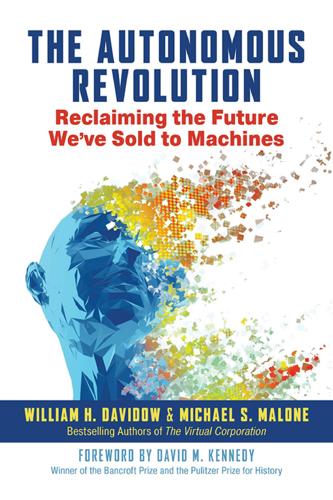
The Autonomous Revolution: Reclaiming the Future We’ve Sold to Machines
by
William Davidow
and
Michael Malone
Published 18 Feb 2020
The sharing economy will have great impact in areas where expensive, privately owned assets are underutilized. Automobiles are one such asset. Privately owned automobiles spend as much as 95 percent of their time parked.42 That means the average car is driven approximately nine hours a week. A number of sharing services have emerged with a goal of monetizing those idle hours. Uber and Lyft are already household names. The twentieth-century relic Zipcar is now owned by Avis.43 New aspirants keep emerging. Getaround allows neighbors to rent cars from other neighbors by the hour, while a competing service, Turo, focuses on longer-term rentals.44 Turo’s website claims that owners can cover their monthly car payments by renting their cars for as few as nine days a month.

Upscale: What It Takes to Scale a Startup. By the People Who've Done It.
by
James Silver
Published 15 Nov 2018
The example I’ll give is Airbnb, which is nights booked. So you have a supply side, and you have a demand side. When there’s a successful transaction in the form of night units for Airbnb, that’s the sign of the marketplace working. So anything you do that’s driving up nights booked [or equivalent] is what you want to do for a marketplace. ‘For Uber and Lyft, it’s rides booked. So they don’t say kilometres driven; they could, and then you could incentivise people to do longer rides, but the theory is that ride length is not very elastic, so using these ride-sharing services for more rides is the right reflection of the utility of those apps.’ And while it’s not always immediately obvious what a company’s North Star metric is, says Grol, without knowing it you are going to have a much more challenging time accelerating the growth of your business.

Ask Your Developer: How to Harness the Power of Software Developers and Win in the 21st Century
by
Jeff Lawson
Published 12 Jan 2021
Suddenly startups that were great at building software, and had no legacy infrastructure or storefronts to deal with, began springing up. These digital native companies focused their early energy on creating great customer experiences, and they used their software-building expertise to their advantage. The new playing field was digital, and they brought an A-game. Uber and Lyft, without owning a single taxi, in less than five years used software to completely overhaul how people get around cities. Airbnb challenged the global hotel industry without owning the real estate. One of my favorite examples is Casper, the mattress company. Casper makes mattresses and distributes them directly to consumers via their website.
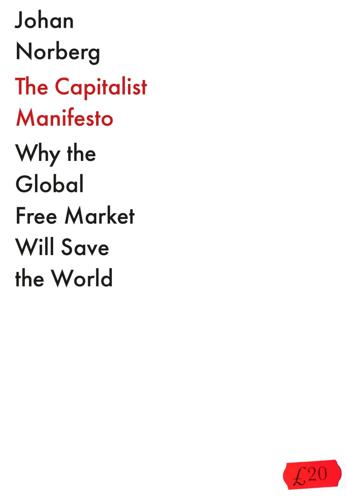
The Capitalist Manifesto
by
Johan Norberg
Published 14 Jun 2023
And in that case, the opportunity to choose when and how much you work is a feature and not a bug, even if the salary might look dismally low when compared to a full-time salary.32 Of course, there is a substantial minority who take these jobs because they don’t have anything else, and then the pressure to accept even lousy job opportunities can be great and satisfaction with the job will be low. But if all other opportunities are worse, it means that this job is the least bad. Another word for ‘least bad’ is ‘best’. Studies of Uber and Lyft drivers in the United States consistently show that between 60 and 70 per cent prefer to have the job as a gig over a permanent job. And this is also the wrong question, since the real choice is between being a gig worker and having a smaller chance of permanent employment, because if companies have to pay fixed salaries and benefits, they will not be able to accept anyone, especially not someone who does not pull in a sufficient number of assignments or is not efficient.
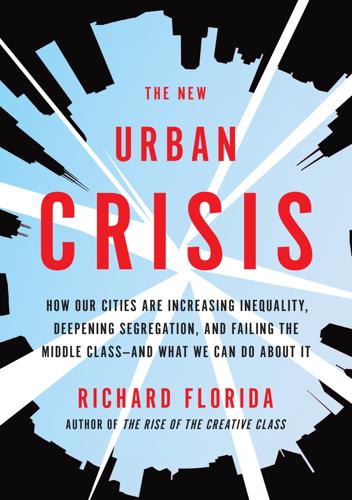
The New Urban Crisis: How Our Cities Are Increasing Inequality, Deepening Segregation, and Failing the Middle Class?and What We Can Do About It
by
Richard Florida
Published 9 May 2016
Cities in other parts of the world, including London, have begun to institute congestion charges, which make drivers pay for their use of busy roads to help alleviate traffic, sprawl, and pollution. New developments like self-driving cars, electric vehicles, and on-demand digital delivery systems, such as Uber and Lyft, will certainly play a big role in the city of the future. But we still need mass transit to provide the connective fiber that will increase clustering and enable the development of a larger number of dense, mixed-use clustered neighborhoods that are affordable to more people. Ultimately, this is not about choosing one form of transportation over another.
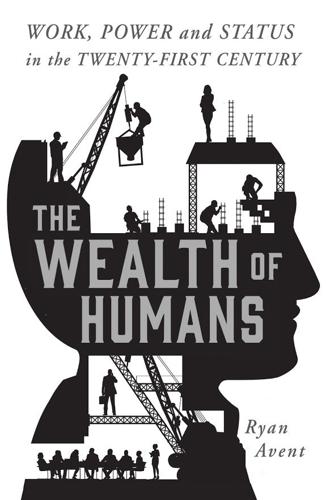
The Wealth of Humans: Work, Power, and Status in the Twenty-First Century
by
Ryan Avent
Published 20 Sep 2016
Today’s labour victories, when they occur, tend to come from straightforward issues for which it is easy to muster broad, passionate electoral support: policies such as a rise in the minimum wage or a reduction in immigration. The more complex negotiations that occurred a generation or two ago, when labour had a seat at the political table, tend not to occur any longer. That could change. Drivers for car-sharing firms, such as Uber and Lyft, are battling to unionize. Unionization could eventually come to other sectors of the economy in which large pools of on-demand labour sell their time through market-making apps as well. Unionization would yield uncertain direct benefits to workers within these firms, though. Short-run concessions wrung from ownership might simply accelerate the pace of automation: troublesome labour tends to encourage the deployment of robots, whether the setting is a factory in Shenzhen or a car on California streets.
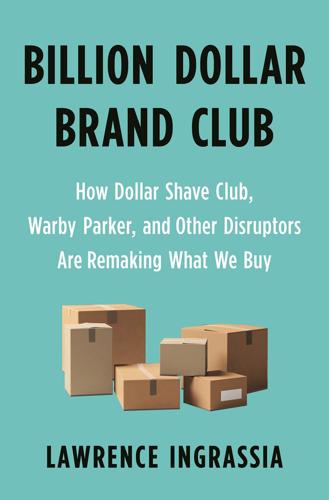
Billion Dollar Brand Club: How Dollar Shave Club, Warby Parker, and Other Disruptors Are Remaking What We Buy
by
Lawrence Ingrassia
Published 28 Jan 2020
Among the early Flexe customers at the Ontario warehouse were the online mattress retailers Casper and Lull; Mohawk, the maker of hOmeLabs brand minifridges and other small appliances; Vive, an online medical device store; and Kangaroo, an outdoor appliance e-tailer. The warehouse’s smallest Flexe customer was Cargo, which sells boxes filled with breath mints, lip balm, beef jerky, candy bars, energy drinks, and aspirin (small-ticket items carried by convenience stores) to Uber and Lyft drivers, who can resell them to their riders and make a few extra bucks. Vive occupied about 50,000 square feet, but Cargo initially occupied fewer than 1,000, with the ability to expand to 2,500, an amount of space that would have been unheard of for a large warehouse to provide to a customer in the past.

AI Superpowers: China, Silicon Valley, and the New World Order
by
Kai-Fu Lee
Published 14 Sep 2018
Peer-to-peer transactions added a new layer of social data atop those economic transactions. The country’s bike-sharing revolution has carpeted its cities in IoT transportation devices that color in the texture of urban life. They trace tens of millions of commutes, trips to the store, rides home, and first dates, dwarfing companies like Uber and Lyft in both quantity and granularity of data. The numbers for these categories lay bare the China-U.S. gap in these key industries. Recent estimates have Chinese companies outstripping U.S. competitors ten to one in quantity of food deliveries and fifty to one in spending on mobile payments. China’s e-commerce purchases are roughly double the U.S. totals, and the gap is only growing.

Driverless: Intelligent Cars and the Road Ahead
by
Hod Lipson
and
Melba Kurman
Published 22 Sep 2016
Figure 12.2 The most common job in most U.S. states in 2014 was truck driving. Source: National Public Radio Truckers won’t be the only ones whose jobs are taken by driverless vehicles. Taxi drivers and chauffeurs will also find themselves out of work. The profession of taxi driving has already been disrupted by the growing popularity of services such as Uber and Lyft, where anybody with a car can become a cabby. Driverless cars will sound the final death knell to the jobs of roughly 233,700 cabbies and chauffeurs employed in the United States.5 Uber’s CEO, Travis Kalanick, believes that the biggest cost component of running a taxi service is paying the car’s driver.
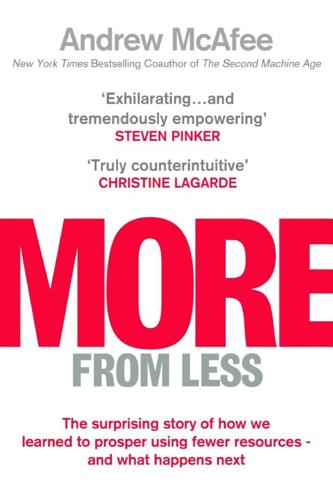
More From Less: The Surprising Story of How We Learned to Prosper Using Fewer Resources – and What Happens Next
by
Andrew McAfee
Published 30 Sep 2019
Now that we have technologies that let us know where every driver, passenger, piece of cargo, and vehicle is at all times, we can greatly increase the utilization and efficiency of every element of transportation. Renting instead of owning transportation is a likely consequence of this shift. Instead of owning cars, which typically sit idle more than 90 percent of the time, more people will choose to access transportation as needed. We’re already seeing this with car-hailing companies such as Uber and Lyft. These services are quickly spreading around the world, and expanding to cover more modes of transportation, from motorbikes to bicycles to electric scooters. They’re also moving into commercial applications such as long- and short-haul trucking. As this shift continues, we’ll need fewer tons of steel, aluminum, plastic, gasoline, and other resources to move the world’s people and goods around.
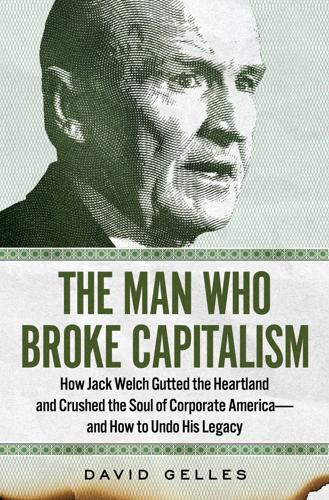
The Man Who Broke Capitalism: How Jack Welch Gutted the Heartland and Crushed the Soul of Corporate America—and How to Undo His Legacy
by
David Gelles
Published 30 May 2022
Even at some of the country’s largest employers, there is a concerted effort to keep workers as close to temps as they can possibly be, with the aspiration of making people as interchangeable as the parts of a machine. The new downsizing takes many forms, depending on the industry. The rise of the gig economy has allowed new multibillion-dollar companies to be built on the backs of a shadow workforce. There are millions of drivers for Uber and Lyft, hundreds of thousands of deliverymen for Instacart and Seamless, and many thousands more offering themselves up for part-time work on sites like TaskRabbit and Upwork. Some of these workers treat the jobs as side hustles, occasional gigs that provide a bit of pocket cash. But for many, gig work is a full-time occupation, only without the security of a steady paycheck, decent benefits, or an employer to hold accountable.

Code Dependent: Living in the Shadow of AI
by
Madhumita Murgia
Published 20 Mar 2024
, The Diplomat, March 12, 2022, https://thediplomat.com/2022/03/will-common-prosperity-reach-chinas-takeout-drivers/. 18 Javier Madariaga et al., ‘Economía de Plataformas y Empleo ¿Cómo Es Trabajar Para Una App En Argentina?’, Centro de Implementación de Políticas Públicas para la Equidad y el Crecimiento (Buenos Aires, May 2019), https://www.cippec.org/wp-content/uploads/2019/05/Como-es-trabajar-en-una-app-en-Argentina-CIPPEC-BID-LAB-OIT.pdf. 19 Kate Conger, ‘A Worker-Owned Cooperative Tries to Compete With Uber and Lyft’, The New York Times, May 28, 2021, https://www.nytimes.com/2021/05/28/technology/nyc-uber-lyft-the-drivers-cooperative.html#:~:text=%E2%80%9CThe%20starting%20point%20for%20this,what%20works%20best%20for%20them.%E2%80%9D. 20 Megan Rose Dickey, ‘The Drivers Cooperative Thinks Ridehailing Should Be Owned by Drivers, Not Venture Capitalists’, Protocol, August 20, 2021, https://www.protocol.com/workplace/drivers-cooperative-uber-lyft. 21 Catrin Nye and Sam Bright, ‘Altab Ali: The Racist Murder That Mobilised the East End’, BBC Online, May 4, 2016, https://www.bbc.co.uk/news/uk-england-london-36191020. 22 Sarah Butler, ‘Uber Drivers Entitled to Workers’ Rights, UK Supreme Court Rules’, The Guardian, February 19, 2021, https://www.theguardian.com/technology/2021/feb/19/uber-drivers-workers-uk-supreme-court-rules-rights#:~:text=It%20ruled%20that%20Uber%20must,challenge%20unfair%20dismissal%2C%20for%20example. 23 ‘Gig Win: Canada Supreme Court Rules in Favour of UberEats Driver’, Al Jazeera, June 26, 2020, https://www.aljazeera.com/economy/2020/6/26/gig-win-canada-supreme-court-rules-in-favour-of-ubereats-driver#:~:text=Canada’s%20Supreme%20Court%20on%20Friday,in%20Canada%20as%20company%20employees.; Christoph Stutz and Andreas Becker, ‘Switzerland: Uber Drivers Qualify as Gainfully Employed from a Social Security Perspective,’ Baker McKenzie, March 29, 2023, https://insightplus.bakermckenzie.com/bm/viewContent.action?
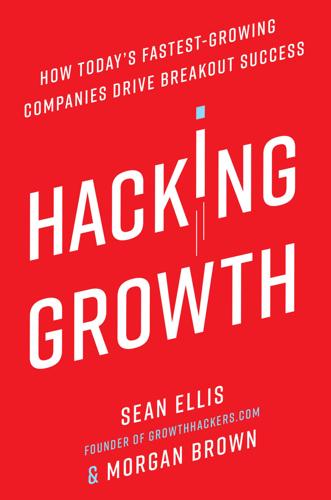
Hacking Growth: How Today's Fastest-Growing Companies Drive Breakout Success
by
Sean Ellis
and
Morgan Brown
Published 24 Apr 2017
Or a business in a “winner take all” situation, where it’s likely that one firm will become overwhelmingly dominant (as is often true for network effect businesses such as LinkedIn or WhatsApp), spending a great deal up front to make a land grab and try to lock in dominance may be a brilliant strategy. Or, if a company is running neck and neck with a strong competitor, as is the case with car-service providers Uber and Lyft, there may be no choice but to spend heavily on acquisition efforts. That’s assuming, of course, that the company has the cash on hand to sustain that up-front spending and a solid plan to recoup it down the line. The amount a company should spend on customer acquisition is not a matter of any preordained formula; it’s a function of many variables specific to each company’s business model, competitive situation, and stage of growth.

Streetfight: Handbook for an Urban Revolution
by
Janette Sadik-Khan
Published 8 Mar 2016
This wave of change has landed on our streets, and these changes will advance how we get around cities and use our streets. A smartphone can eliminate the anxiety of getting around, whether you’re in Boston, Bangalore, or Buenos Aires. But these new apps also pose big questions. While new transportation services like Uber and Lyft (called transportation network companies or TNCs in transport-speak), or shared-vehicle services like Car2Go, Zipcar, and Bridj, are using technology to dramatically lower the operating and entry costs for taxi and car services, they raise questions about social equity, safety, and the true costs of these popular services.

The Corruption of Capitalism: Why Rentiers Thrive and Work Does Not Pay
by
Guy Standing
Published 13 Jul 2016
A feature of all these companies is that they require full access to their clients’ bank accounts and other personal data, which they use to determine whether to provide loans, what interest rate to charge and for how long to lend. THE PLATFORM DEBT MACHINE The misnamed ‘sharing economy’ is also fostering indebtedness. App-based taxi services, such as Uber and Lyft, have tie-ups with lenders that enable drivers to buy vehicles on credit. Big car companies are becoming involved. In January 2016, General Motors announced a deal with Lyft, under which it would supply rental vehicles to Lyft drivers. In 2015, Ford introduced a pilot scheme in London and six US cities allowing customers buying cars on credit to rent them out through peer-to-peer car rental platform companies.
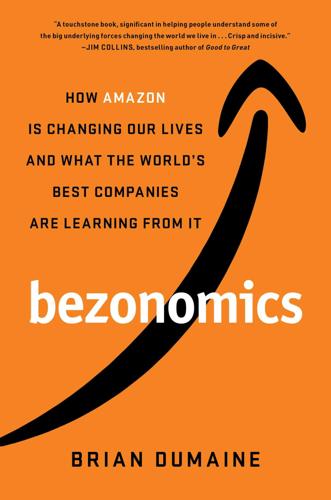
Bezonomics: How Amazon Is Changing Our Lives and What the World's Best Companies Are Learning From It
by
Brian Dumaine
Published 11 May 2020
Nor is Amazon content to fully depend on the local post office or delivery companies such as UPS to move their packages over that crucial last mile from the warehouse to the customer. In 2018, Amazon said it would buy twenty thousand Mercedes vans to launch a program whereby entrepreneurs could, with Amazon’s help, start their own local delivery companies. The company also has a program called Amazon Flex that makes it possible for Uber and Lyft drivers to deliver packages. It’s also experimenting with drone deliveries. It made its first such test delivery in England in 2016 when a drone carried an Amazon Fire TV and a bag of popcorn to a customer near Cambridge. From the time the customer clicked the buy button to the time the drone landed at his home was only thirteen minutes.

The Truth Machine: The Blockchain and the Future of Everything
by
Paul Vigna
and
Michael J. Casey
Published 27 Feb 2018
But it’s worth noting that at the heart of each new Internet application that cuts out some incumbent middleman there has typically been a technology that helps humans deal with their perennial mistrust issues. Who would have thought a decade ago that people would feel comfortable riding in the car of some stranger they’d just discovered on their phones? Well, Uber and Lyft got us over that trust barrier by incorporating a reputation scoring system for both drivers and passengers, one that was only made possible because of the expansion of social networks and communication. Their model showed that if we can resolve our trust issues with technology and give people confidence to transact, those people are willing and able to go into direct exchanges with complete strangers.

Calling Bullshit: The Art of Scepticism in a Data-Driven World
by
Jevin D. West
and
Carl T. Bergstrom
Published 3 Aug 2020
A., et al. “Science, Citation, and Funding.” Science 251 (1991): 1408–11. Tefft, B. C., A. F. Williams, and J. G. Grabowski. “Teen Driver Risk in Relation to Age and Number of Passengers, United States, 2007–2010.” Traffic Injury Prevention 14 (2013): 283–92. Todd W. Schneider (blog). “Taxi, Uber, and Lyft Usage in New York City.” Schneider, Todd. April 5, 2016. http://toddwschneider.com/posts/taxi-uber-lyft-usage-new-york-city/. “Truthiness.” Dictionary.com. http://www.dictionary.com/browse/truthiness. “Use this Equation to Determine, Diagnose, and Repair Trust.” First Round Review. 2018. http://firstround.com/review/use-this-equation-to-determine-diagnose-and-repair-trust/.
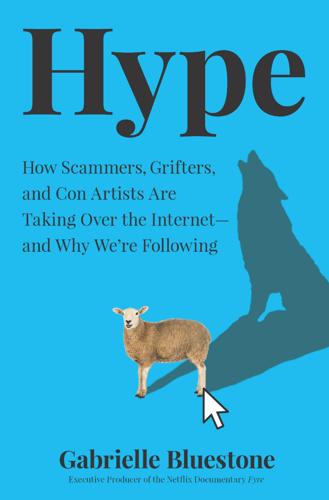
Hype: How Scammers, Grifters, and Con Artists Are Taking Over the Internet―and Why We're Following
by
Gabrielle Bluestone
Published 5 Apr 2021
In a process detailed by the nonprofit consumer advocacy group Public Citizen’s research director Rick Claypool in a 2016 paper, the company would swoop into a city and set up shop, ignoring local regulations and “insisting on the legality of its business.” If officials resisted, the company would mobilize a campaign among their local riders to “save Uber.” The laws they couldn’t skirt, they’d lobby to change. And they’re still doing it: in 2020, Uber and Lyft spent a combined $200 million to pass Prop 22, which exempts them from California’s unconscionable expectations that state employers provide their workers with outrageous benefits like health care and basic labor protections.48 “There is a pattern to Uber’s conflicts with cities,” Claypool noted at the time.

The Elements of Choice: Why the Way We Decide Matters
by
Eric J. Johnson
Published 12 Oct 2021
Climate change: We have seen how defaults can affect choices between green and gray electricity, and how it can make trade-offs between short-term savings and long-term efficiency gains more apparent. It can do more, and these changes are cheap. Inequity: In chapter 1, we talked about how changing the interfaces in cabs and services like Uber and Lyft can increase the tips given to drivers. We also saw how choice architecture can improve schools and increase the uptake of social benefits, like a program to increase kids’ cognitive development. These all are steps to reducing inequity, and they can be less expensive, more efficient, and less controversial than some alternatives.
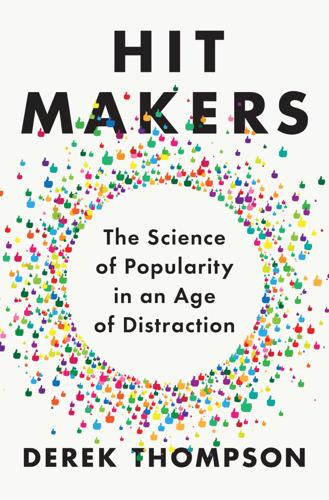
Hit Makers: The Science of Popularity in an Age of Distraction
by
Derek Thompson
Published 7 Feb 2017
(Titanic) or “It’s Toy Story with talking animals!” (The Secret Life of Pets). In Silicon Valley, where venture capitalists also sift through a surfeit of proposals, high-concept pitches are so common that they’re practically a joke. The home rental company Airbnb was once called “eBay for homes.” The on-demand car service companies Uber and Lyft were once considered “Airbnb for cars.” When Uber took off, new start-ups took to branding themselves “Uber for . . .” anything. Creative people often bristle at the suggestion that they have to stoop to market their ideas or dress them in familiar garb. It’s pleasant to think that an idea’s brilliance is self-evident and doesn’t require the theater of marketing.

Frenemies: The Epic Disruption of the Ad Business
by
Ken Auletta
Published 4 Jun 2018
They chart for clients: What messages worked? What doesn’t work? Who comes to the store? Who doesn’t come to the store? It becomes, she believes, “a game changer.” Using this data, the brand can make changes to improve the customer experience and convenience, as Warby Parker has done for eyeglasses and Uber and Lyft have done for transit. Unless big agencies learn to shed old habits, to move faster, she believes they are in danger of plunging down the same rabbit hole as most newspapers. * * * ■ ■ ■ Big data excites Laura O’Shaughnessy, as it does Irwin Gotlieb, Martin Sorrell, Carolyn Everson, Michael Kassan, and the entire marketing industry and its clients.
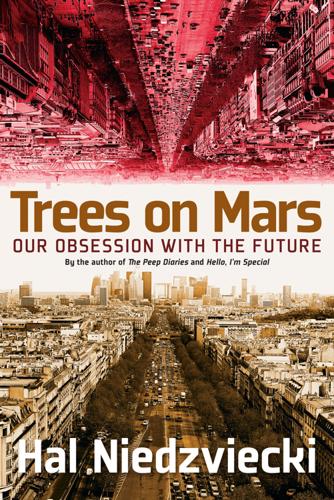
Trees on Mars: Our Obsession With the Future
by
Hal Niedzviecki
Published 15 Mar 2015
Think of the management software that Starbucks uses to decide who should work when in thousands of stores. Think of the ever-expanding category of hubs that connect people who want something done with people who are willing to do that job for them. These are task brokers like Fiverr and Taskrabbit, or driver-on-demand apps like Uber and Lyft—low-wage, task-based labor hubs that take a cut of every transaction but don’t take much, if any, responsibility for the estimated seventeen million or so Americans who work at least part time as “independent contributors.”81 These workers who race around walking dogs, hanging pictures, and giving rides to the airport don’t know what work at what wage they’ll have next day or next week.

Zucked: Waking Up to the Facebook Catastrophe
by
Roger McNamee
Published 1 Jan 2019
With a range of new services catering to their needs, delivered by startups of their peers, the hipsters and bros eventually provoked a reaction. Tangible manifestations of their presence, like the luxury buses that took them to jobs at Google, Facebook, Apple, and other companies down in Silicon Valley, drew protests from peeved locals. An explosion of Uber and Lyft vehicles jammed the city’s streets, dramatically increasing commute times. Insensitive blog posts, inappropriate business behavior, and higher housing costs ensured that locals would neither forgive nor forget. * * * — ZUCK ENJOYED THE KIND OF privileged childhood one would expect for a white male whose parents were medical professionals living in a beautiful suburb.
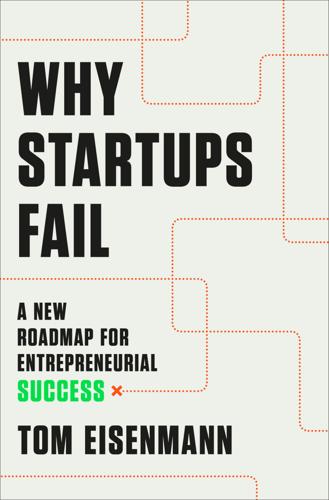
Why Startups Fail: A New Roadmap for Entrepreneurial Success
by
Tom Eisenmann
Published 29 Mar 2021
Fab was copied in Europe by Rocket Internet, a Berlin-based incubator that targets successful U.S. startups. Intense rivalry can have nasty consequences for profitability. New entrants often launch with low prices to gain a foothold, and incumbents must respond with price cuts to protect their market share. And if they vie for the same resources—like drivers, in the case of Uber and Lyft—rivals will bid up costs. Quality and customer service problems. Hypergrowth can strain a startup’s operations and contribute to quality problems—especially when the company relies on large numbers of employees in production and customer service. It can be difficult to hire enough employees to staff these functions, and then train them to get the job done right.

You've Been Played: How Corporations, Governments, and Schools Use Games to Control Us All
by
Adrian Hon
Published 14 Sep 2022
If you believe the now-disputed ten-thousand-hour rule, popularised by Malcolm Gladwell, in which sustained practice of anything for ten thousand hours leads to world-class expertise, the “world as RPG” metaphor will seem apt.18 Our educational system’s gauntlet of school classes, exams, units, certificates, and degrees feels like earning achievements and levelling up in a video game. The recent shift away from jobs for life toward the gig economy complicates this parallel, but another video game concept—short, mission-based tours of duty—works just as well, as Uber and Lyft have discovered. These comparisons are fun or enlightening when kept in context; less so when they distort thinking. Many RPGs like Dragon Age and Persona 5 now feature romance mechanics, where players can form relationships with NPCs and, through diligent completion of side quests and judicious dialogue choices, can fill a notional (though sometimes literal) romance meter.

Lonely Planet Iceland
by
Lonely Planet
KÓPAVOGUR Nature, industry and a lagoon. SELTJARNARNES A scenic peninsula. HAFNARFJÖRÐUR & GARÐABÆR Vikings and distilleries. Find Your Way Reykjavík is a small, walkable city. It’s easy to get around without a car, but you may want to take the bus if you’re heading across town or to a further-flung neighbourhood. Uber and Lyft are not available here, and there are no trains in Iceland. Plan Your Days Whether you’ve got 24 hours or several days, you can make unforgettable memories in Iceland’s capital. Lebowski Bar | KERRY TAYLOR/ALAMY STOCK PHOTO © DAY 1 Morning • Spend your morning at Hallgrímskirkja and take in the views from the top of the tower, then stop at Mokka Kaffi for coffee and a waffle, and take yourself on a street art tour through the city centre.

Together
by
Vivek H. Murthy, M.D.
Published 5 Mar 2020
And my village grew in unexpected ways to include people like the staff at Abe’s Café, where I wrote much of this book, who would often give me an extra serving of my favorite tapioca pearls with an encouraging smile when I was on my tenth hour straight of writing. It also included the babysitters, neighbors, and relatives who stepped in to help care for our children before critical deadlines and Uber and Lyft drivers who frequently offered their takes on the book and some of whose stories are included in these pages. In their own beautiful ways, they reminded me often of the healing power of human connection. We really do need one another. My mother-in-law, Sylvia Chen; father-in-law, Yong-Ming Chen; and sister-in-law, Michelle, put up with many visits that involved me writing endlessly at the dining table or in coffee shops on our visits to see them in California.

Exponential: How Accelerating Technology Is Leaving Us Behind and What to Do About It
by
Azeem Azhar
Published 6 Sep 2021
Lyft’, Bloomberg Second Measure, 2020 <https://secondmeasure.com/datapoints/rideshare-industry-overview/> [accessed 23 September 2020]. 54 ‘Gig Economy Research’, Gov.uk, 7 February 2018 <https://www.gov.uk/government/publications/gig-economy-research> [accessed 21 September 2020]. 55 Ravi Agrawal, ‘The Hidden Benefits of Uber’, Foreign Policy, 16 July 2018 <https://foreignpolicy.com/2018/07/16/why-india-gives-uber-5-stars-gig-economy-jobs/> [accessed 21 September 2020]. 56 Department for Business, Energy & Industrial Strategy, ‘Gig Economy Research’, Gov.uk, 7 February 2018 <https://www.gov.uk/government/publications/gig-economy-research> [accessed 21 September 2020]. 57 Directorate General for Internal Policies, The Social Protection of Workers in the Platform Economy, Study for the EMPL Committee, IP/A/EMPL/2016-11 (European Parliament, 2017). 58 Nicole Karlis, ‘DoorDash Drivers Make an Average of $1.45 an Hour, Analysis Finds’, Salon, 19 January 2020 <https://www.salon.com/2020/01/19/doordash-drivers-make-an-average-of-145-an-hour-analysis-finds/> [accessed 27 March 2021]. 59 Kate Conger, ‘Uber and Lyft Drivers in California Will Remain Contractors’, New York Times, 4 November 2020 <https://www.nytimes.com/2020/11/04/technology/california-uber-lyft-prop-22.html> [accessed 12 January 2021]. 60 Mary-Ann Russon, ‘Uber Drivers Are Workers Not Self-Employed, Supreme Court Rules’, BBC News, 19 February 2021 <https://www.bbc.com/news/business-56123668> [accessed 29 March 2021]. 61 ‘Judgement: Uber BV and Others (Appellants) v Aslam and Others (Respondents)’, 19 February 2021 <https://www.supremecourt.uk/cases/docs/uksc-2019-0029-judgment.pdf> [accessed 19 March 2021]. 62 ‘Frederick Winslow Taylor: Father of Scientific Management Thinker’, The British Library <https://www.bl.uk/people/frederick-winslow-taylor> [accessed 29 March 2021]. 63 Nikil Saval, Cubed: A Secret History of the Workplace (New York: Anchor Books, 2015), p. 42. 64 Saval, Cubed, p. 56. 65 Alex Rosenblat, Tamara Kneese and danah boyd, Workplace Surveillance (Data & Society Research Institute, 4 January 2017) <https://doi.org/10.31219/osf.io/7ryk4>. 66 ‘In March 2017, the Japanese Government Formulated the Work Style Reform Action Plan.’, Social Innovation, September 2017 <https://social-innovation.hitachi/en/case_studies/ai_happiness/> [accessed 6 October 2020]. 67 Alex Hern, ‘Microsoft Productivity Score Feature Criticised as Workplace Surveillance’, The Guardian, 26 November 2020 <http://www.theguardian.com/technology/2020/nov/26/microsoft-productivity-score-feature-criticised-workplace-surveillance> [accessed 1 April 2021]. 68 Stephen Chen, ‘Chinese Surveillance Programme Mines Data from Workers’ Brains’, South China Morning Post, 28 April 2018 <https://www.scmp.com/news/china/society/article/2143899/forget-facebook-leak-china-mining-data-directly-workers-brains> [accessed 6 October 2020]. 69 Robert Booth, ‘Unilever Saves on Recruiters by Using AI to Assess Job Interviews’, The Guardian, 25 October 2019 <http://www.theguardian.com/technology/2019/oct/25/unilever-saves-on-recruiters-by-using-ai-to-assess-job-interviews> [accessed 6 October 2020]. 70 Chartered Institute of Personnel and Development, ‘Workplace Technology: The Employee Experience’ (CIPD: July 2020) <https://www.cipd.co.uk/Images/workplace-technology-1_tcm18-80853.pdf> [accessed 19 May 2021]. 71 Sarah O’Connor, ‘When Your Boss Is an Algorithm’, Financial Times, 7 September 2016 <https://www.ft.com/content/88fdc58e-754f-11e6-b60a-de4532d5ea35> [accessed 3 August 2020]. 72 Tom Barratt et al., ‘Algorithms Workers Can’t See Are Increasingly Pulling the Management Strings’, Management Today, 25 August 2020 <http://www.managementtoday.co.uk/article/1692636?

Arriving Today: From Factory to Front Door -- Why Everything Has Changed About How and What We Buy
by
Christopher Mims
Published 13 Sep 2021
By being a gigantic, highly visible company that offers above-market wages, plus health-care benefits starting on day one, Amazon is able to attract huge numbers of applicants. And because it relentlessly pursues automation to make the jobs of its workers ever simpler and more error-proof, it can attract and productively employ huge numbers of potential associates regardless of their level of skill or education. The genius of ride-sharing companies Uber and Lyft (not to mention delivery start-ups Postmates and Instacart) is that thanks to two-sided marketplaces run by software, route-planning algorithms, and GPS, all you need to know to work for these companies is how to drive a car. In the same way, the genius of Amazon is that all you need to possess in order to work in one of its warehouses are sensorimotor skills most people acquired by the time they’re in grade school.

Chokepoint Capitalism
by
Rebecca Giblin
and
Cory Doctorow
Published 26 Sep 2022
In California, the fight to enshrine worker misclassification in law hit a peak in 2020, when gig economy companies spent an unprecedented $200 million to pass Proposition 22—outspending nearly all the races for actual seats in the state legislature combined.11 Predictably, California businesses started firing their “essential” workers within weeks of its passage, replacing them with scabs whose boss was an app.12 As we go to press, Uber and Lyft are leading a charge to spend $100 million to put a Prop 22–style measure on the ballot in Massachusetts for the 2022 mid-term elections (one spot of good news: a drafting error in California’s Prop 22 led to a court’s invalidating the measure, though the state Supreme Court was yet to rule on the appeal as we went to press).
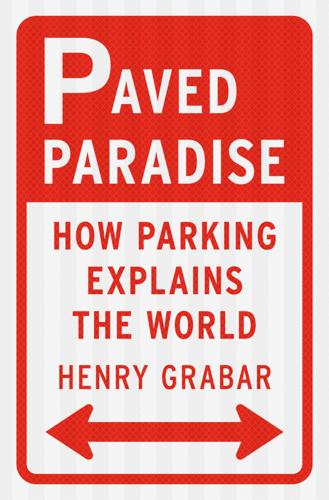
Paved Paradise: How Parking Explains the World
by
Henry Grabar
Published 8 May 2023
The mood at the conference in Orlando in 2019 was one of gentle defiance: Christine Banning, the president of the sixty-eight-year-old trade group, set the tone in an early address: “There is so much in the media ‘Parking is dead,’ ” she cried. “If I see one more report, I don’t know what I’m going to do.” In fact, as Banning spelled out, things were looking pretty sunny for parking that fall: autonomous cars had failed to materialize, Uber and Lyft were still pouring billions of dollars down the drain, millennials were finally buying cars. The pandemic was still six months away. “That normal human life pattern is taking shape,” Banning observed of millennial car buying, “and there’s a bright future ahead of us.” Despite America’s surplus of free parking and Americans’ related hatred for paying for it, commercial parking is a lucrative business because parkers receive a great deal of help on both sides of the ball.

The People vs. Democracy: Why Our Freedom Is in Danger and How to Save It
by
Yascha Mounk
Published 15 Feb 2018
For a good overview, see Valerio De Stefano, “The Rise of the ‘Just-in-Time Workforce’: On-Demand Work, Crowdwork, and Labor Protection in the ‘Gig-Economy,’” Comparative Labor Law and Policy Journal 37, no. 3 (2016): 471–503. Note that even robust political approaches to the regulation of the gig economy, like a recent speech by Senator Elizabeth Warren that was widely portrayed as hostile to Uber and Lyft, seek to regulate rather than to fight these new industries. Elizabeth Warren, “Strengthening the Basic Bargain for Workers in the Modern Economy,” Remarks, New American Annual Conference, May 19, 2016, https://www.warren.senate.gov/files/documents/2016-5-19_Warren_New_America_Remarks.pdf. 9.

User Friendly: How the Hidden Rules of Design Are Changing the Way We Live, Work & Play
by
Cliff Kuang
and
Robert Fabricant
Published 7 Nov 2019
The number was arbitrary, and the goal essentially meaningless. But for the goal to work, it didn’t have to mean anything. It just had to be slightly out of reach—much like how the final reel on a slot machine will slow down to make you think you’re just about to hit three cherries, then slip by at the last moment. Uber and Lyft both tantalize drivers with another feature, which Uber calls “forward dispatch,” that queues up the next drive before the present one has ended—much like Netflix queues up the next episode of a series. “It requires very little effort to binge on Netflix; in fact, it takes more effort to stop than keep going,” noted the scholars Matthew Pittman and Kim Sheehan.
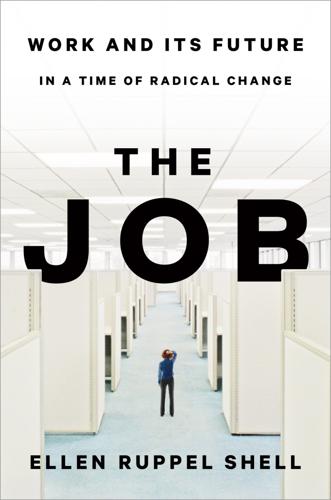
The Job: The Future of Work in the Modern Era
by
Ellen Ruppel Shell
Published 22 Oct 2018
Starting with the economic meltdown and continuing through the recovery, the number of Americans working for contract agencies rose to sixteen million—a faster rate of growth than that of overall employment. Such statistics make clear what reported labor numbers do not: that the economic recovery brought a dramatic rise in temporary contracts (at an average duration of about three months) as well as a growth in independent contractors tied to labor platforms like Uber and Lyft. The pay for these “alternative” gigs typically averages about $17 an hour, compared with the US average of $24.57 an hour. Often they are part time, occasional, or seasonal. In Irving, contract employees working at Amazon received about $8 an hour, minus a portion retained by the employment agency for transportation and check-cashing fees.

Blockchain Revolution: How the Technology Behind Bitcoin Is Changing Money, Business, and the World
by
Don Tapscott
and
Alex Tapscott
Published 9 May 2016
Blockchain technology will accelerate this process. As the Internet of Things takes hold, these trends will go into hyperdrive. THE FUTURE: FROM UBER TO SUBER We’ve covered a lot of ground in this chapter. Now let’s pull all the strands of innovation together in just one scenario. Consider service aggregators like Uber and Lyft. Uber is an app-based ride-sharing network of drivers who are willing to give other people a lift for a fee. To use Uber, you download the Uber app, create an account, and provide Uber with your credit card information. When you use the app to request a car, it asks you to select the type of car you want and marks your location on a map.
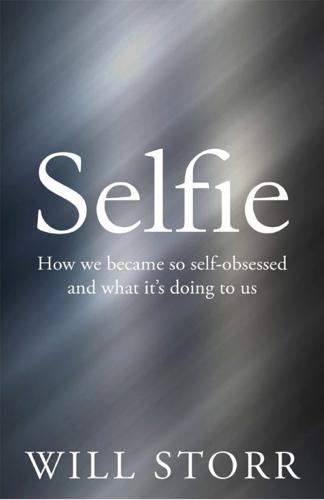
Selfie: How We Became So Self-Obsessed and What It's Doing to Us
by
Will Storr
Published 14 Jun 2017
We began talking about the role of government, and collective projects for the common good, and it quickly became clear he was deeply sceptical. ‘It’s kind of a weird thing, when people say we need to do things for the common good,’ he said. ‘Tech companies made it so that I could get a ride anywhere in the city for five dollars, door to door, and split it with two people. San Francisco would be impossible without Uber and Lyft. And then the city come here and fine me because people put graffiti on my windows.’ ‘They fine you?’ I said. I could see why that would be annoying. ‘There are times where some of us have said, “Can you imagine where we did an experiment where Google took over what City Hall does now?”’ he said.
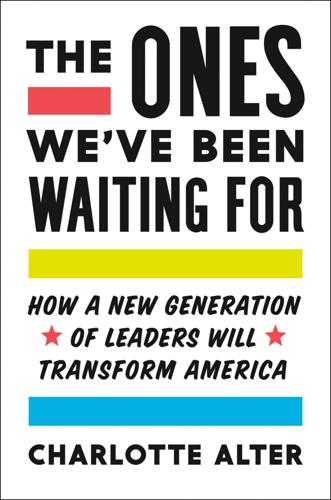
The Ones We've Been Waiting For: How a New Generation of Leaders Will Transform America
by
Charlotte Alter
Published 18 Feb 2020
When big purchases such as homes and cars were out of the question, many millennials figured they might as well spend their money on things like specialty cronuts and fancy coffees. They tended to prefer experiences over possessions. And a generation steeped in social networks became increasingly comfortable renting things instead of owning them: millennials rented rides (with Uber and Lyft), rented clothes (through Rent The Runway), and rented labor (through TaskRabbit). They also began to look to the gig economy for side hustles to supplement their meager incomes. By 2018, more than 40 percent of eighteen- to thirty-four-year-olds worked as freelancers. For almost half of the largest generation of workers, the traditional work structure that had defined twentieth-century professional life just wasn’t available anymore.

The Contrarian: Peter Thiel and Silicon Valley's Pursuit of Power
by
Max Chafkin
Published 14 Sep 2021
But, of course, Airbnb and Lyft also had implications beyond neighborliness. They were projects designed to reshape labor markets, removing the protections that workers had enjoyed since the New Deal, which was among the worst developments in American political history, as far as Thiel was concerned. Uber and Lyft drivers, TaskRabbit and Postmates workers, and the part-time hoteliers of Airbnb were not employees and couldn’t be by definition. That meant the app companies they worked for—Thiel’s portfolio companies—were under no obligation to provide for their health insurance or retirement or to negotiate with unions that represented them.
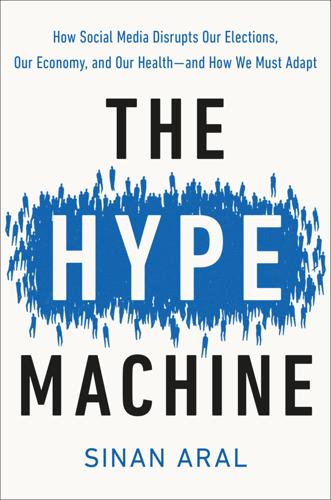
The Hype Machine: How Social Media Disrupts Our Elections, Our Economy, and Our Health--And How We Must Adapt
by
Sinan Aral
Published 14 Sep 2020
People who have had average experiences aren’t compelled to review them. So ratings oversample good and bad experiences and sample good experiences at a higher rate than bad ones. Another contributing factor occurs when we agree to mutually beneficial outcomes with our transaction partners. For example, a simple trick enables riders and drivers on Uber and Lyft to collude to give each other good ratings. As you’re leaving an Uber, you ask, “Five for five?” meaning “I’ll give you five stars if you return the favor,” a practice that contributes to ratings inflation. Finally, as we saw in our ratings experiment, social influence bias favors positive herding over negative herding.
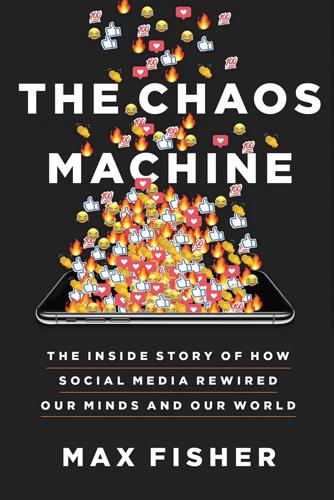
The Chaos Machine: The Inside Story of How Social Media Rewired Our Minds and Our World
by
Max Fisher
Published 5 Sep 2022
If governments or journalists objected, it was just the old incumbents clinging to authority that was no longer theirs. This sense of divine mission drove the angel investors of Generation PayPal who selected the startups and founders to remake the world around their vision. They called it disrupting incumbents. Uber and Lyft would not just offer a new way to hail taxis, they would abolish and replace the old one. Airbnb would disrupt short-term housing. All three were PayPal alumni investees. Many others pursued the same violent displacement. Amazon and physical retail, Napster and music. Only a few, like Thiel, seriously suggested doing to global governance what Uber had done to ridesharing.

Data and Goliath: The Hidden Battles to Collect Your Data and Control Your World
by
Bruce Schneier
Published 2 Mar 2015
We used to pay with coins at a tollbooth, subway turnstile, or parking meter. Now we use automatic payment systems, such as EZPass, that are connected to our license plate number and credit card. Taxis used to be cash-only. Then we started paying by credit card. Now we’re using our smartphones to access networked taxi systems like Uber and Lyft, which produce data records of the transaction, plus our pickup and drop-off locations. With a few specific exceptions, computers are now everywhere we engage in commerce and most places we engage with our friends. Last year, when my refrigerator broke, the serviceman replaced the computer that controls it.

The Rise and Fall of the Neoliberal Order: America and the World in the Free Market Era
by
Gary Gerstle
Published 14 Oct 2022
Wired, September 14, 2018, https://www.wired.co.uk/article/what-is-the-gig-economy-meaning-definition-why-is-it-called-gig-economy, accessed September 8, 2021; Jill Lepore, “What’s Wrong with the Way We Work,” New Yorker, January 11, 2021, https://www.newyorker.com/magazine/2021/01/18/whats-wrong-with-the-way-we-work, accessed June 28, 2021; E. Tammy Kim, “The Gig Economy Is Coming for Your Job,” New York Times, January 10, 2020, https://www.nytimes.com/2020/01/10/opinion/sunday/gig-economy-unemployment-automation.html, accessed September 8, 2021; Aarian Marshall, “With $200 Million, Uber and Lyft Write Their Own Labor Law,” Wired, April 11, 2020, https://www.wired.com/story/200-million-uber-lyft-write-own-labor-law/, accessed September 8, 2021. For the origins of Uber and Airbnb specifically, see Brad Stone, The Upstarts: Uber, Airbnb and the Battle for the New Silicon Valley (London: Corgi, 2018); Leigh Gallagher, The Airbnb Story: How to Disrupt an Industry, Make Billions of Dollars . . . and Plenty of Enemies (London: Virgin Books, 2018); Mike Isaac, Super Pumped: The Battle for Uber (New York: W.

There Is No Place for Us: Working and Homeless in America
by
Brian Goldstone
Published 25 Mar 2025
As Maurice loaded their things, Natalia locked their room for the last time. “Y’all taking off?” Natalia turned and saw Drea, a woman in her early thirties who lived at the hotel with her kindergarten-age daughter. She and Natalia had gotten to know each other in recent months. Before the pandemic, Drea had been a driver for Uber and Lyft, and when her daughter’s school closed she got by on unemployment insurance, expanded under the CARES Act to cover gig workers like her. But those payments had ended in late July. Lacking childcare and unable to find remote work, she had now fallen behind on rent and was facing an impending lockout.
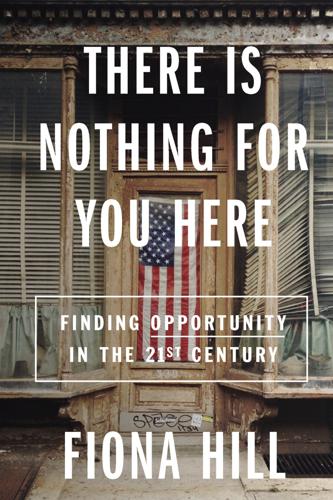
There Is Nothing for You Here: Finding Opportunity in the Twenty-First Century
by
Fiona Hill
Published 4 Oct 2021
Service jobs that depended directly on consumer spending by America’s affluent were dramatically cut by wealthy households forgoing cleaning, child care, eating out, and sports and entertainment during locally imposed lockdowns—or simply because people were concerned about contracting the virus and decided to self-isolate. Ride-share services like Uber and Lyft, which had offered part-time and supplemental opportunities for many workers on the bottom rung of the employment ladder, who were juggling several jobs at once to earn a decent income, were also hard-hit. Although the pandemic expanded the idea of “essential workers” to frontline employees in online shopping warehouses and delivery services, grocery stores, and food production—many of whom retained their jobs and had their pay increased—COVID-19 had a huge negative impact on their already precarious health.

The Price of Time: The Real Story of Interest
by
Edward Chancellor
Published 15 Aug 2022
As one tech analyst commented: ‘The rise in unprofitable IPOs reflects the general preference in both public and private markets for growth over profitability.’18 Silicon Valley’s unicorns attracted higher valuations at each funding round, even as losses outpaced sales. A fortunate few, such as Uber and Lyft, made it to the public markets, where they jostled for attention with another company that had long promised, or rather over-promised, the imminent arrival of self-driving cars. In 2017, the market capitalization of Elon Musk’s Tesla Inc. accelerated past General Motors.19 Three years later, Tesla was valued at more than Toyota, even though the Japanese car maker produced over twenty times as many vehicles.

The Power Law: Venture Capital and the Making of the New Future
by
Sebastian Mallaby
Published 1 Feb 2022
Given these incumbent advantages, blitzscaling that helps insurgents may be a leveler, not a distorter. In ride hailing, for example, the incumbent taxi operators often had municipal regulators in their pockets. Cheap venture dollars served to balance that unfair advantage.[33] “You can make the case that if Uber and Lyft and Airbnb hadn’t blitzscaled, they would have been tied up in bureaucratic red tape, and the future they are trying to build wouldn’t just have happened more slowly. It would never have happened,” O’Reilly himself comments. Theoretically, a really huge amount of venture dollars might represent an overcorrection: when buccaneers like Masayoshi Son are setting the pace, the anti-blitzscaling critique may have merit.

The Code: Silicon Valley and the Remaking of America
by
Margaret O'Mara
Published 8 Jul 2019
By the end of 2016, Android phones made up over 80 percent of the global market, and over half of Google’s revenue came from mobile.8 The entry into the phone market was even more profitable for Apple. Ten years after its introduction, over one billion iPhones had been sold worldwide. It was the bestselling consumer product in human history. Having a geolocated, camera-equipped supercomputer in millions of pockets jump-started whole new business categories, such as ride-sharing (Uber and Lyft), local search (Yelp), and short-term rentals (Airbnb). It further spiked the growth of social media, launching born-mobile apps (Instagram, Snapchat) and turning existing networks into even more potent vehicles for advertising and sales. The switch to mobile made Facebook’s user base grow even faster.
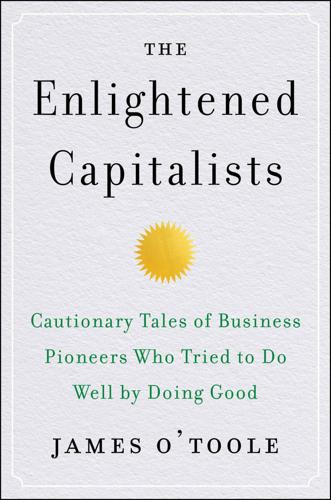
The Enlightened Capitalists
by
James O'Toole
Published 29 Dec 2018
And I have not even mentioned the looming negative effects of automation on tomorrow’s workforce, nor dealt with the problem of foreign outsourcing. And, to offer a specific example, I have failed to examine the consequences for former taxi drivers of the upheaval in their lives caused by the advent of Uber and Lyft. Many of those men and women had been members of long-standing worker cooperatives offering health insurance and a sense of community. Then there is the unsettling fact that most new jobs being created today are in low-paying industries—in hotels, restaurants, and discount retailing—where worker skills are seldom developed and such benefits as health insurance are rare.2 Taken together, these trends threaten to leave countless people in Britain and America without meaningful employment in traditional organizations.

Lonely Planet Iceland
by
Lonely Planet
Local bus networks operate in Akureyri, Ísafjörður, and the Reykjanesbær and Eastfjords areas. Taxi Most taxis in Iceland operate in the Reykjavík area, but many of the larger towns also offer services. Outside of Reykjavík, it’s usually wise to prebook. Taxis are metered and can be pricey. Tipping is not expected. At the time of research, there were no Uber and Lyft services in Iceland (yet). Language Behind the Scenes Send Us Your Feedback We love to hear from travellers – your comments keep us on our toes and help make our books better. Our well-travelled team reads every word on what you loved or loathed about this book. Although we cannot reply individually to postal submissions, we always guarantee that your feedback goes straight to the appropriate authors, in time for the next edition.

Capitalism and Its Critics: A History: From the Industrial Revolution to AI
by
John Cassidy
Published 12 May 2025
“By reducing the share of economic activity over which capitalist firms have a comparative advantage, the first and the third solution—team-based open source and the gig economy—shrink capitalism,” Bowles and Carlin wrote. “The second—Amazon-type monitoring—has convinced many that capitalism should be shrunk.”55 Bowles and Carlin weren’t endorsing the pernicious practices of platform companies like Uber and Lyft. They were pointing out that doing gig work is different from being employed on a full-time basis—they compared it to the preindustrial “putting out” system—and pointing out that technology-driven capitalism was, to some extent, eating itself. They also argued that this cannibalization was creating space for new economic ideas and alternative economic forms, such as not-for-profits, worker-owned cooperatives, and community-organized public commons, which had broad appeal across the entire left and possibly beyond it.

Lonely Planet Washington, Oregon & the Pacific Northwest
by
Lonely Planet
Taxis charge around $35 to $40 (not including tip) from the airport to downtown. For app-based ride-share service with Uber, Lyft and Wingz, there is a dedicated pick-up zone on the airport’s lower level. Walk outside toward island two, where you’ll find pick-up lines separated by company. With Uber and Lyft, you’ll receive a PIN number in the app upon requesting a ride. When it’s your turn in line, show this PIN to the next available driver, who will enter it into their system and pull up your destination information. PUBLIC TRANSPORTATION Portland has good public transportation that can get you nearly everywhere.

The Radical Fund: How a Band of Visionaries and a Million Dollars Upended America
by
John Fabian Witt
Published 14 Oct 2025
Post, Citizens Divided: Campaign Finance Reform and the Constitution (Harvard University Press, 2014). Labor: Kate Andrias and Benjamin I. Sachs, “Constructing Countervailing Power: Law and Organizing in an Era of Political Inequality,” Yale Law Journal 130 (2021): 546; Kate Andrias, Sharon Block, and Benjamin Sachs, “A New Path for Unionizing Uber and Lyft,” Commonwealth Beacon, Dec. 2, 2023; Veena Dubal, “The Legal Uncertainties of Gig Work,” in The Oxford Handbook of the Law of Work, ed. Guy Davidov, Brian Langille, and Gillian Lester (Oxford University Press, 2024); Cynthia L. Estlund, “The Ossification of American Labor Law,” Columbia Law Review 102 (2002): 1527. 11.